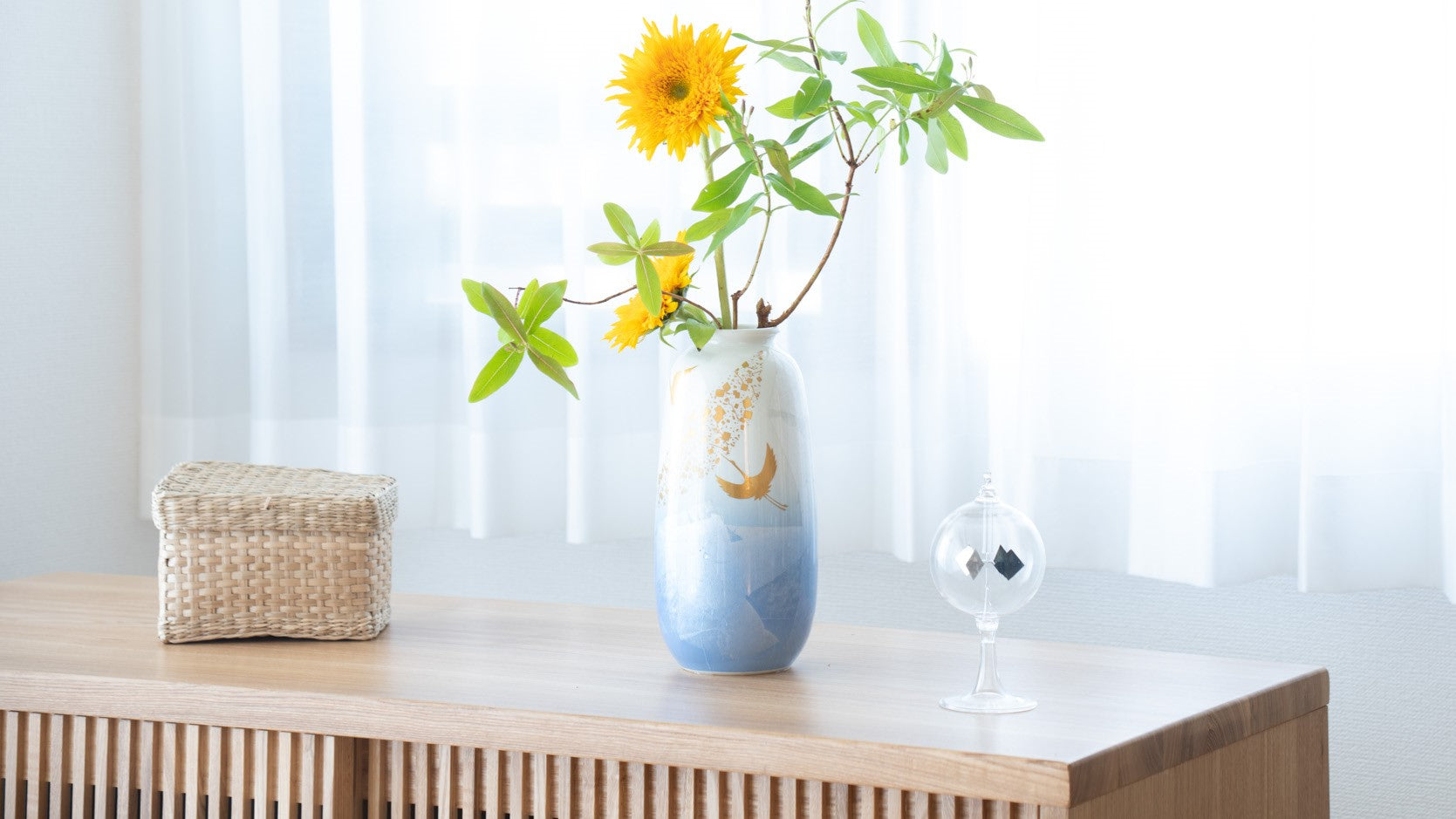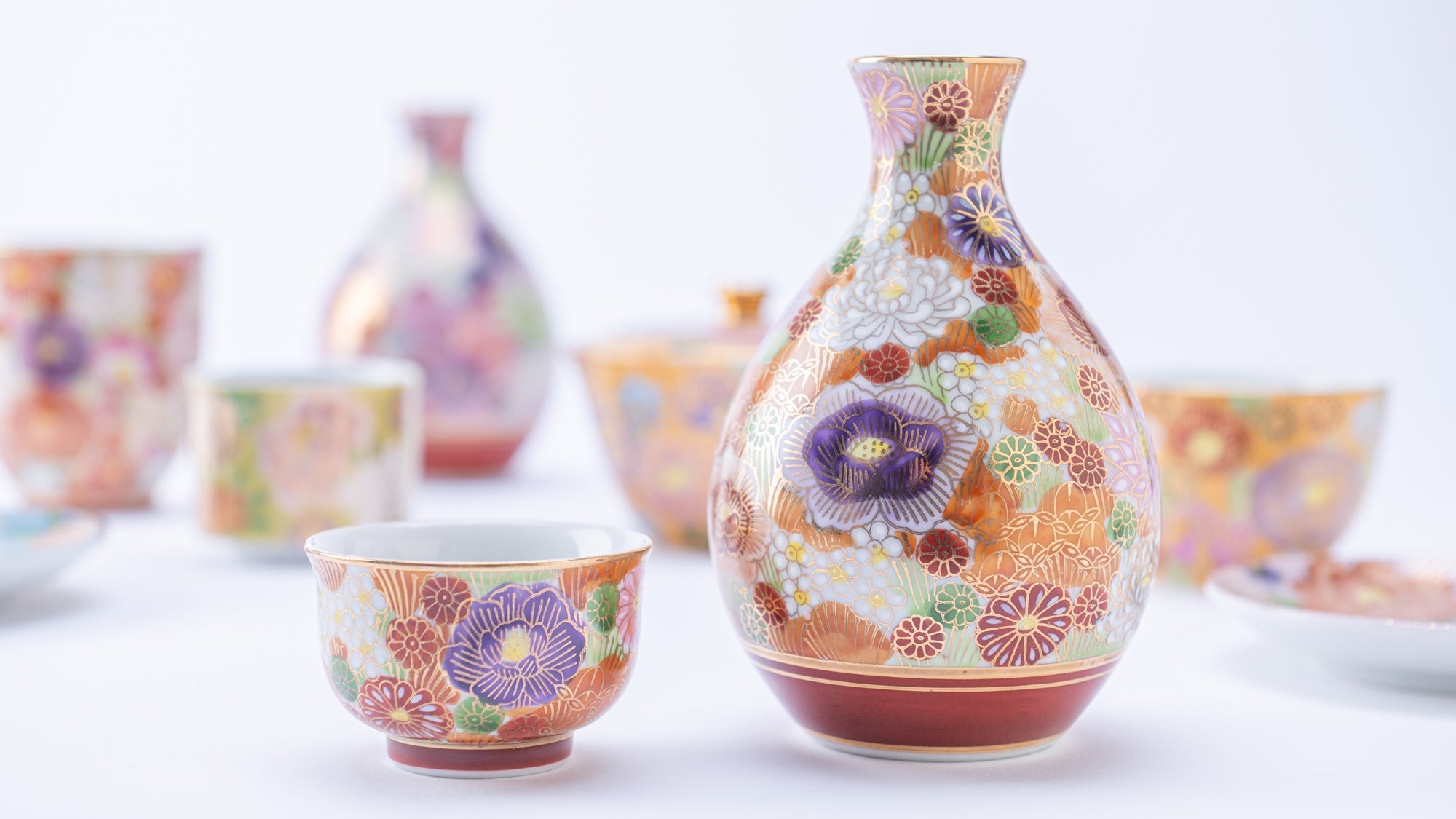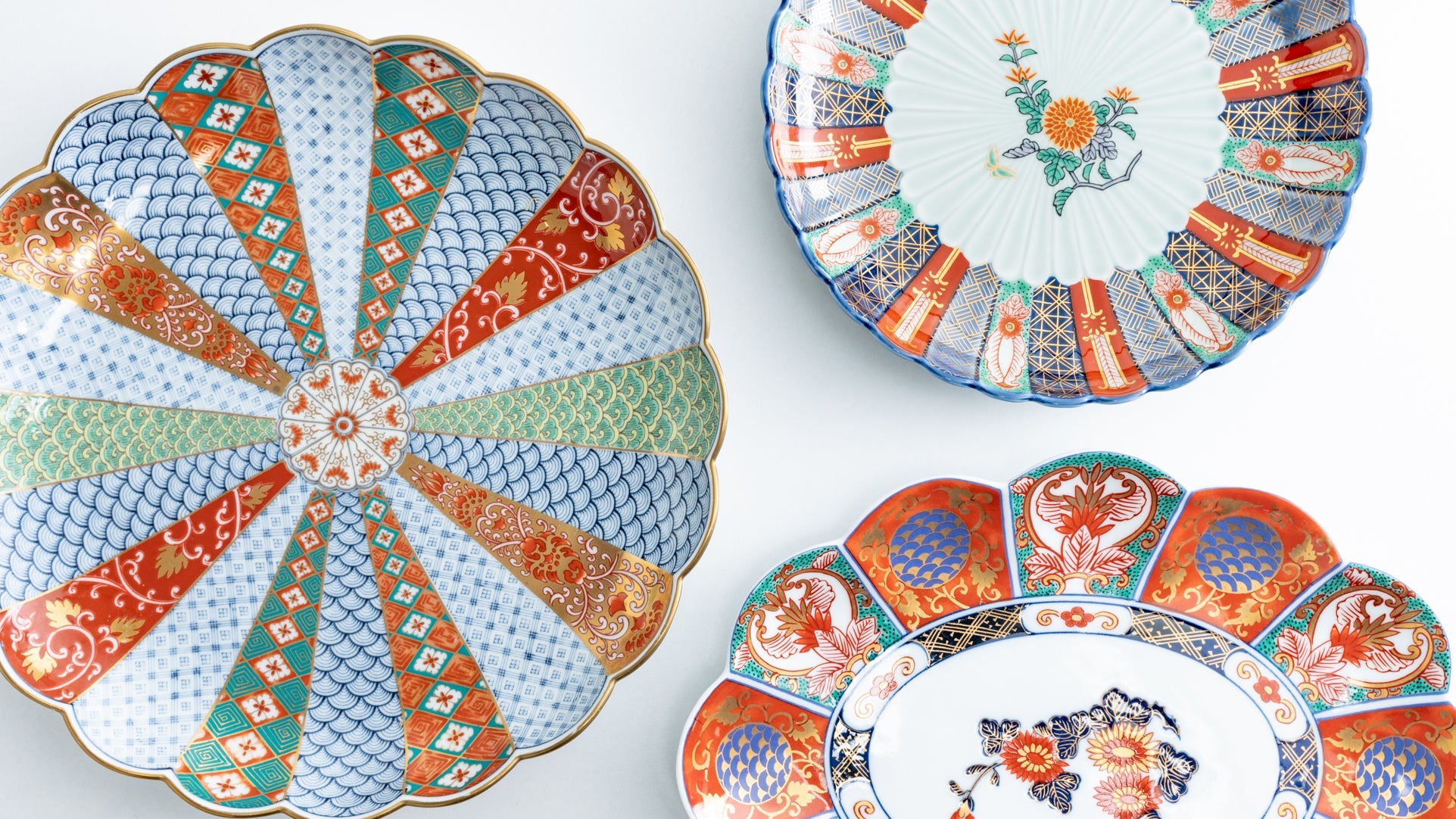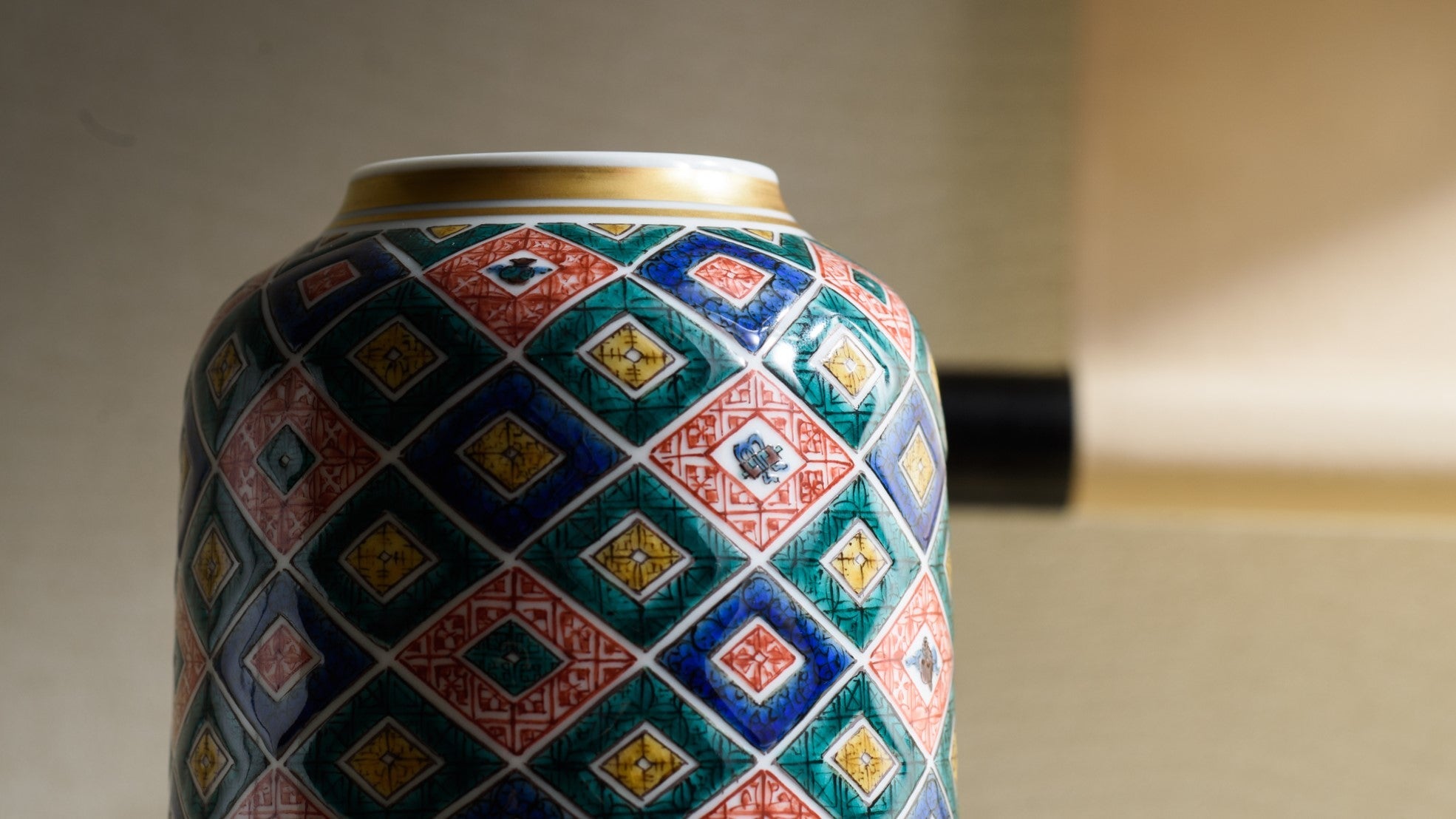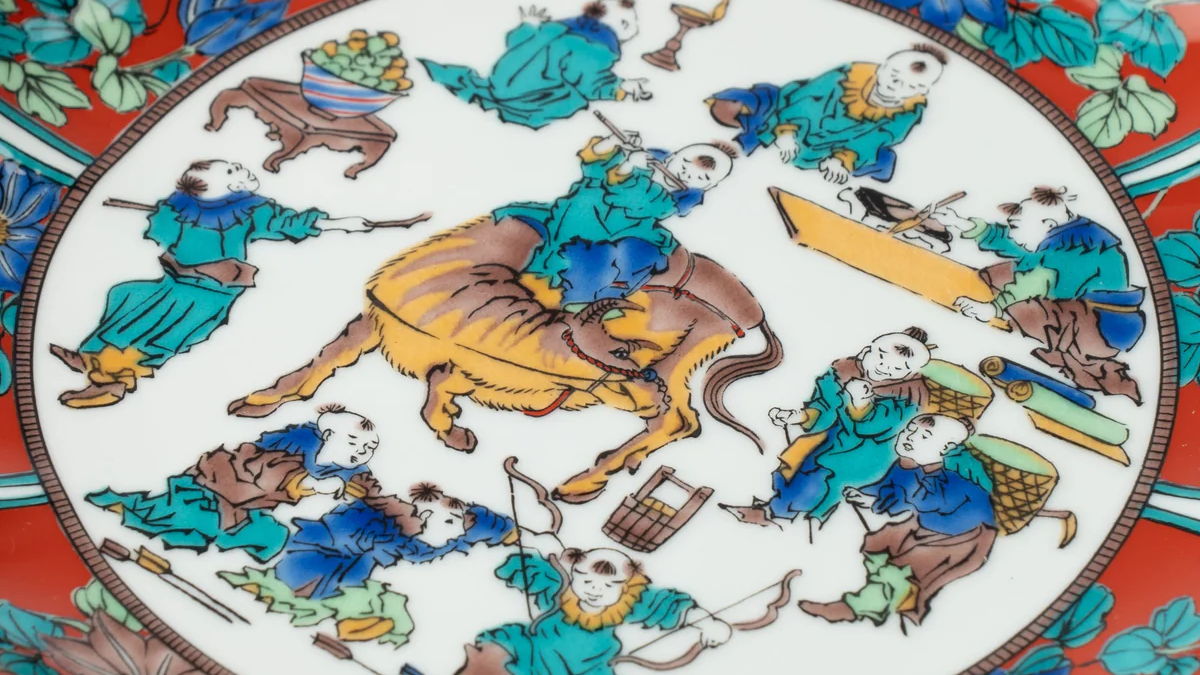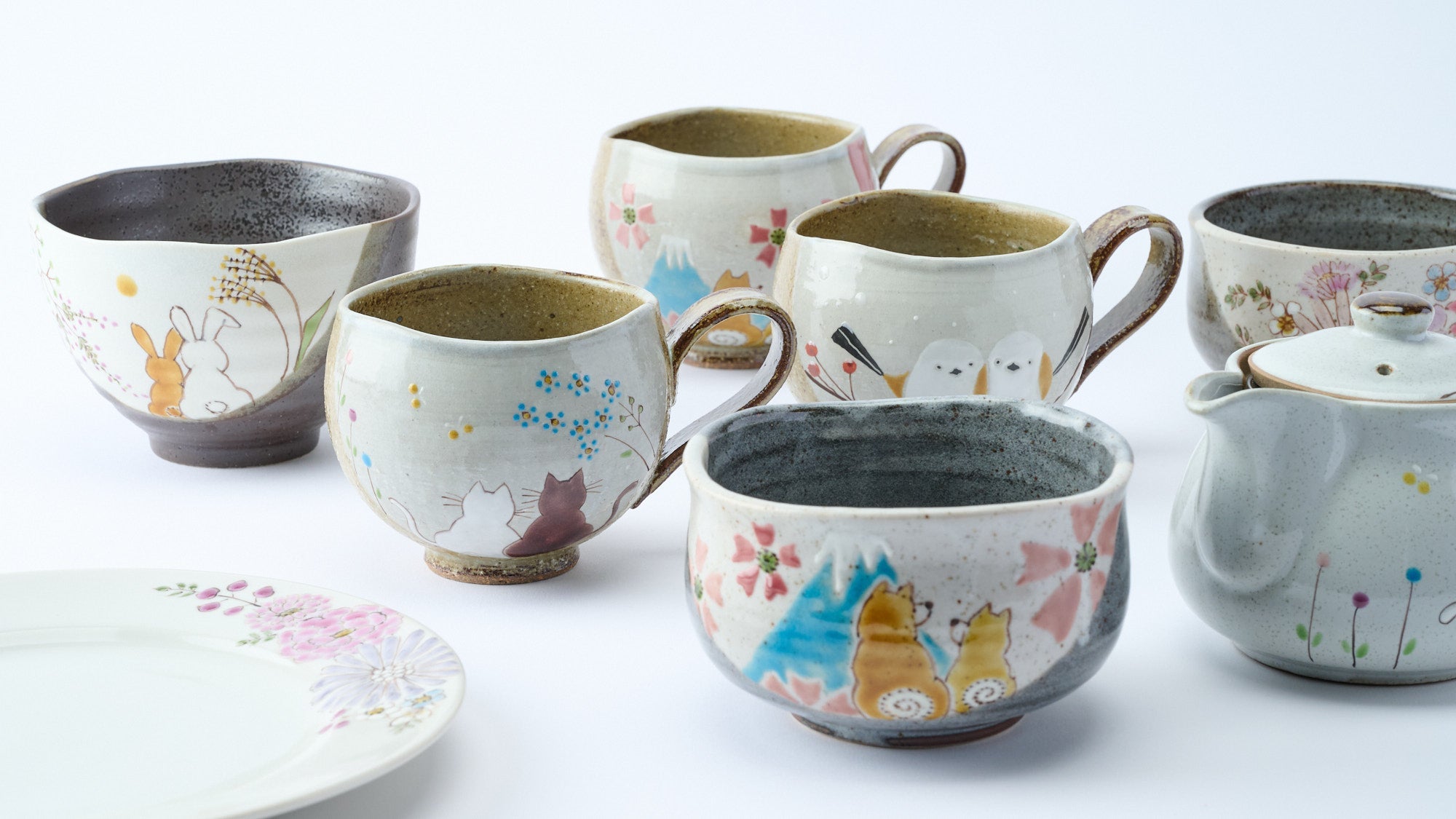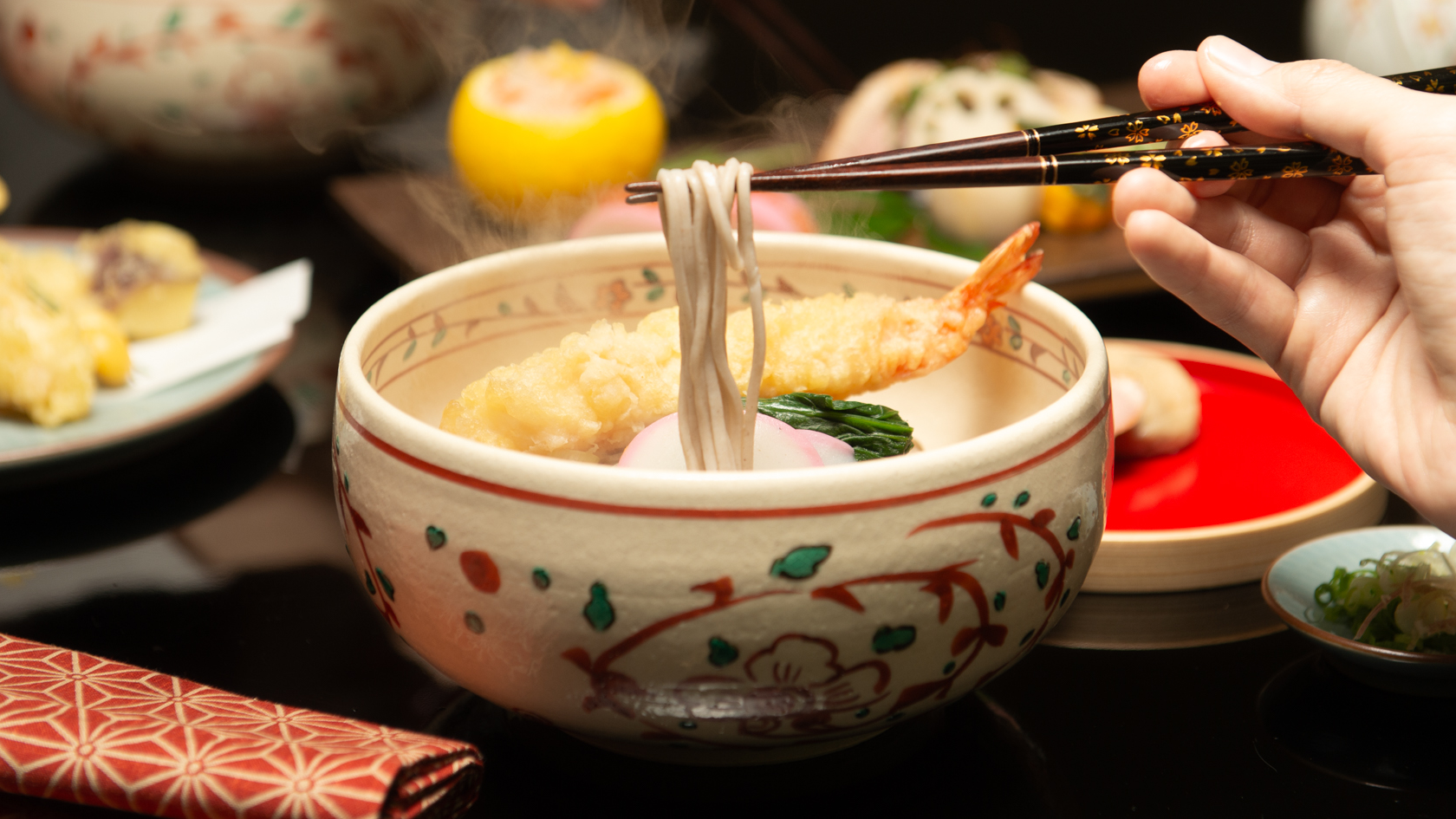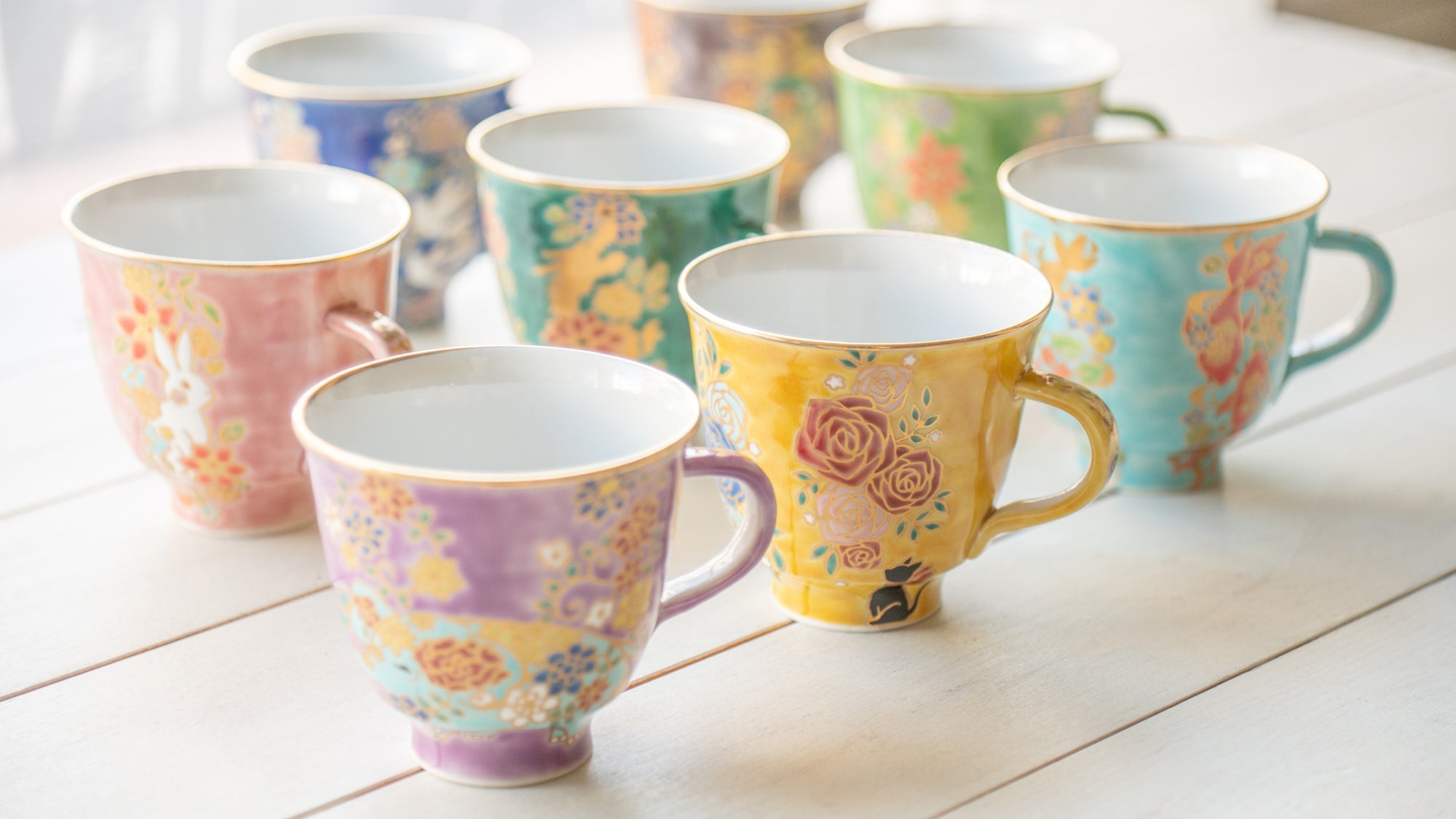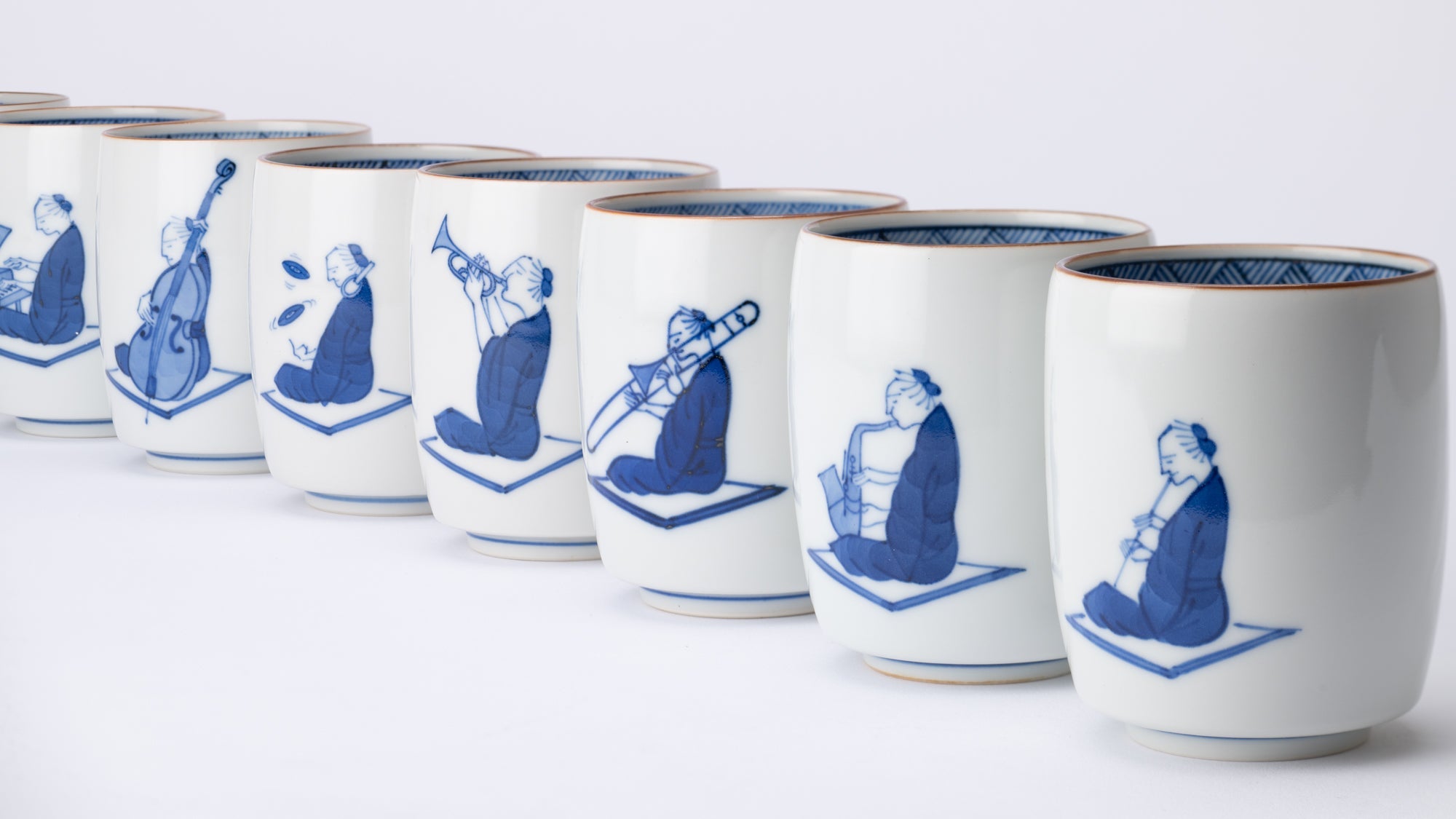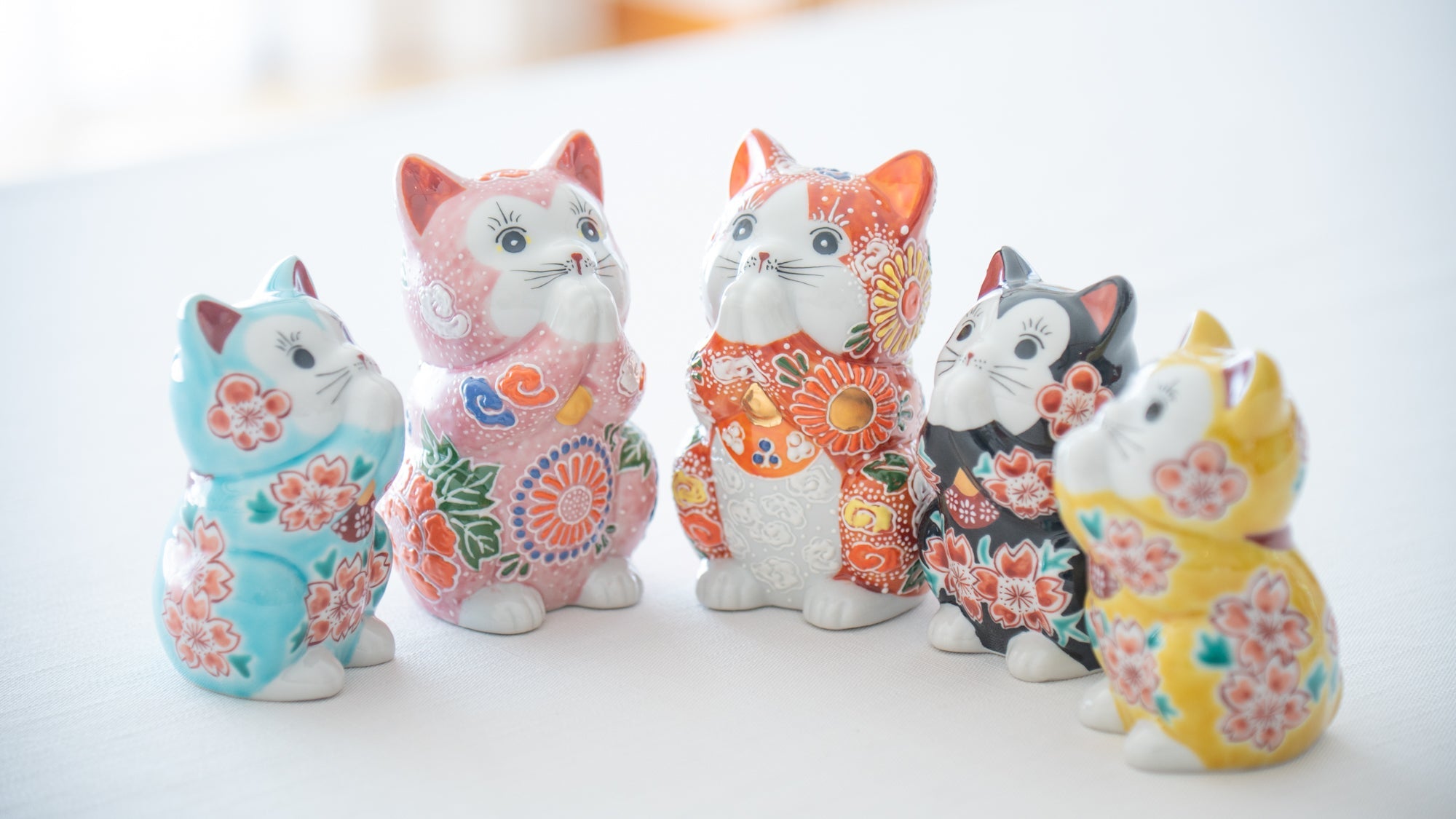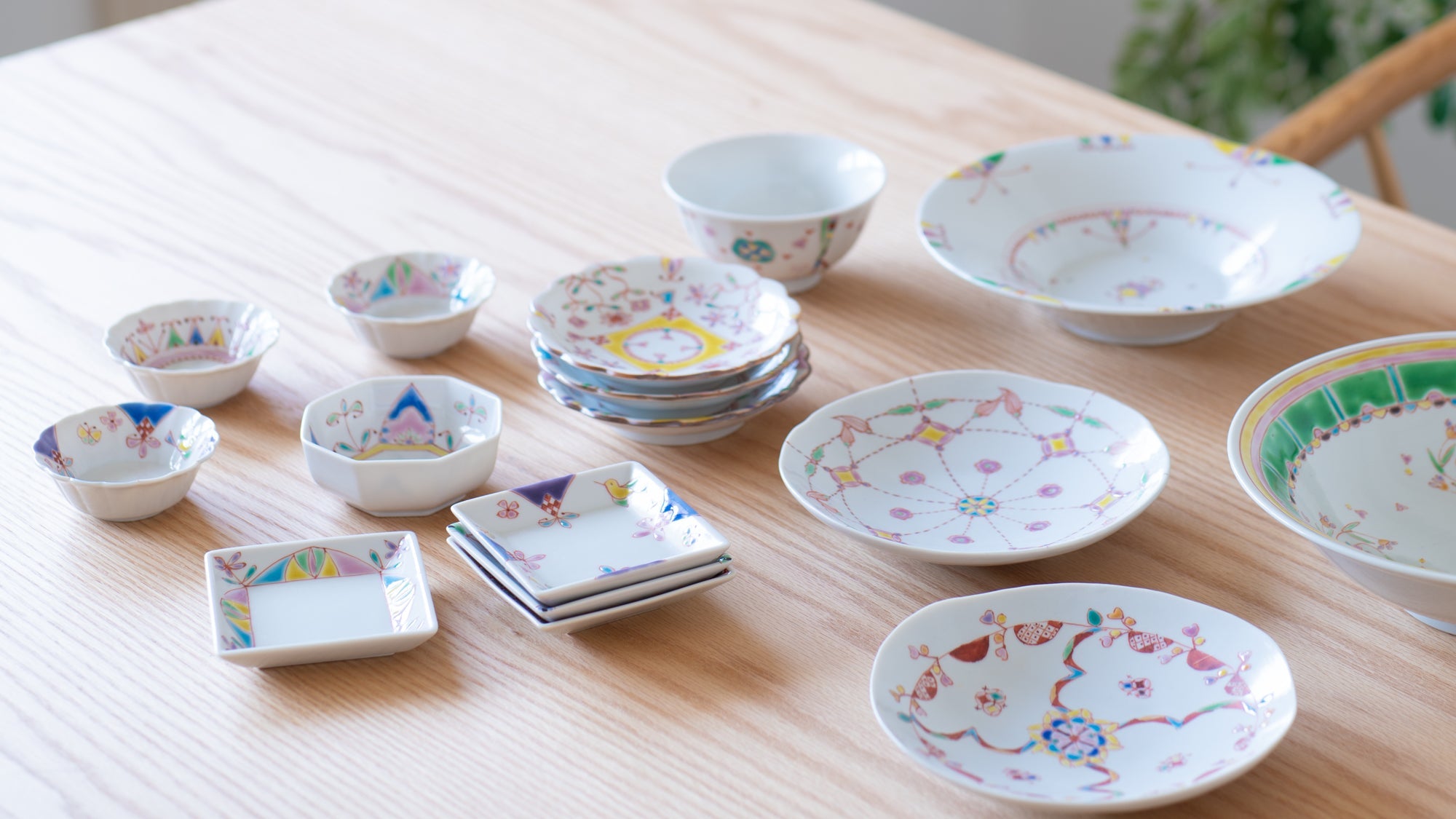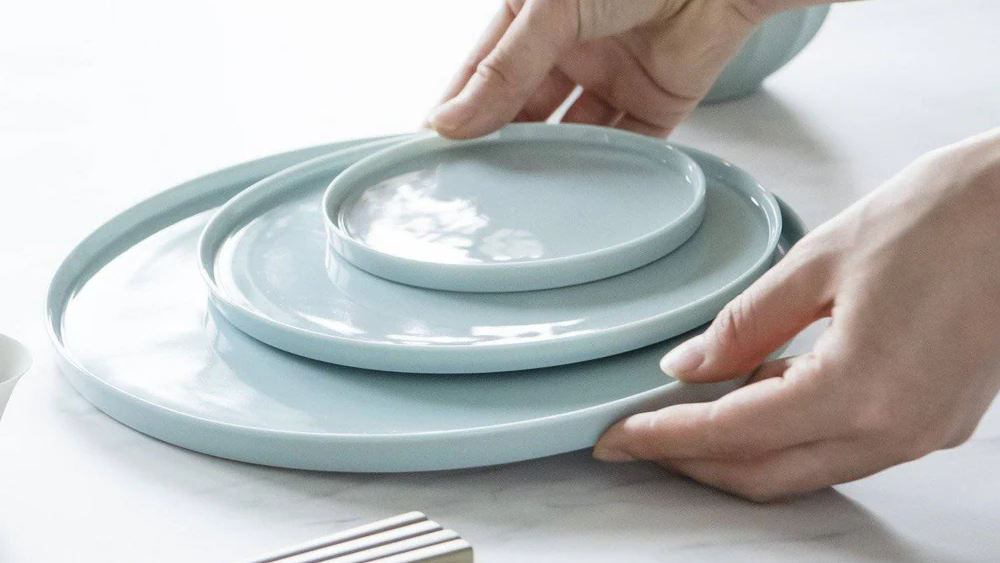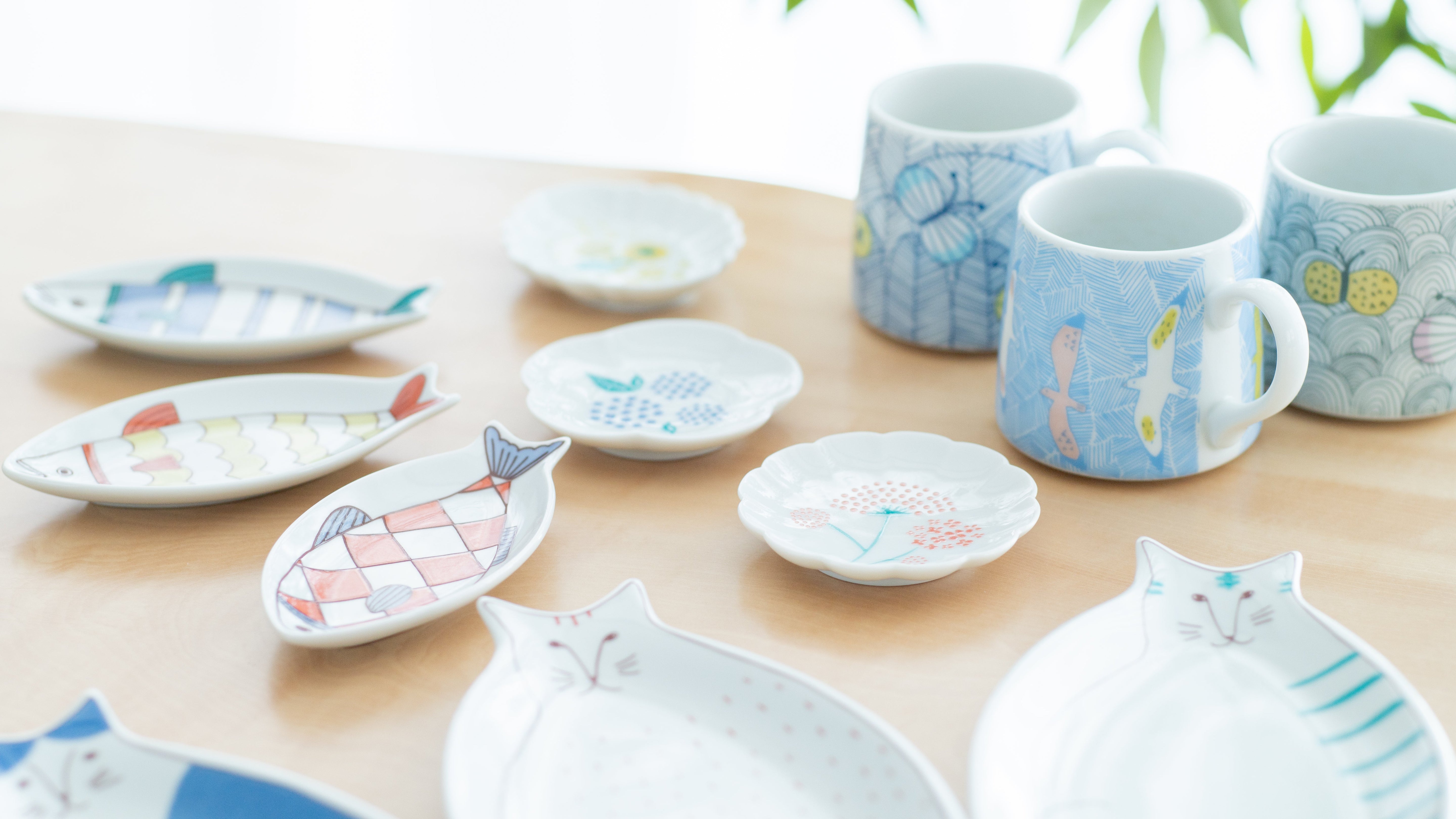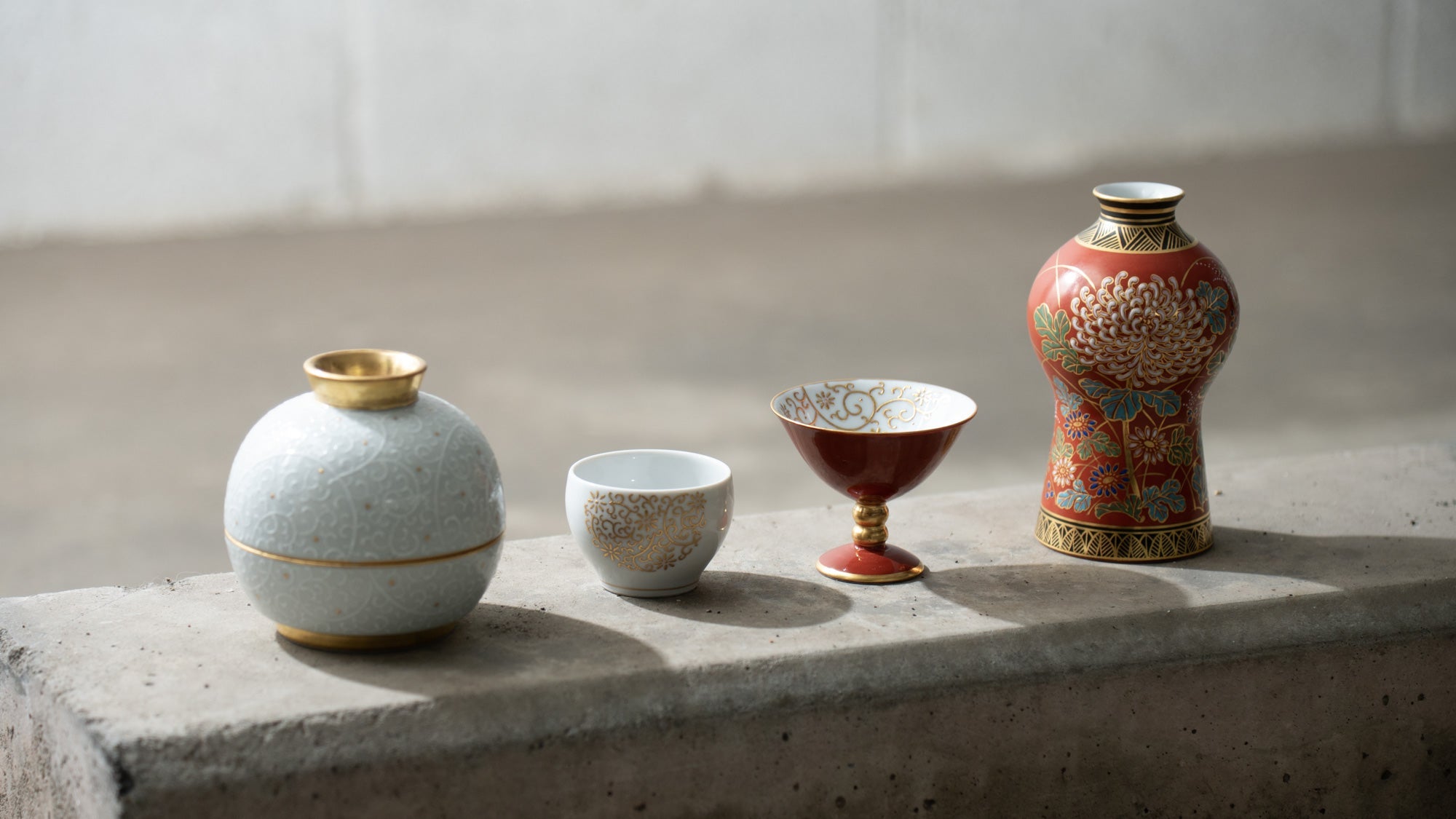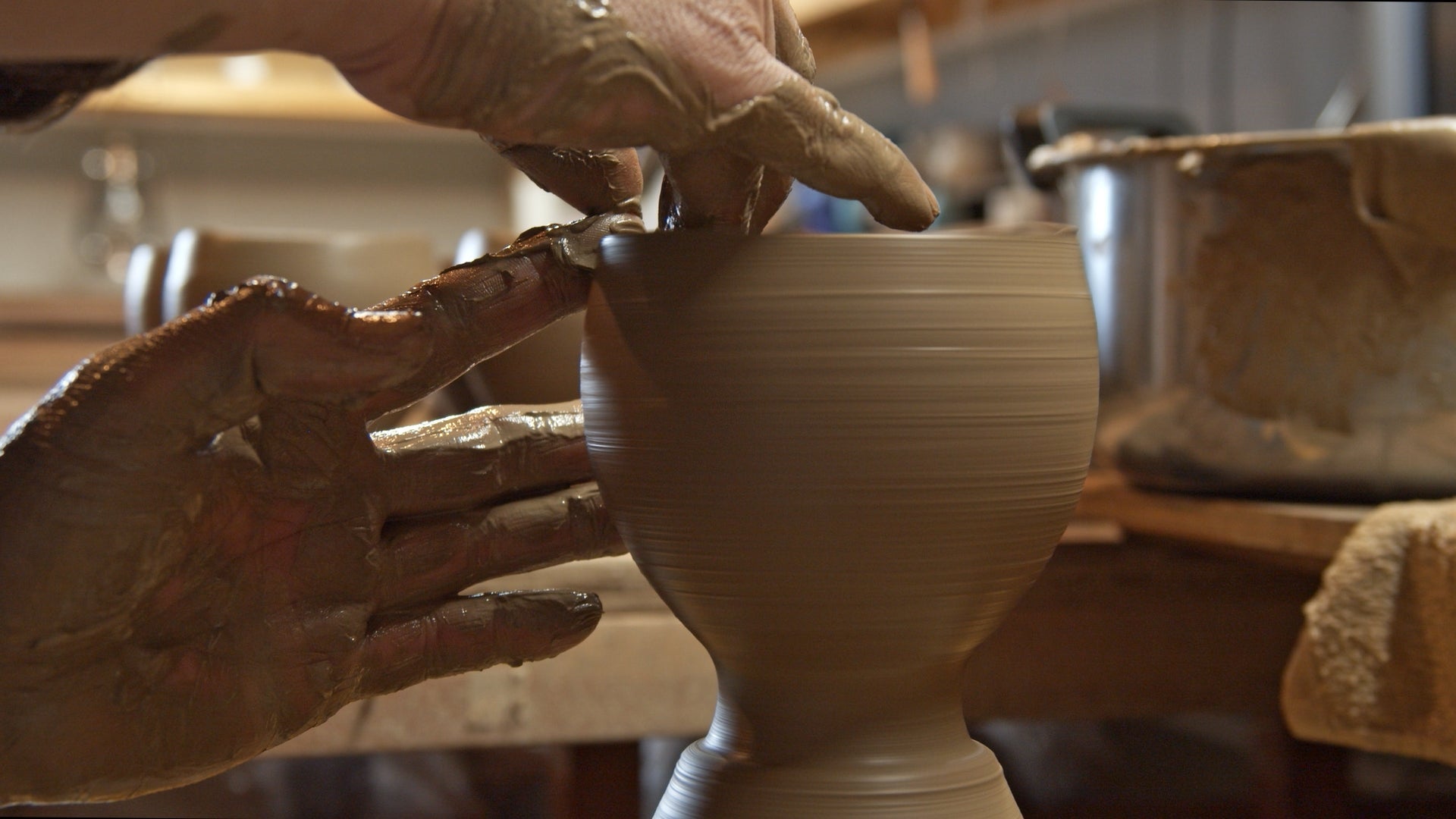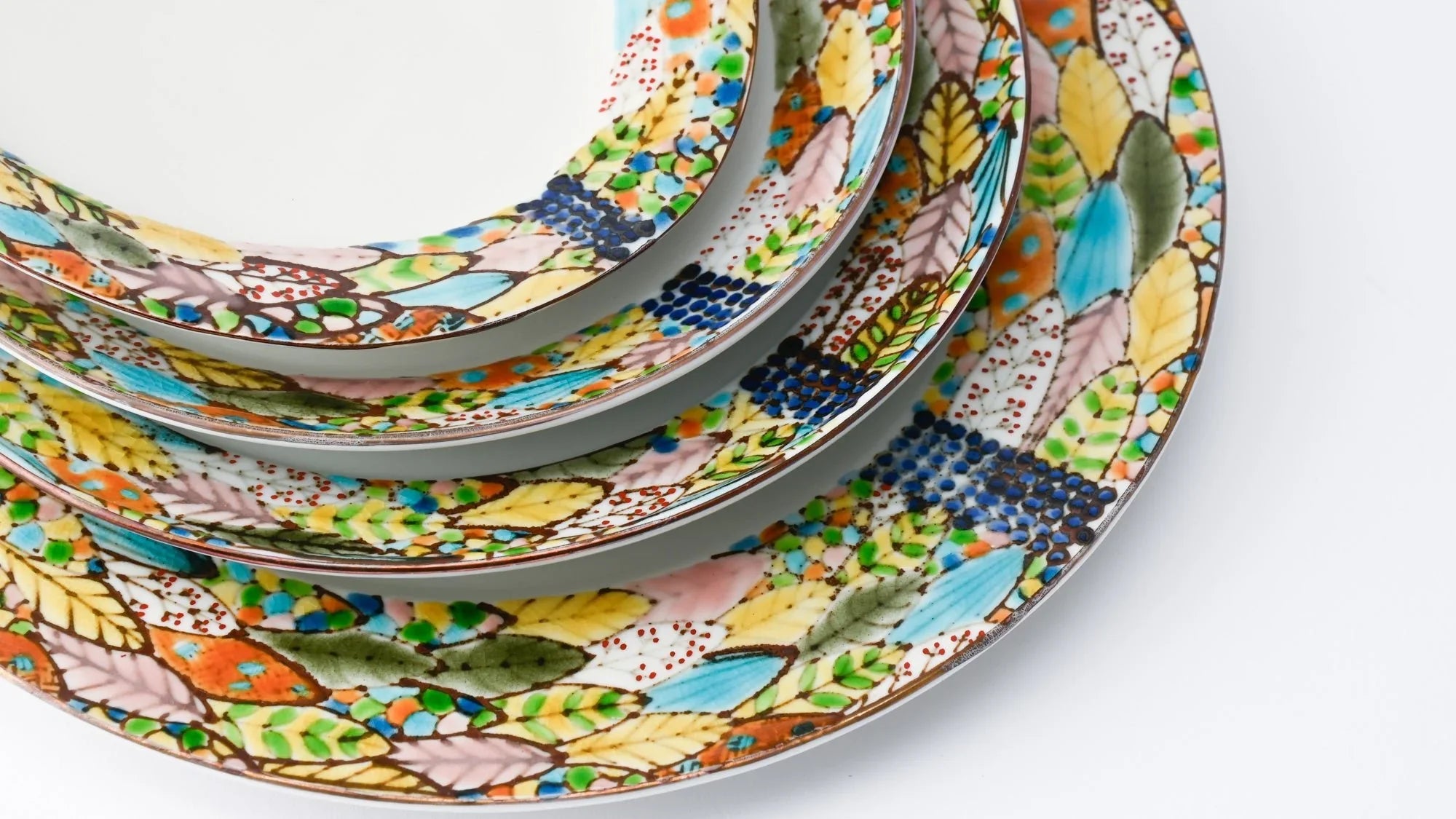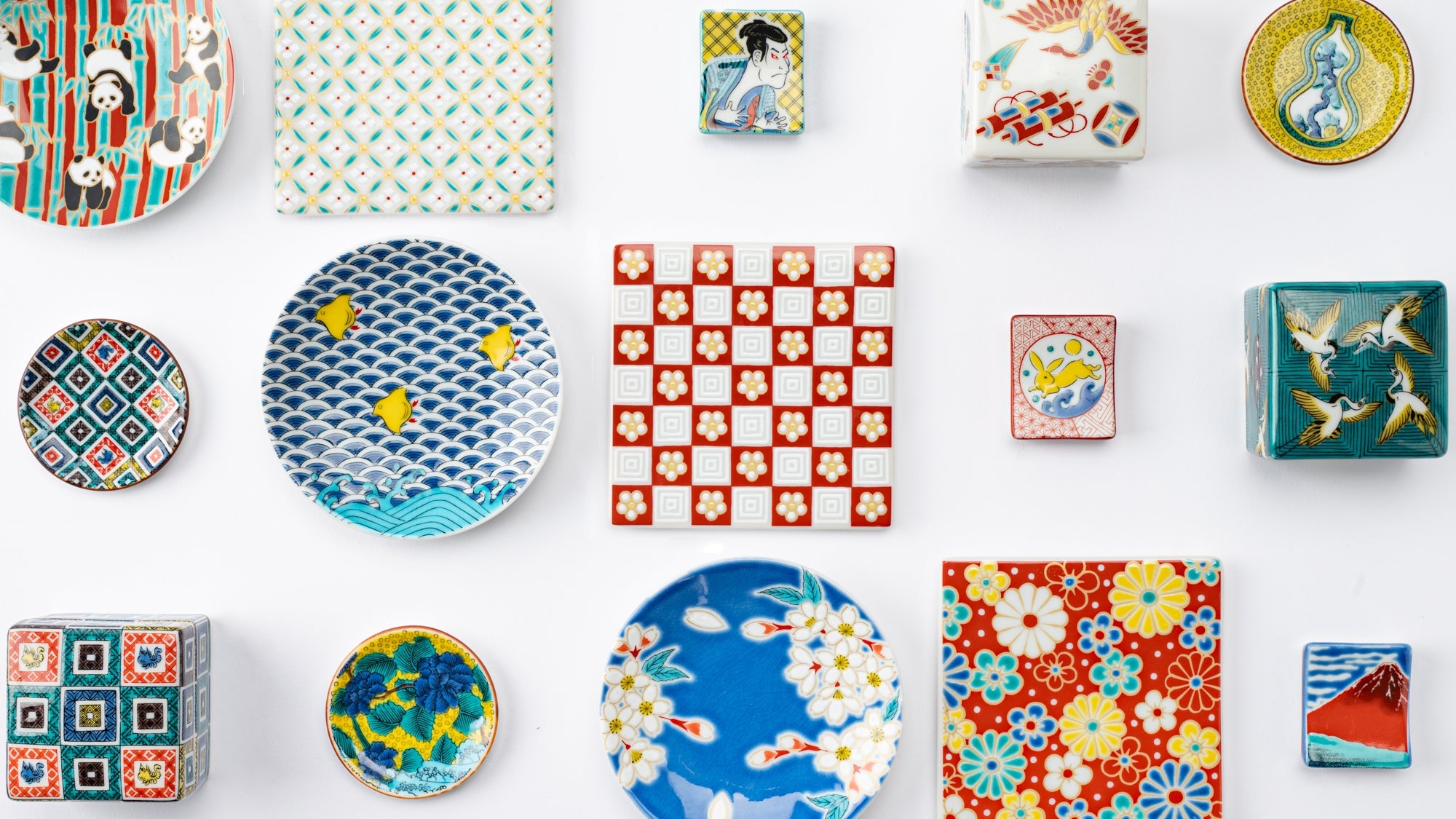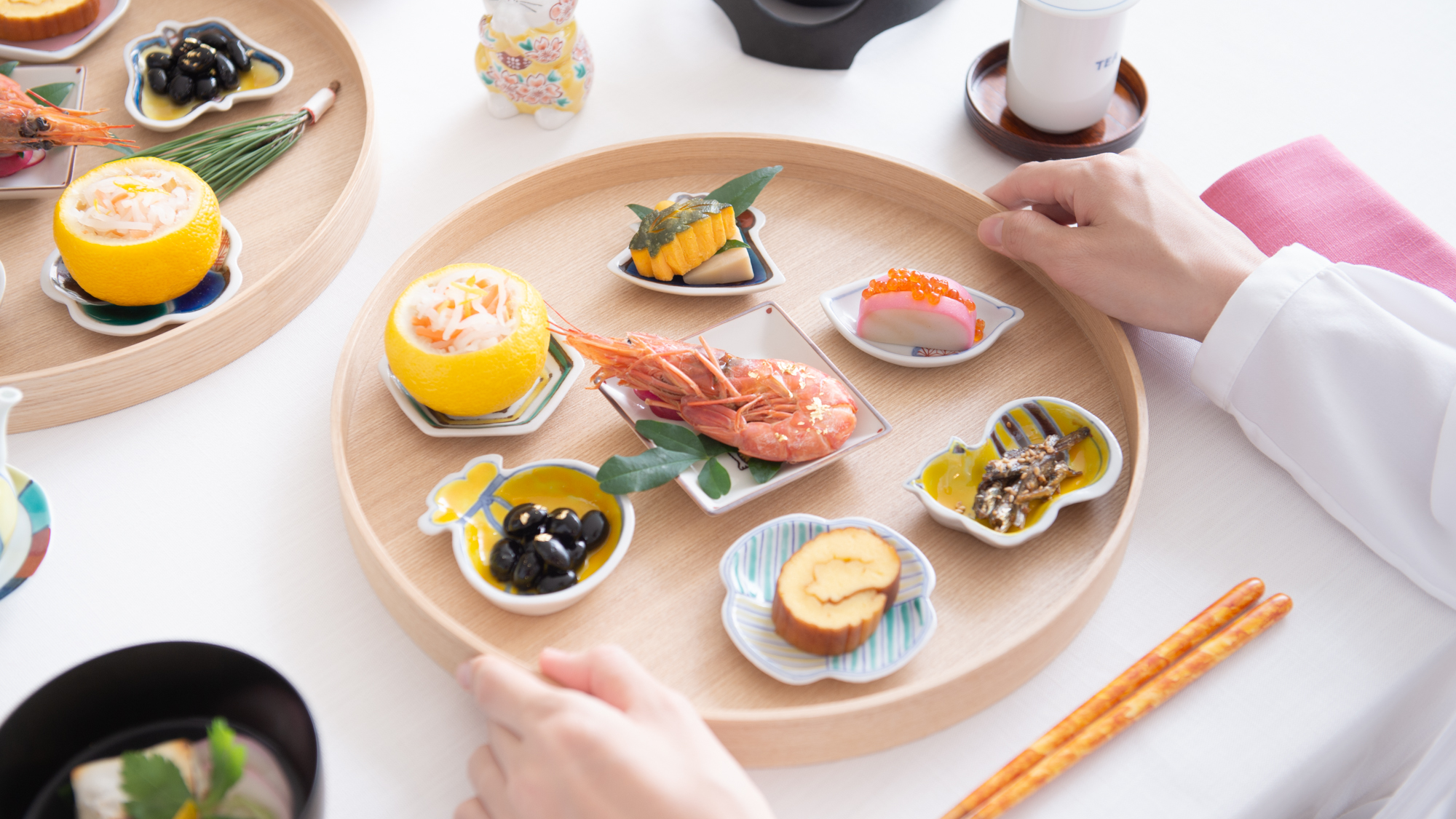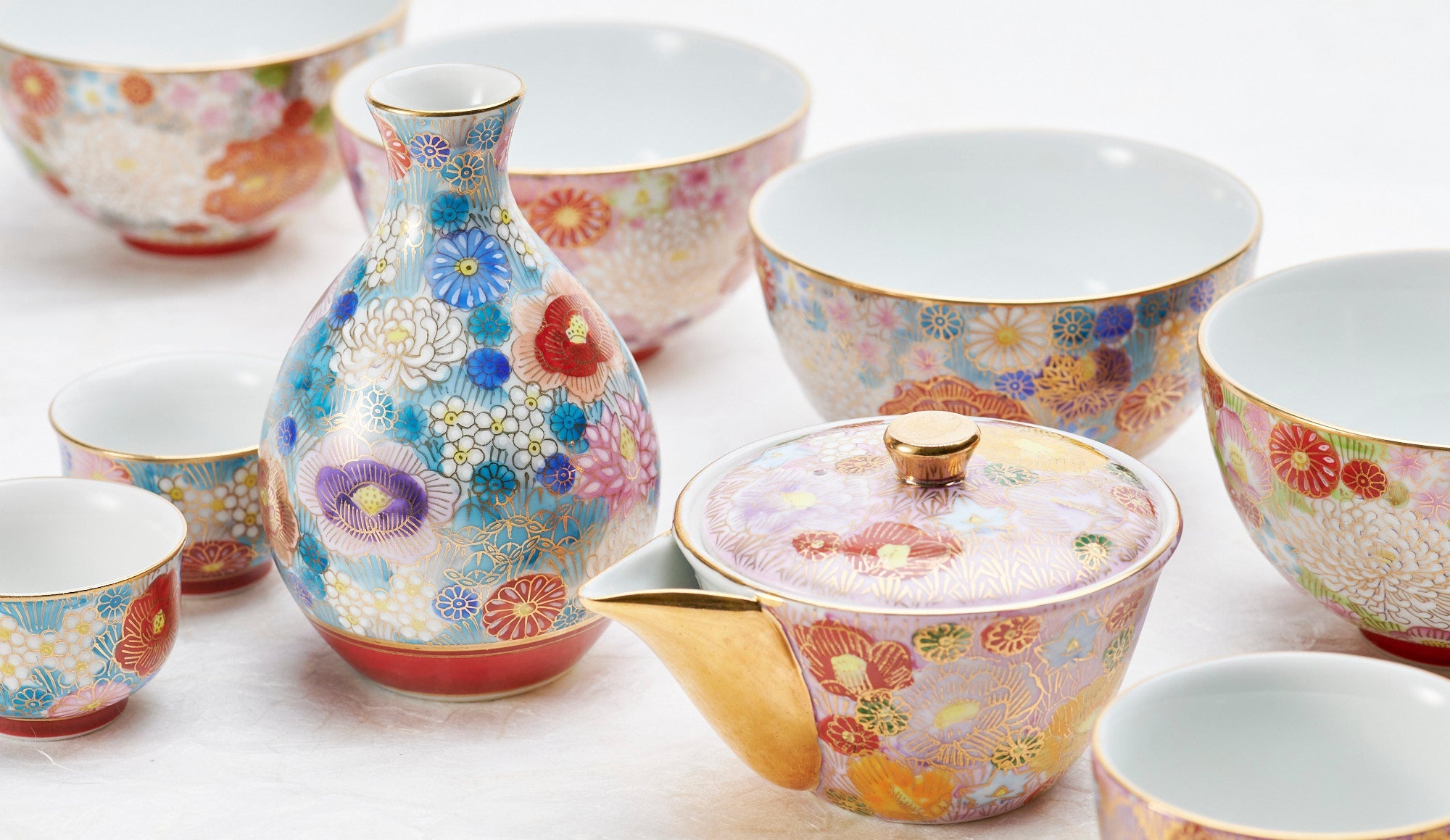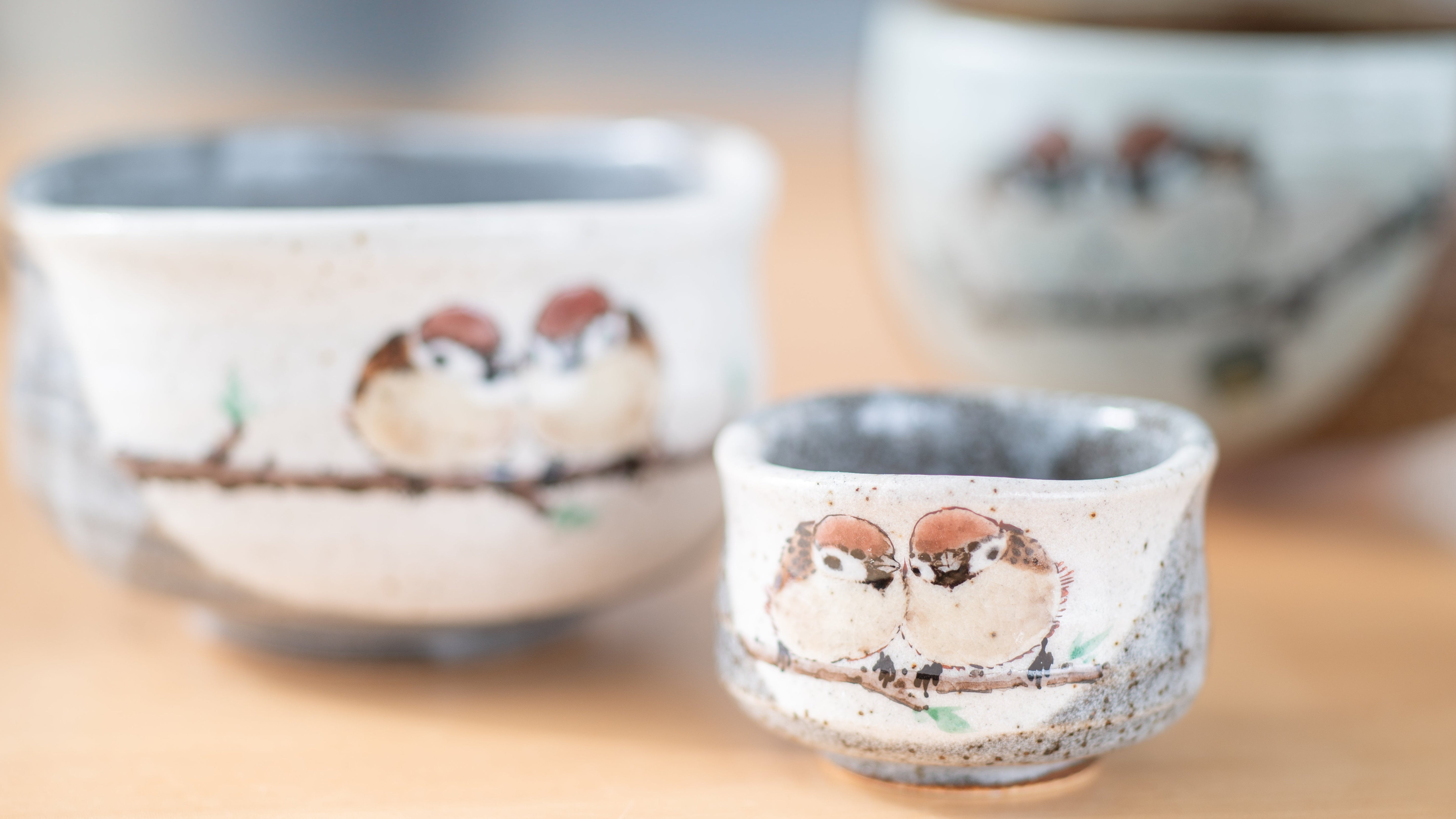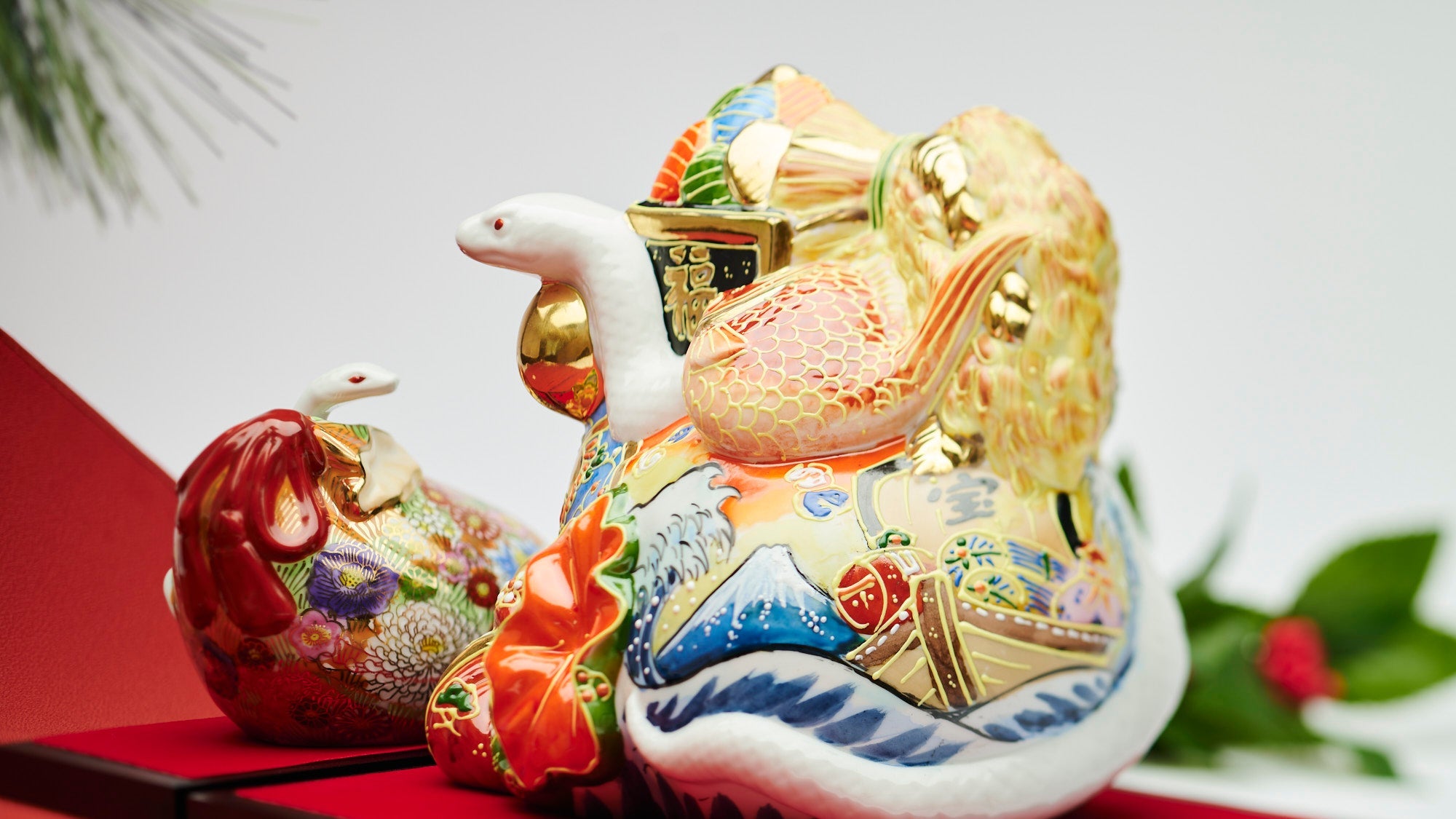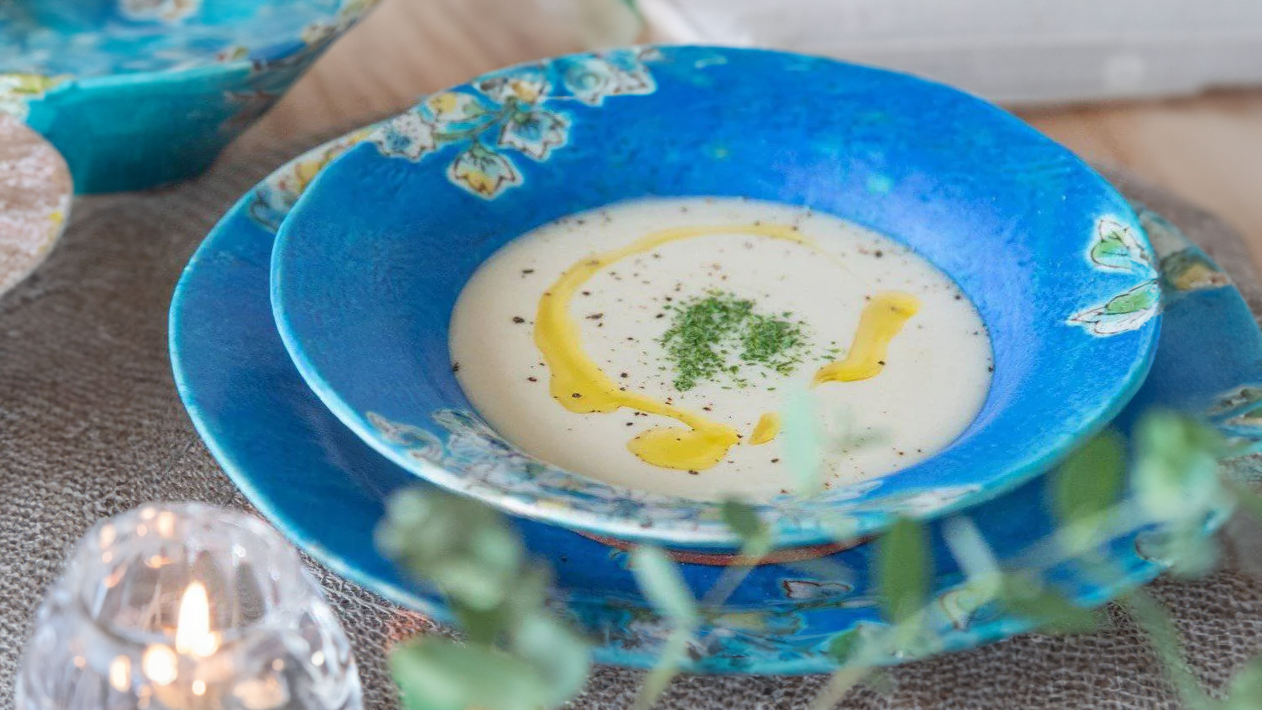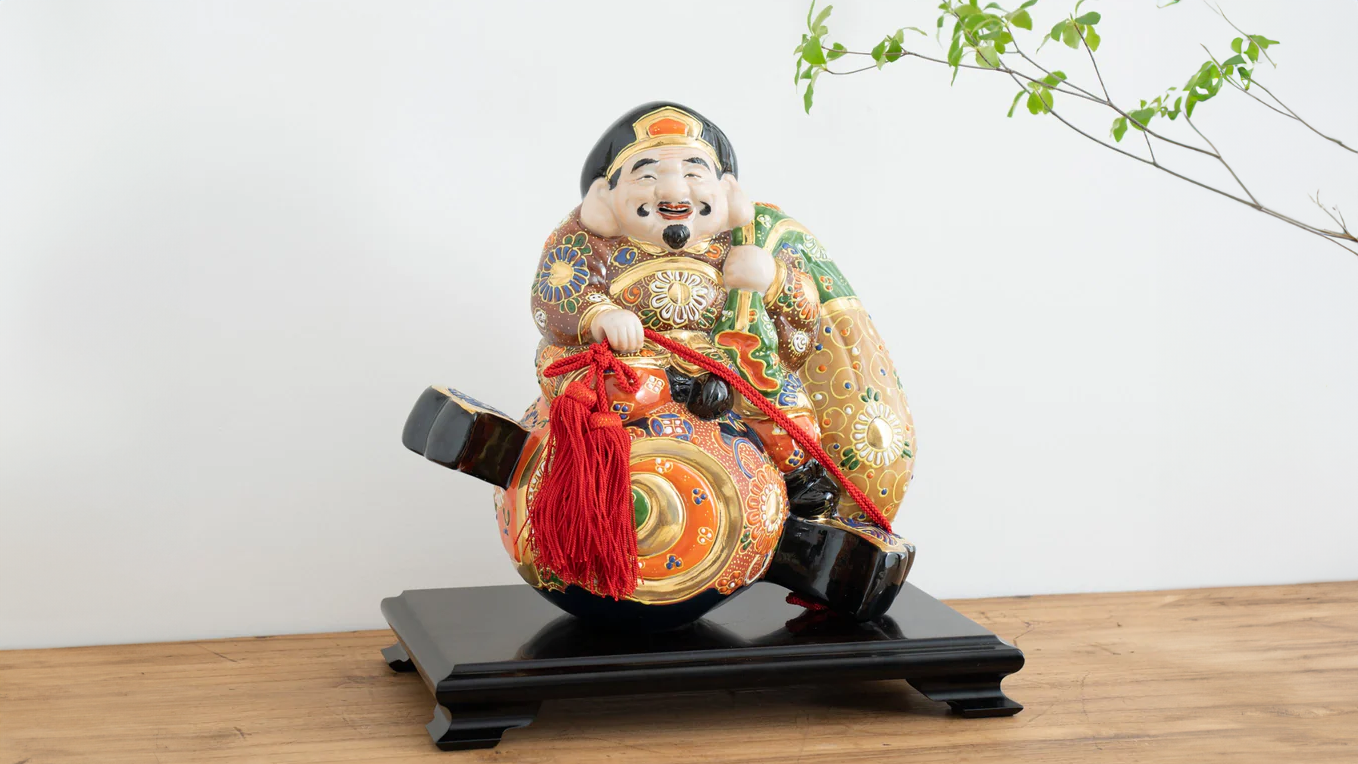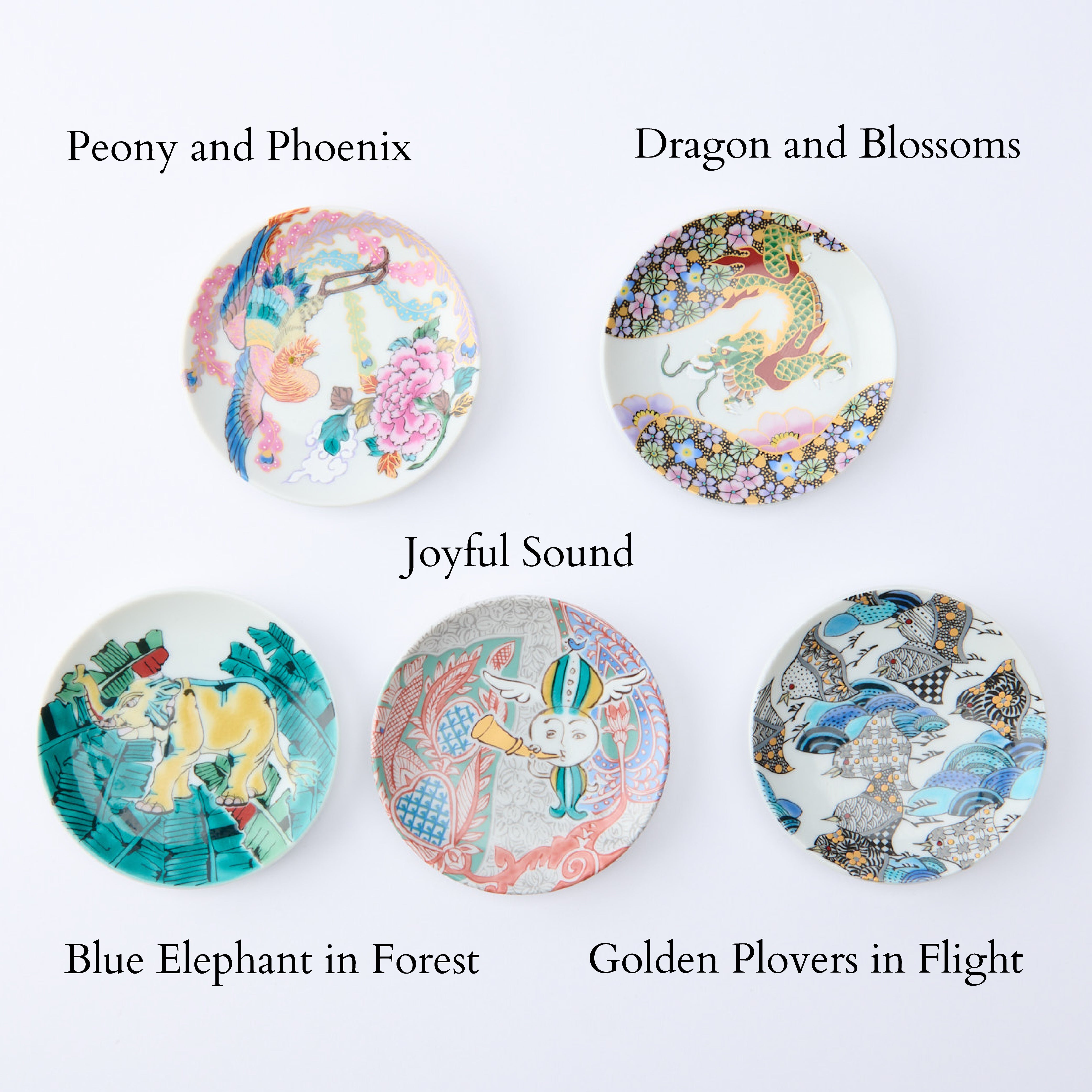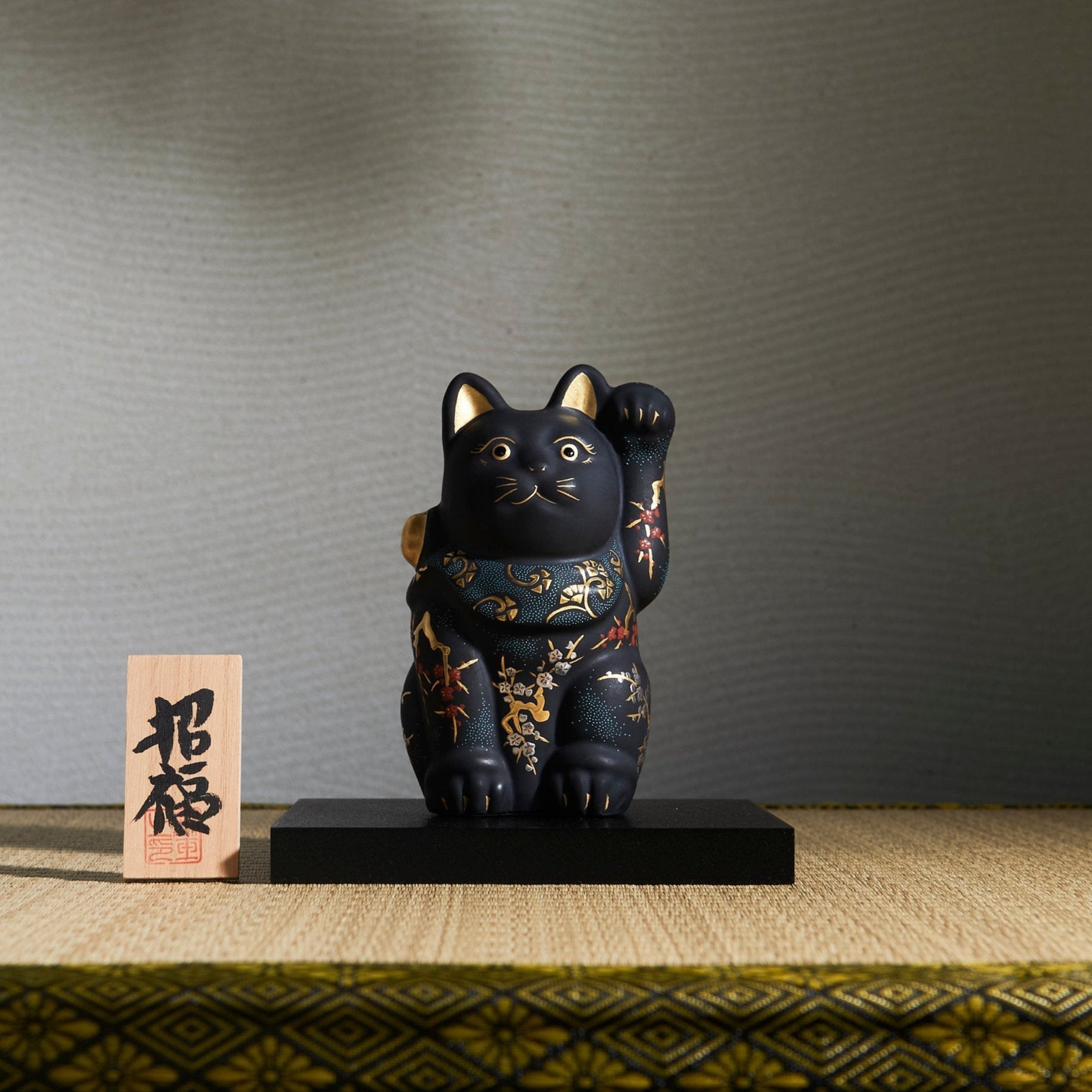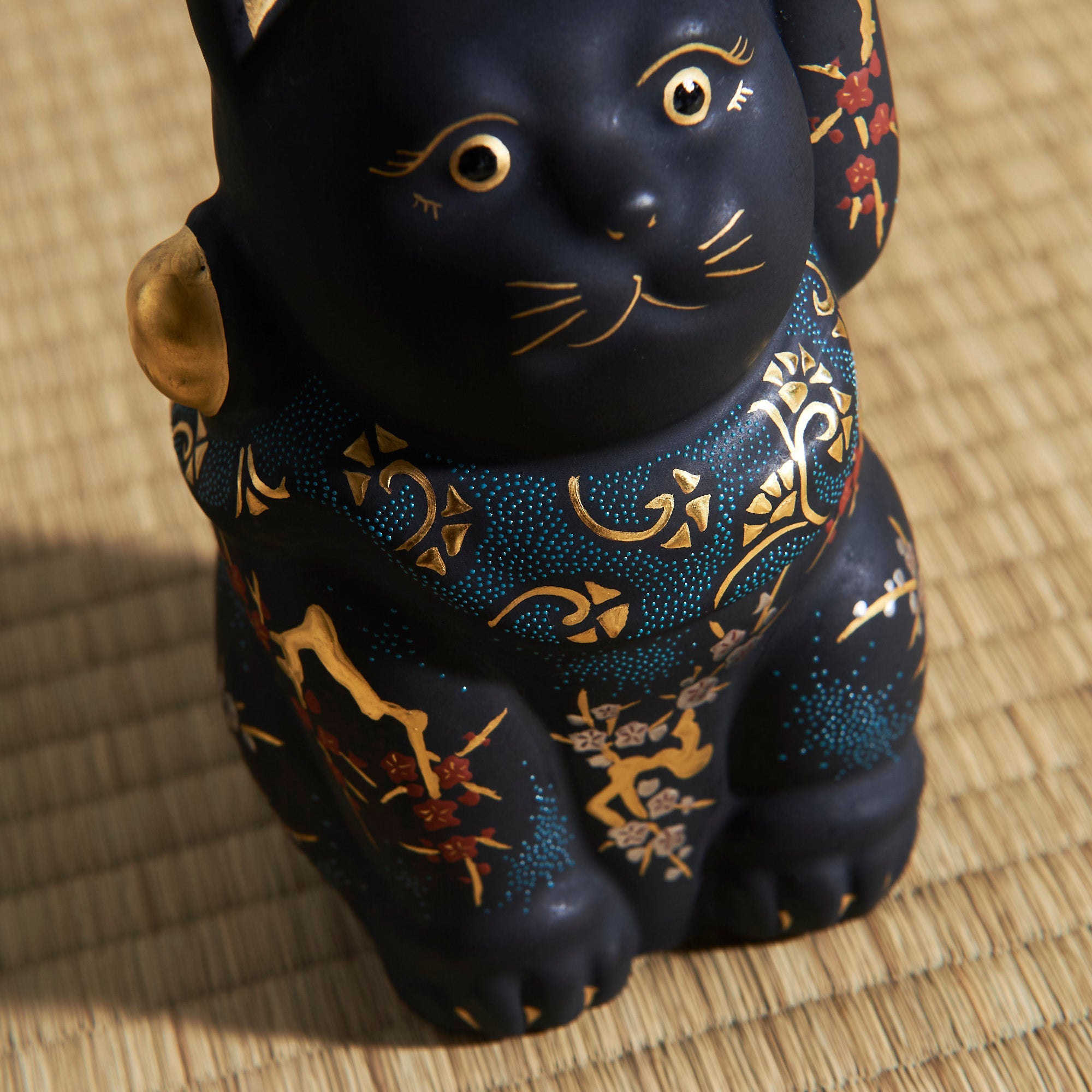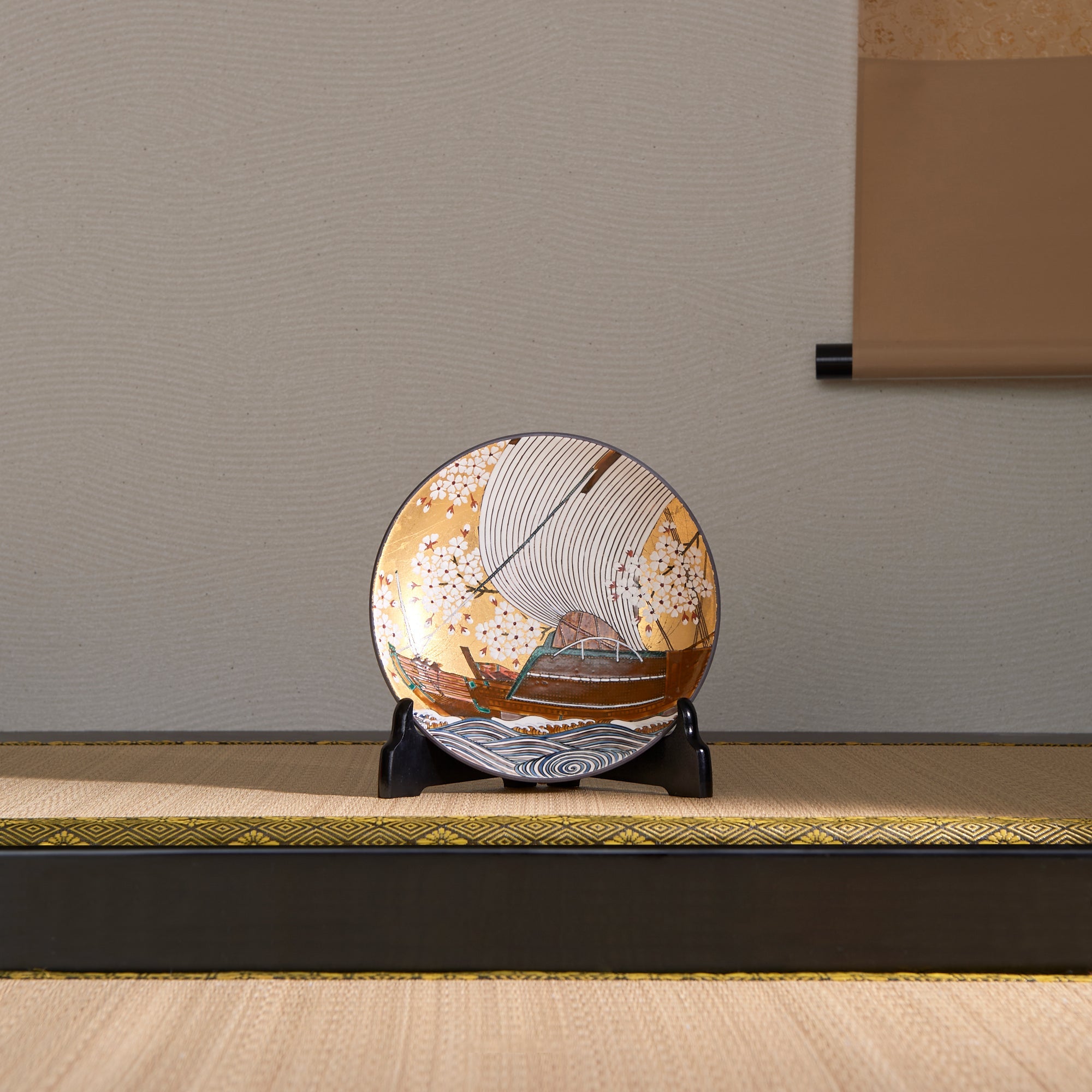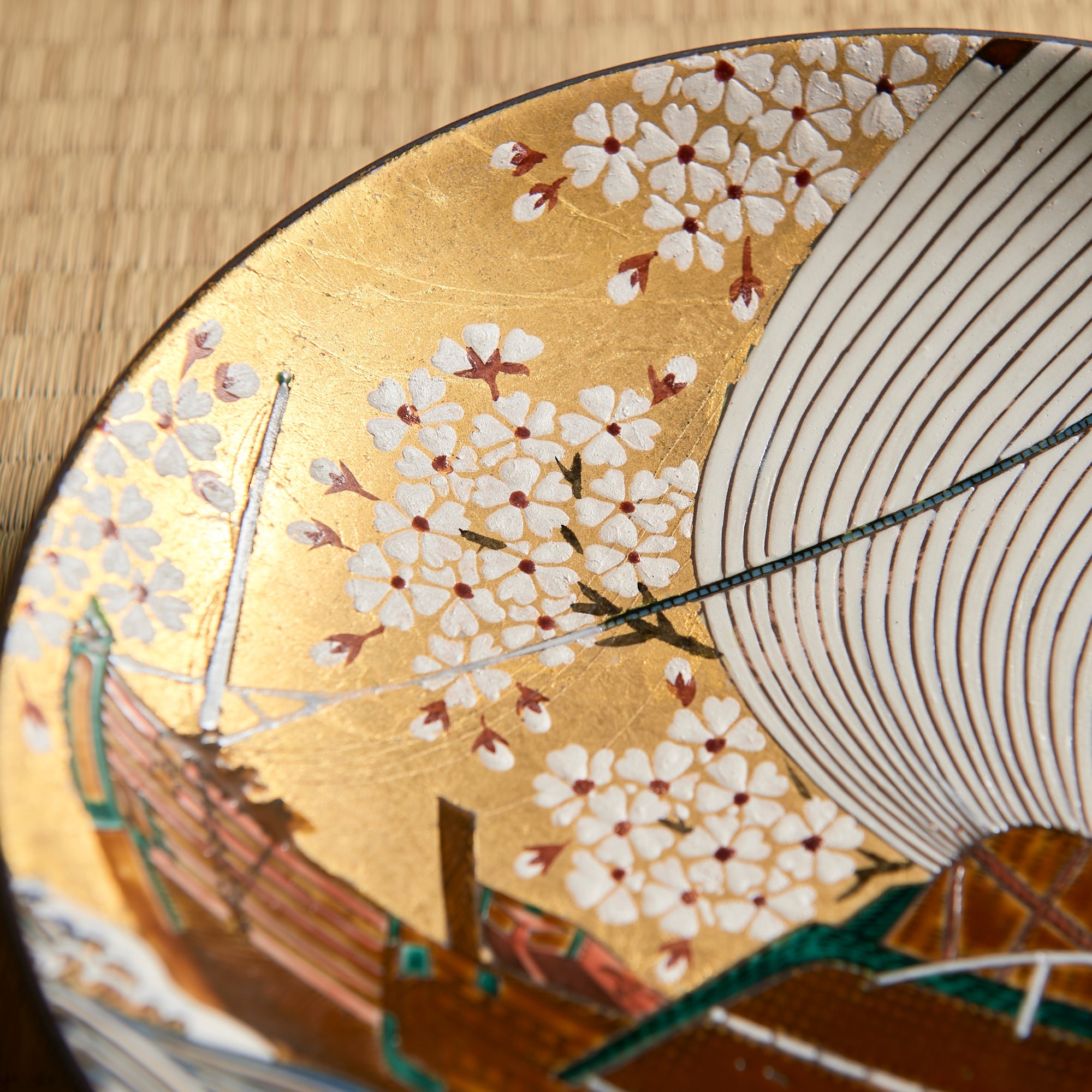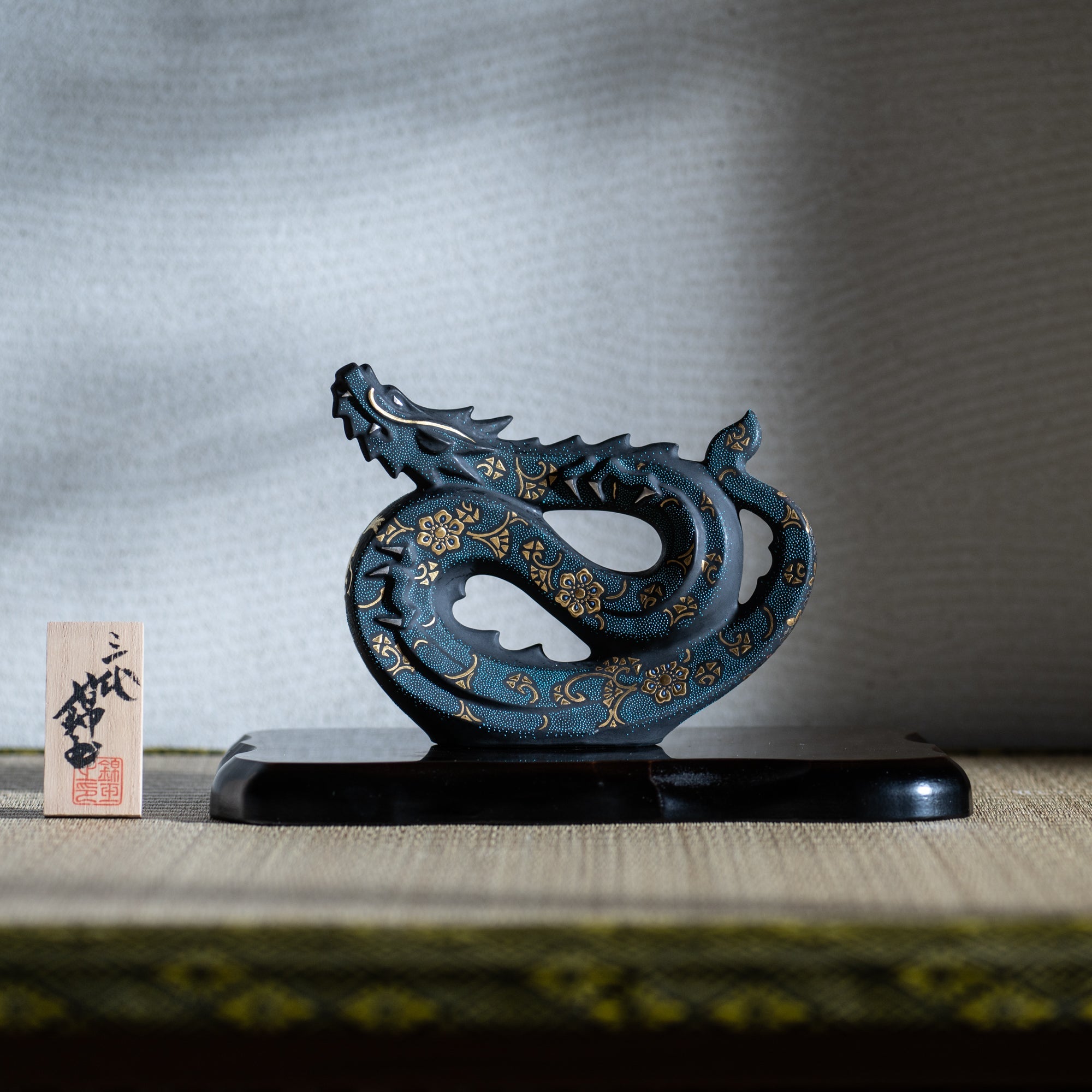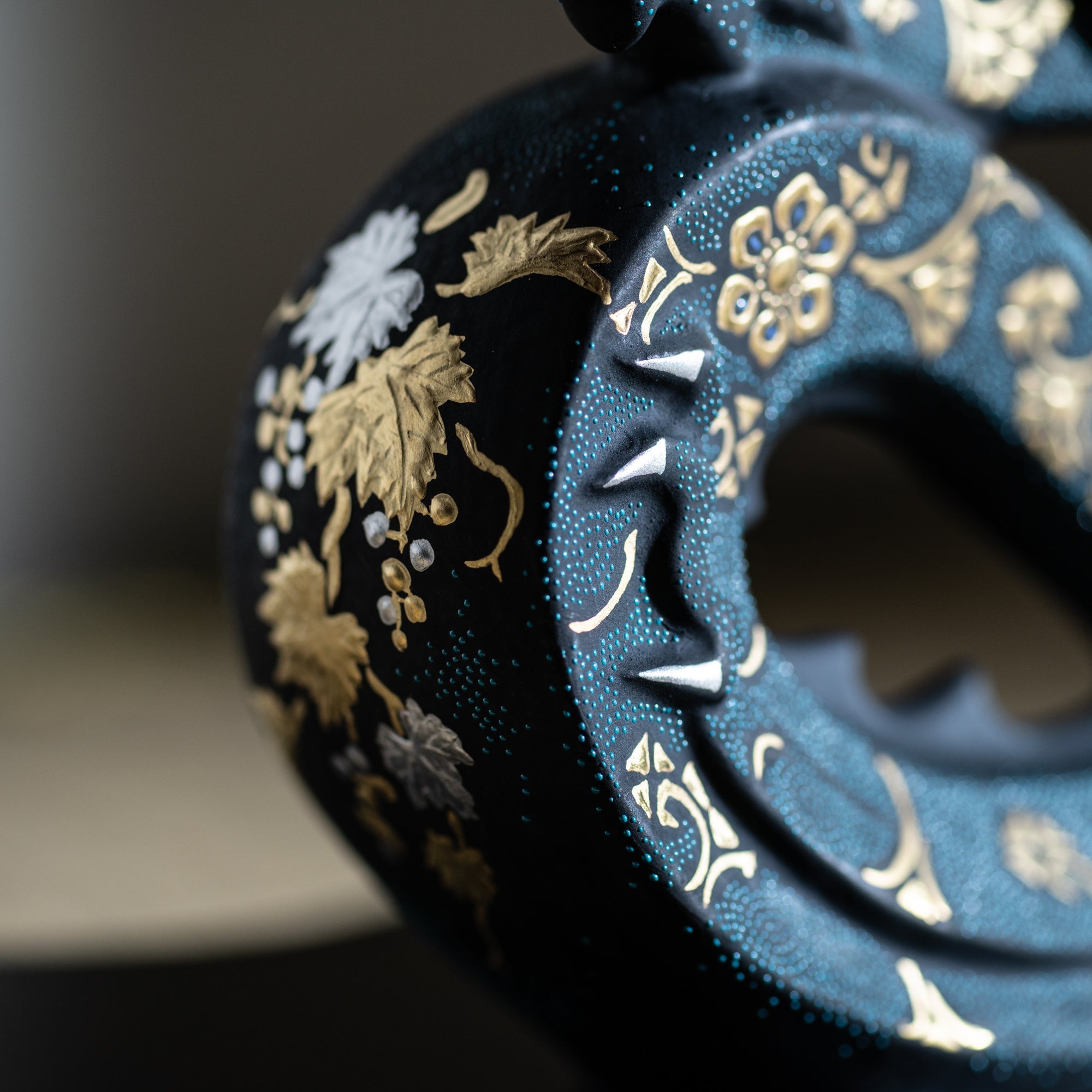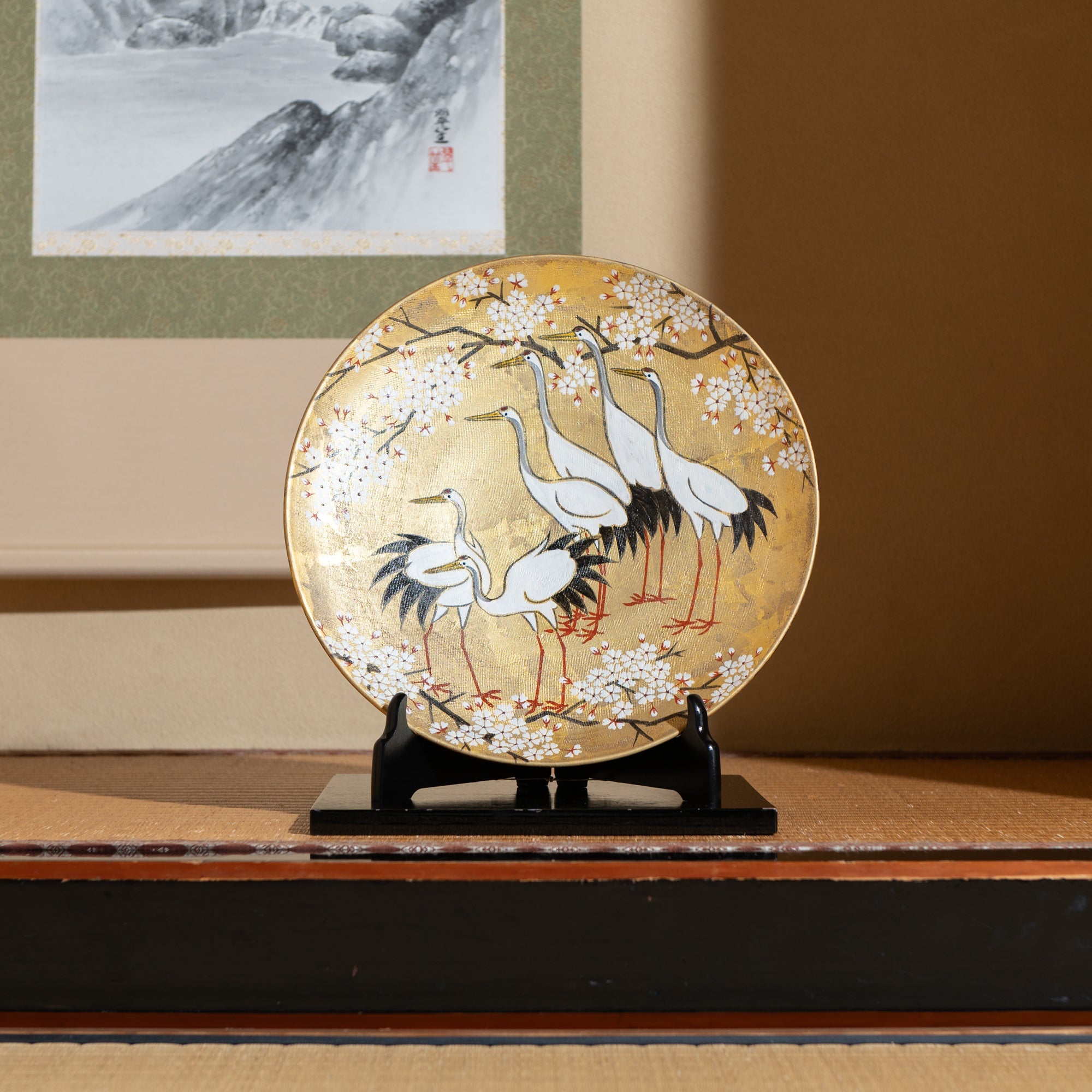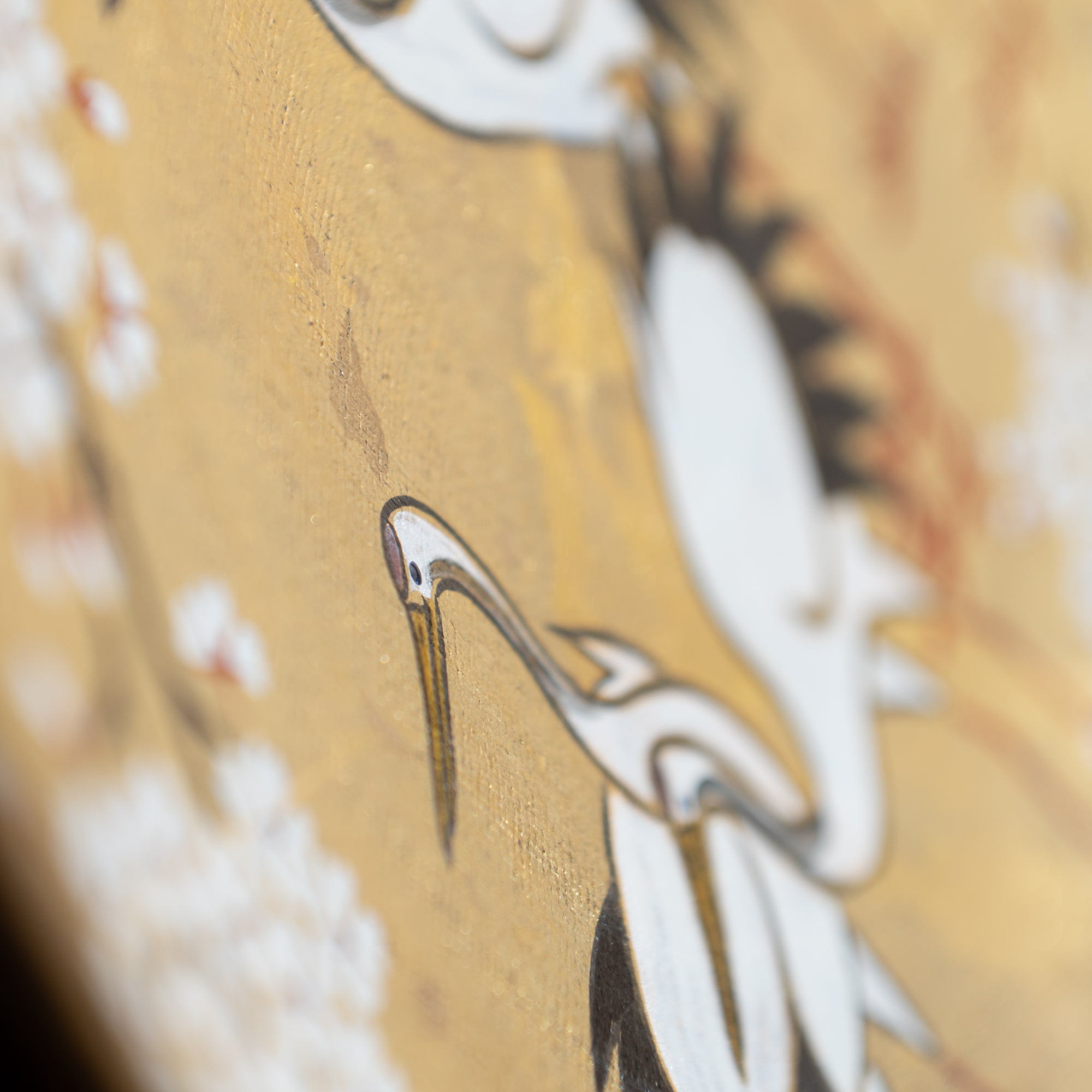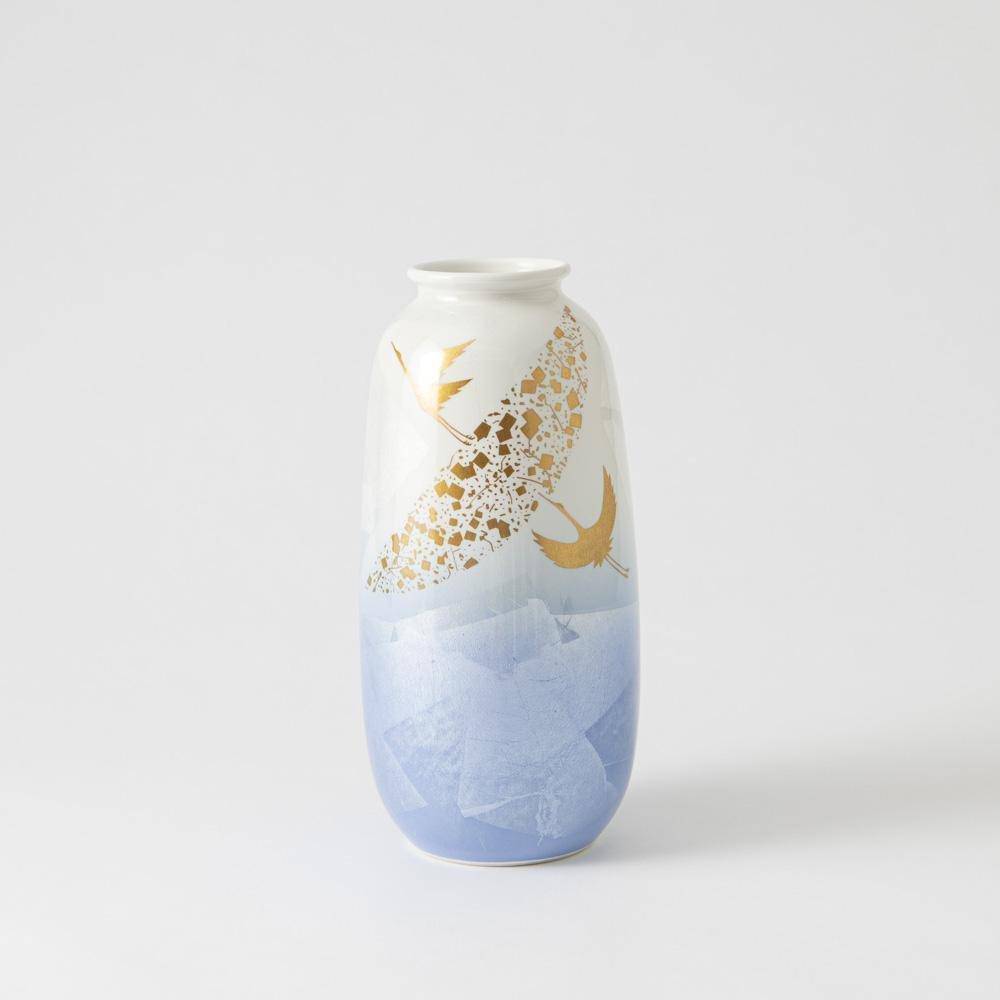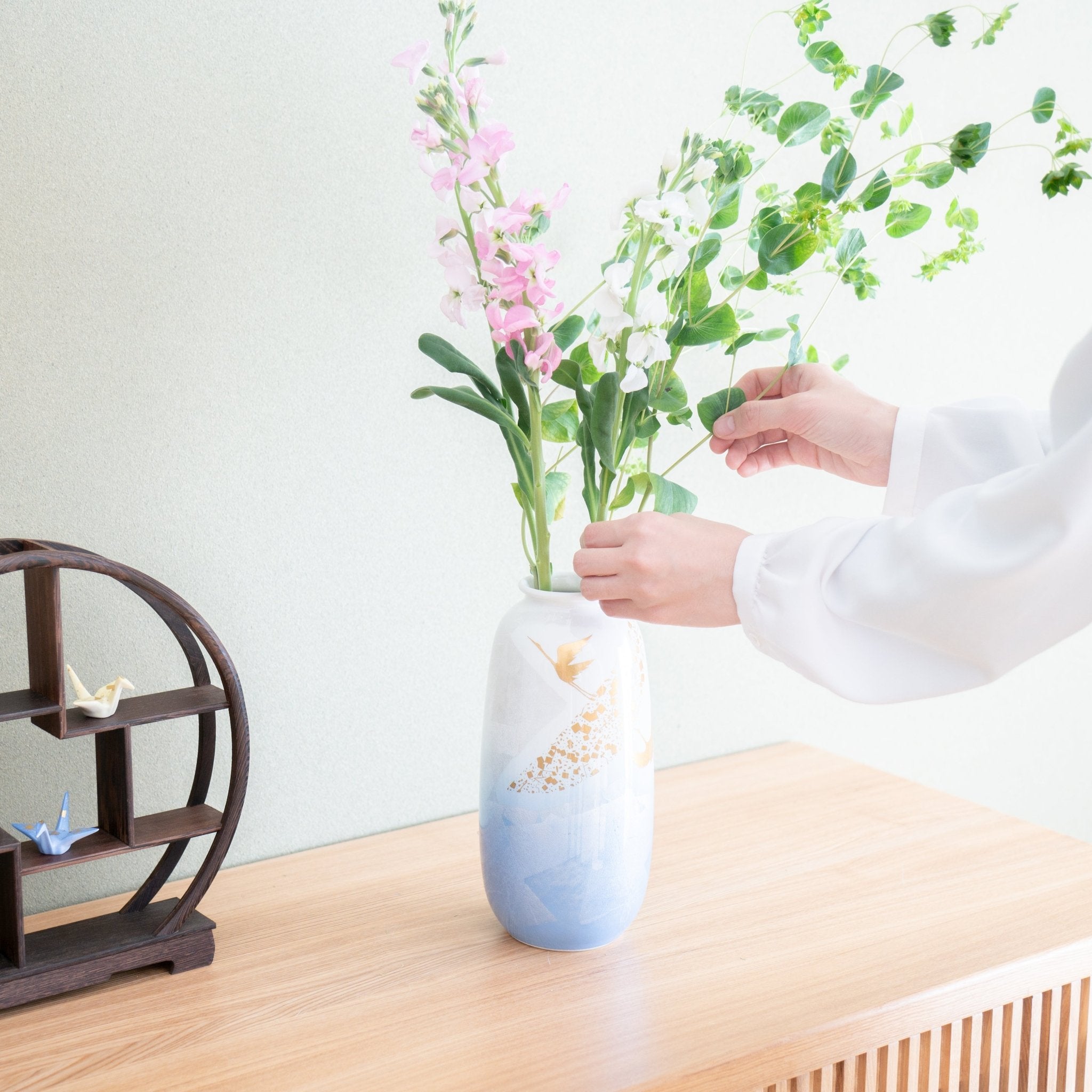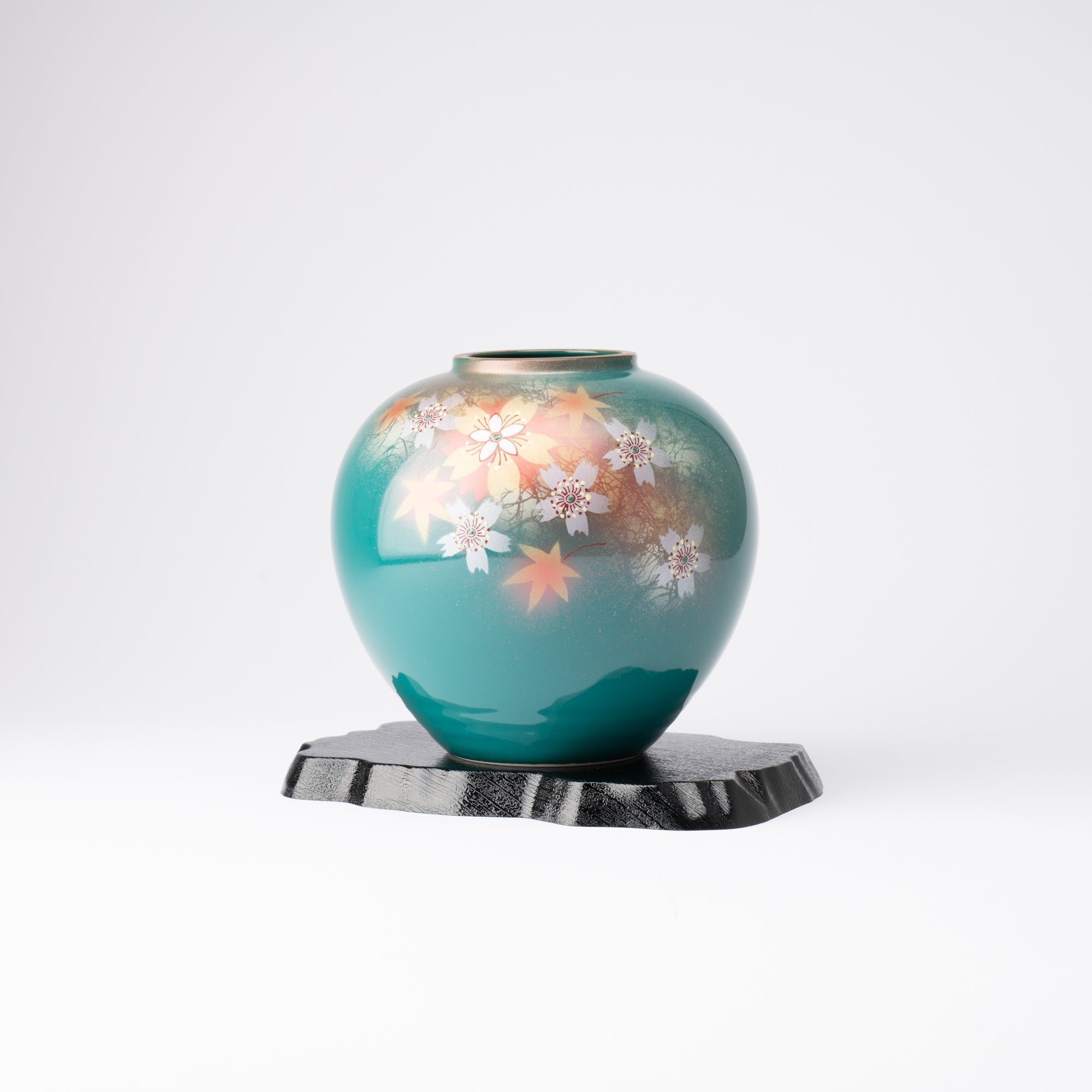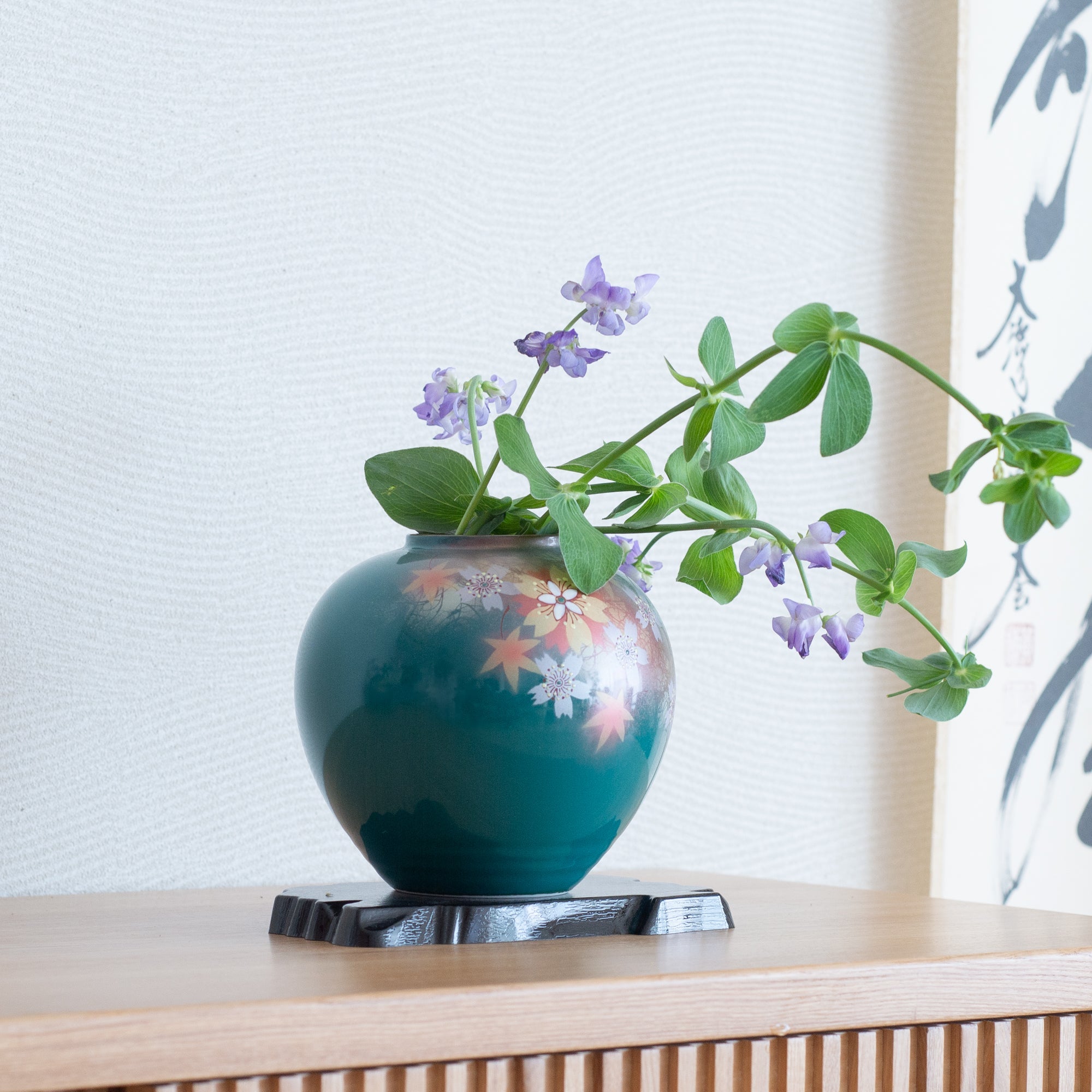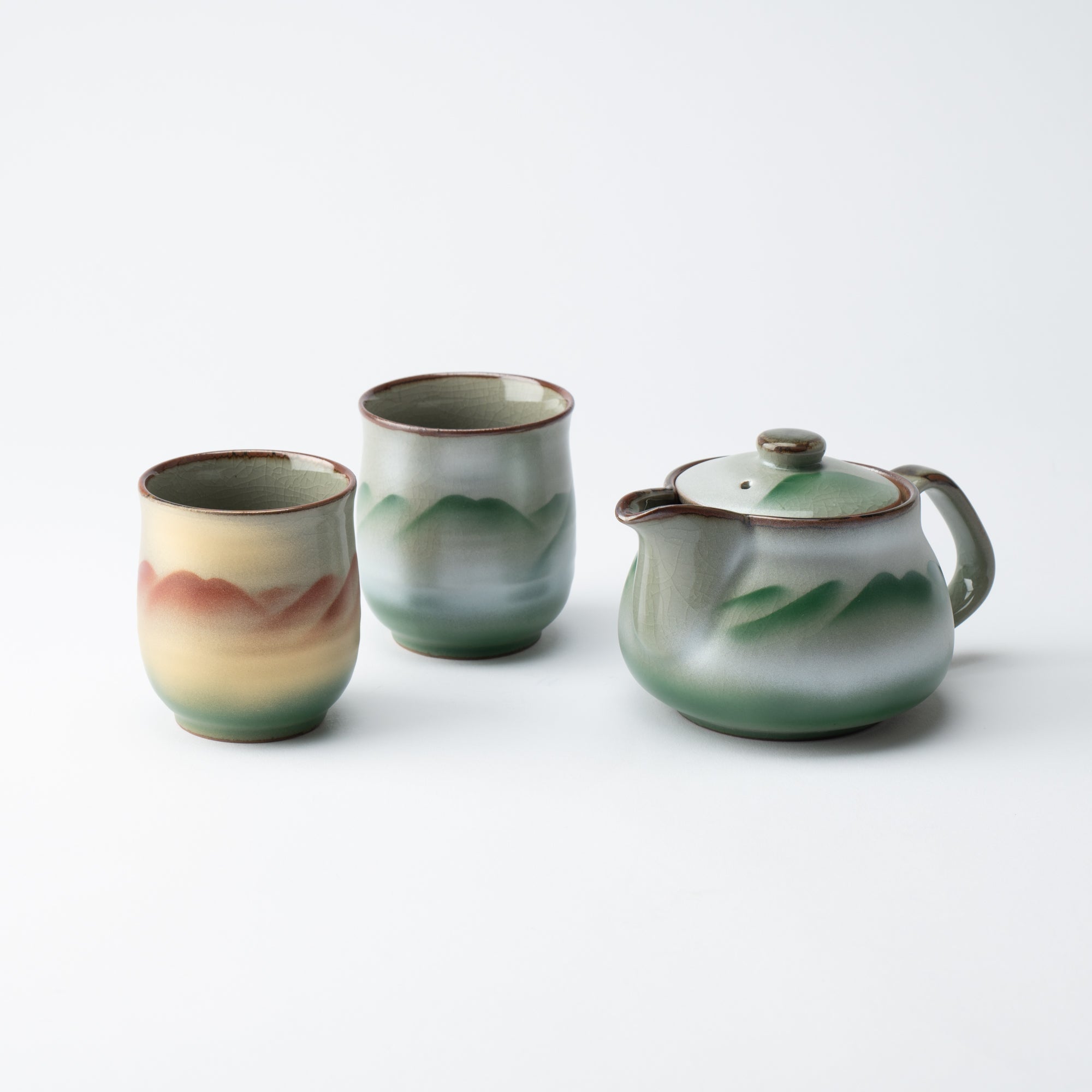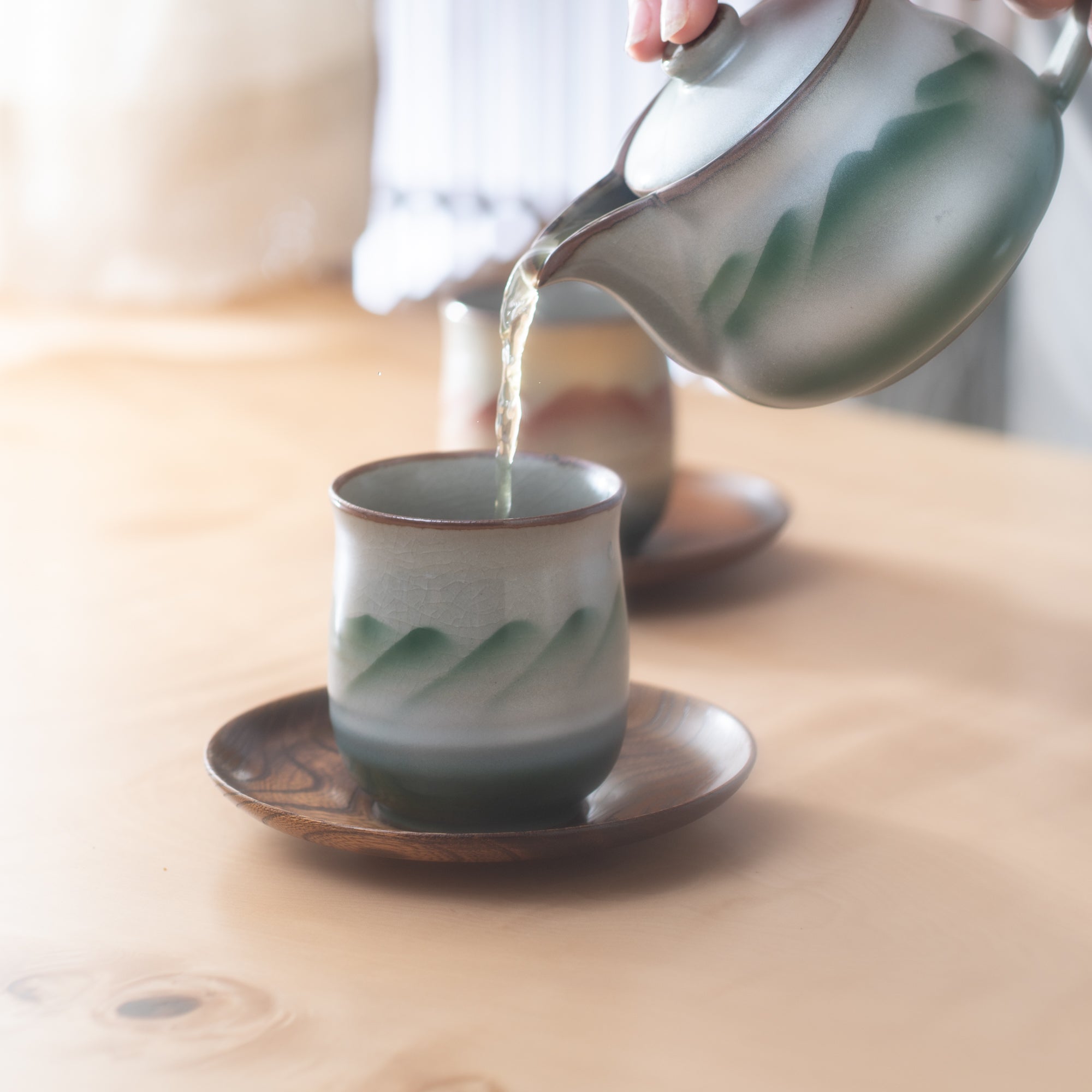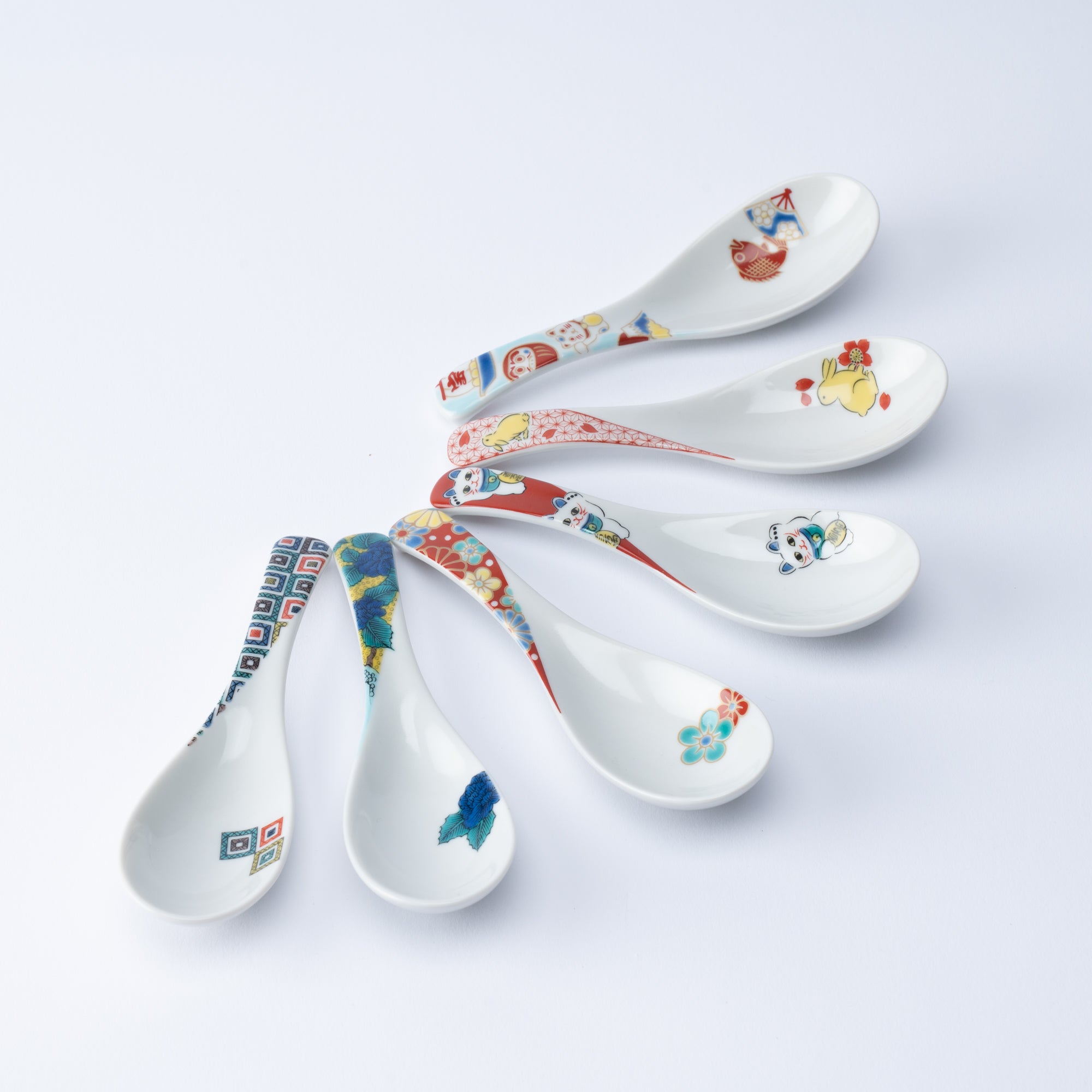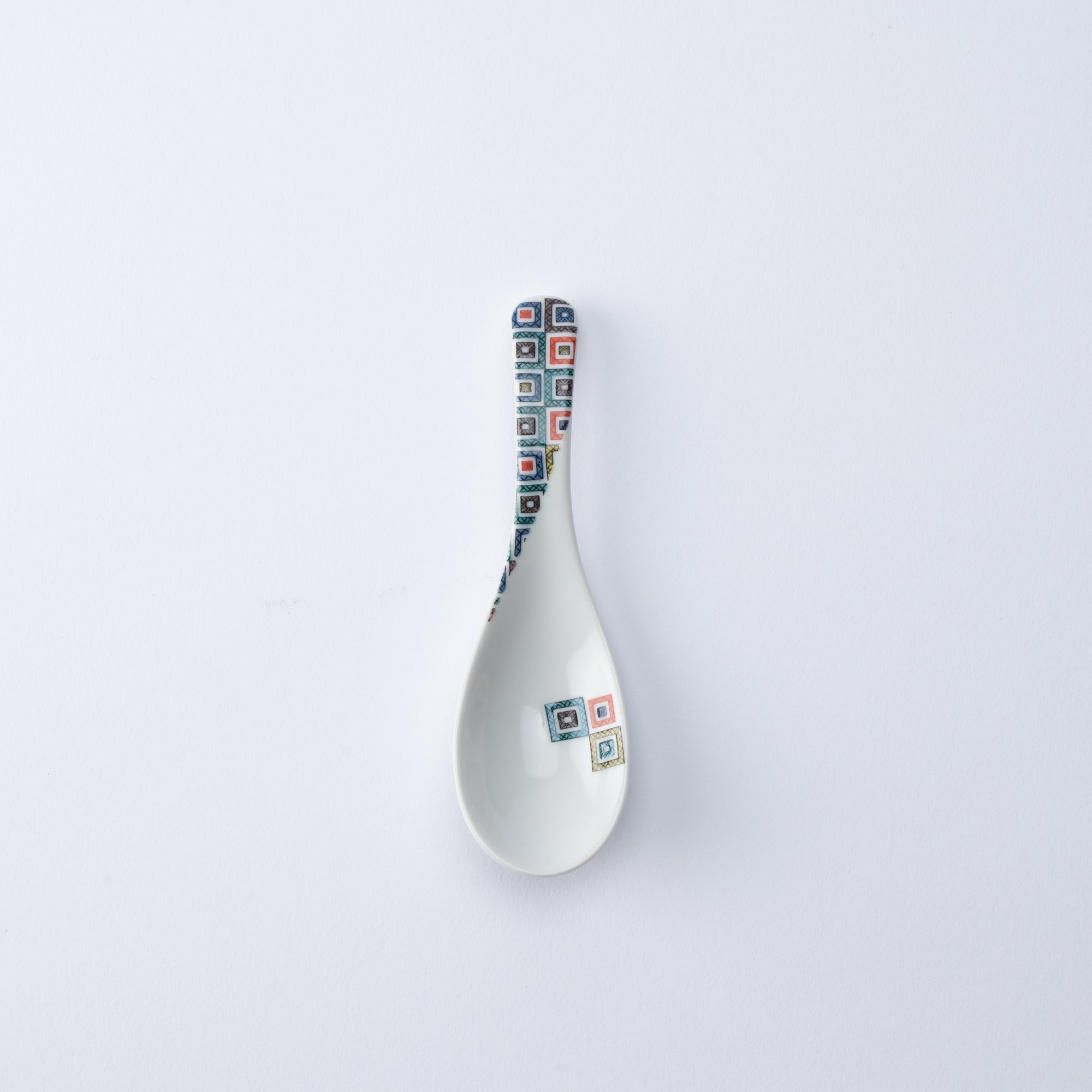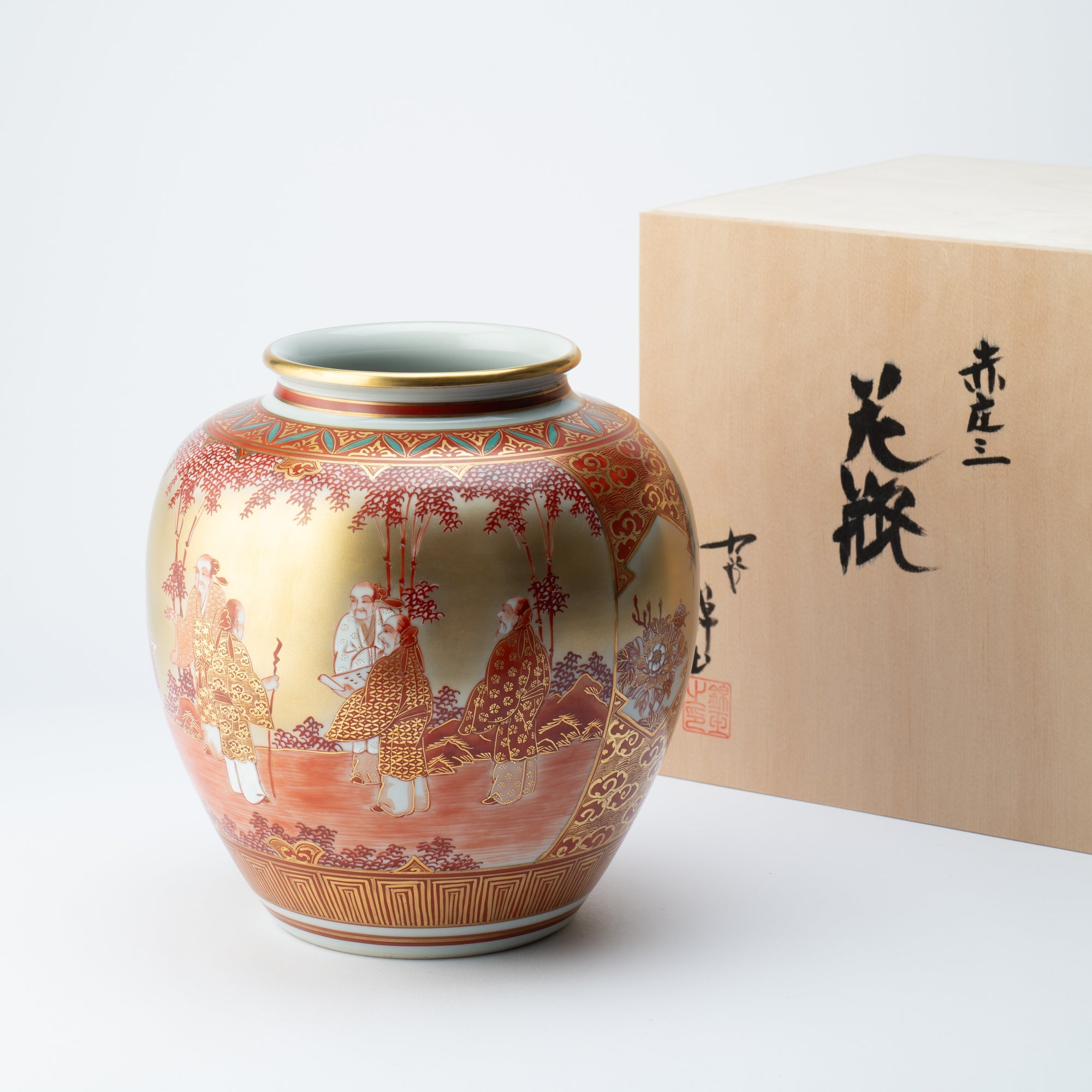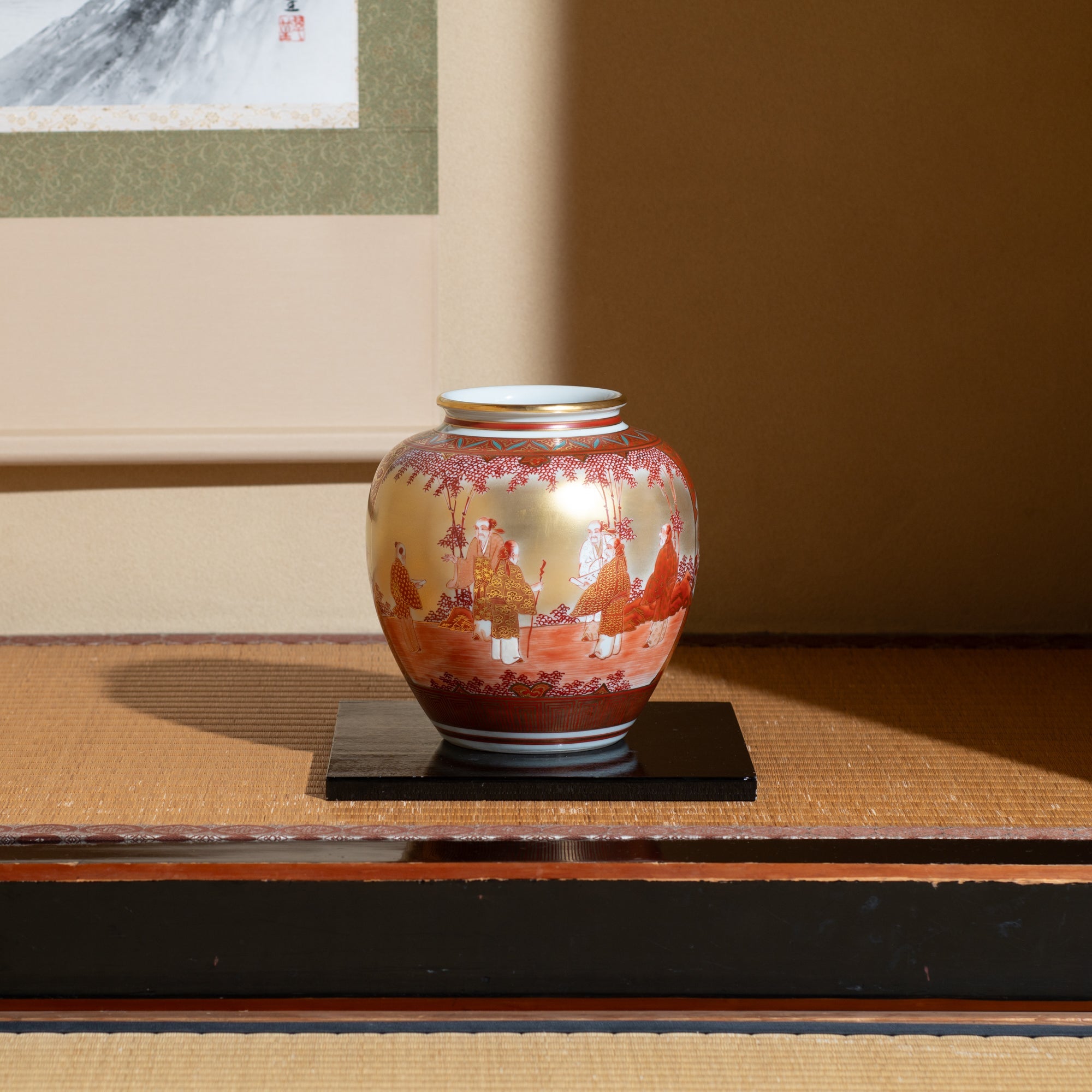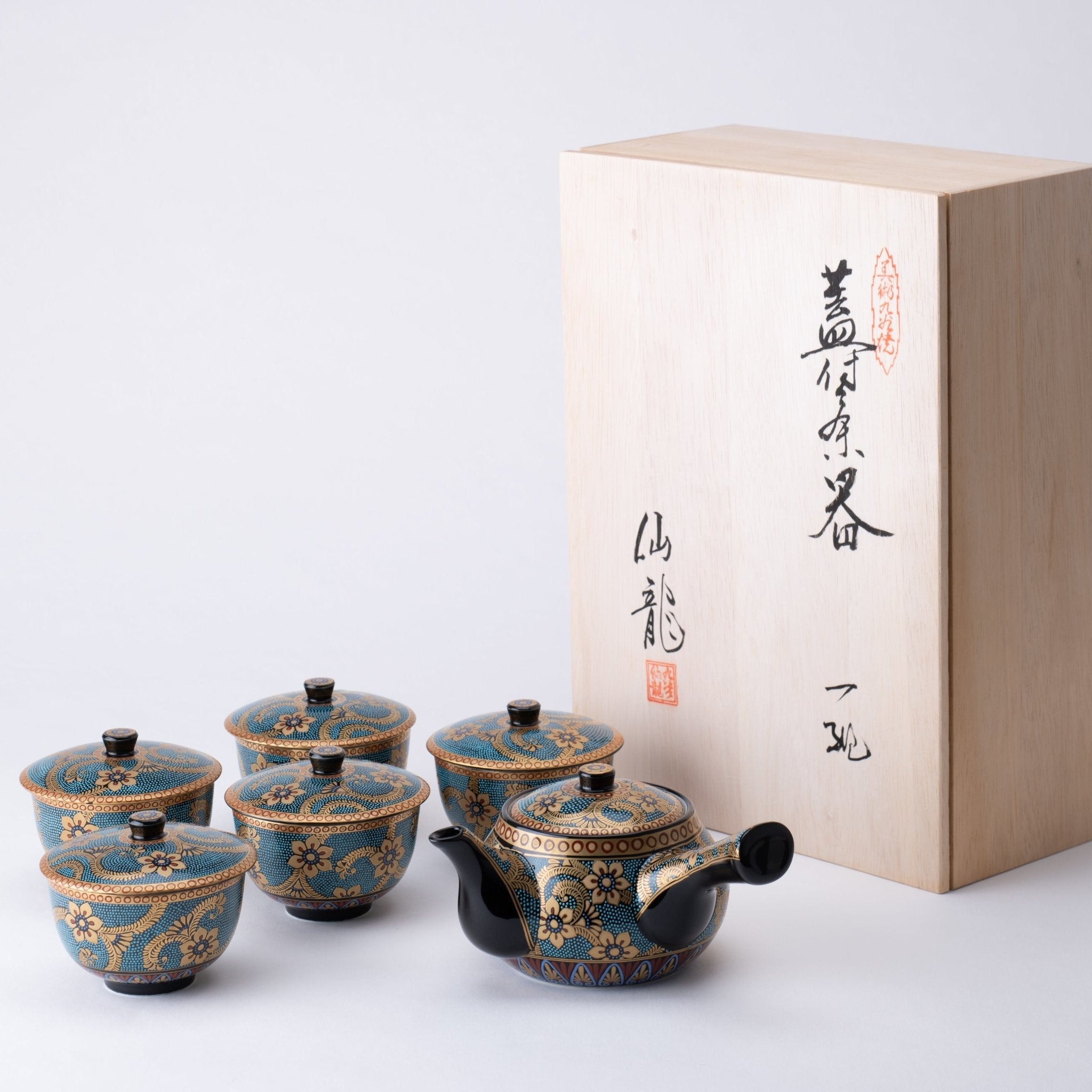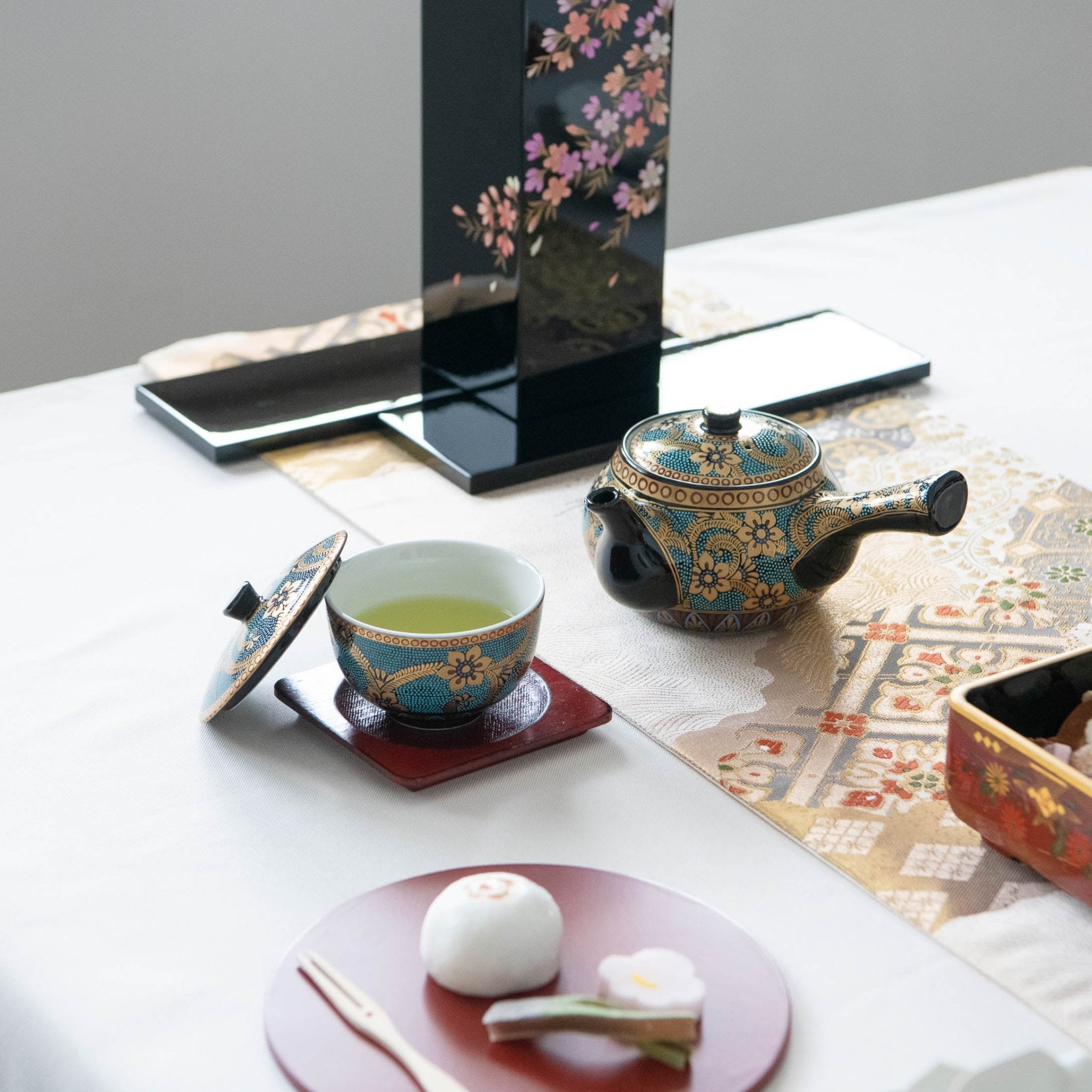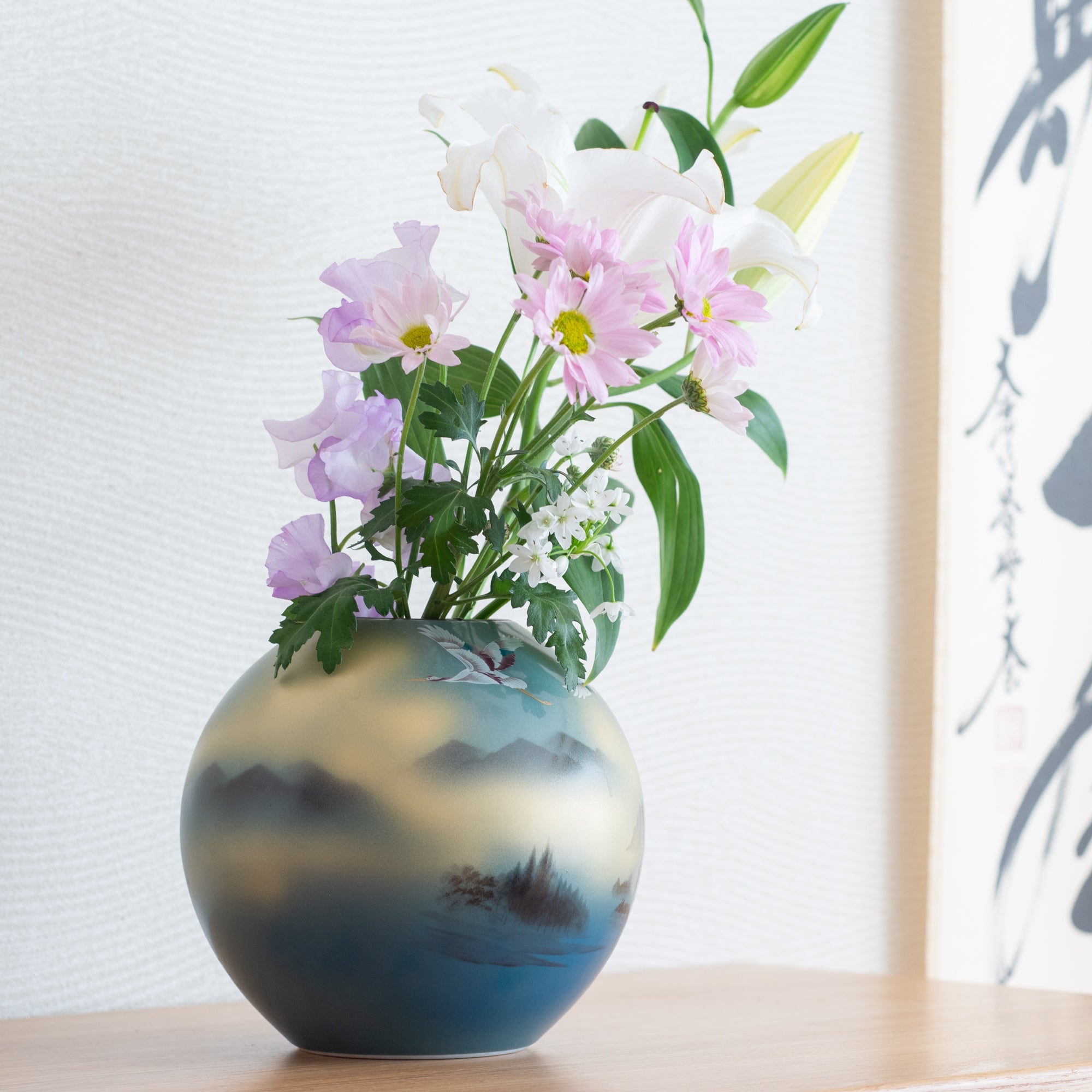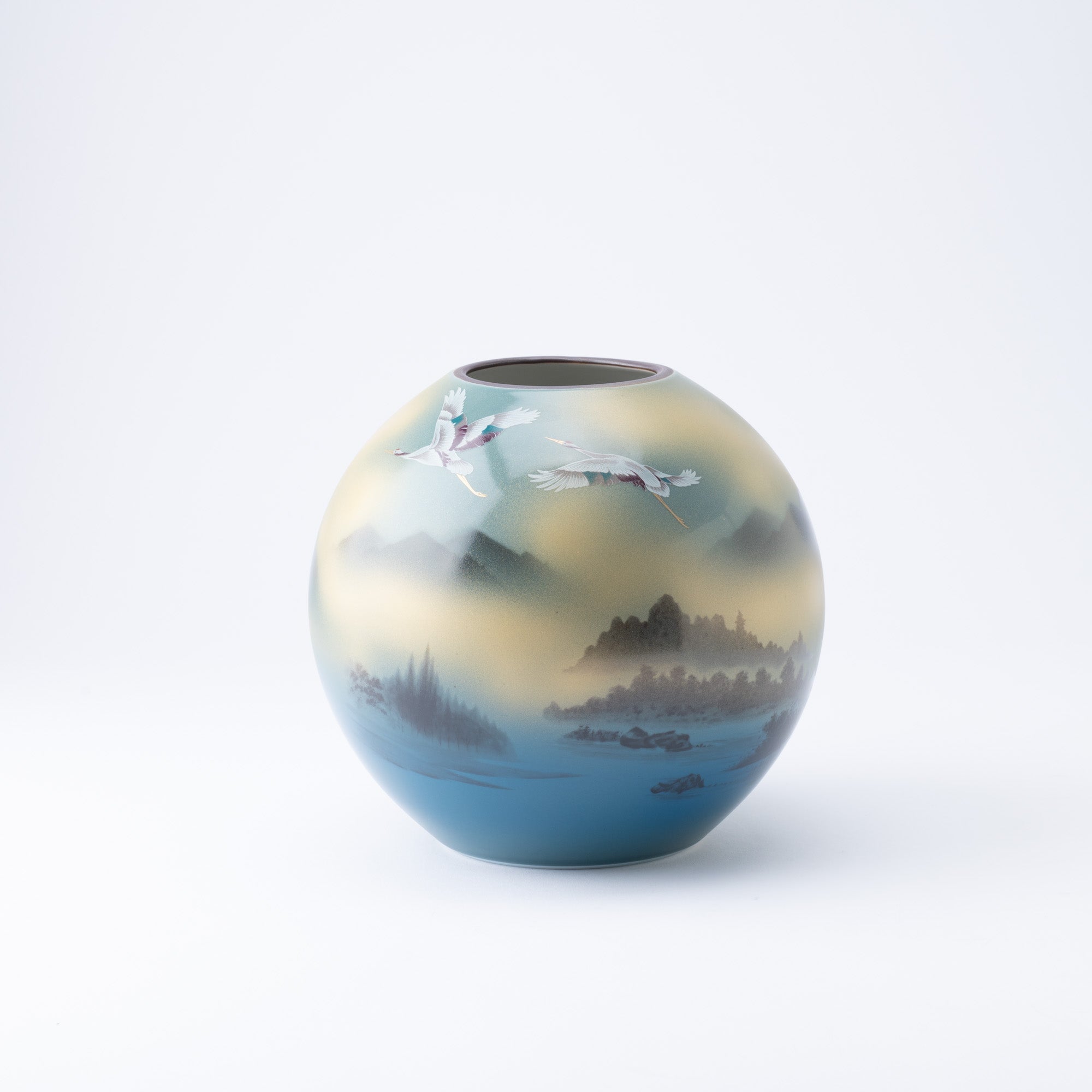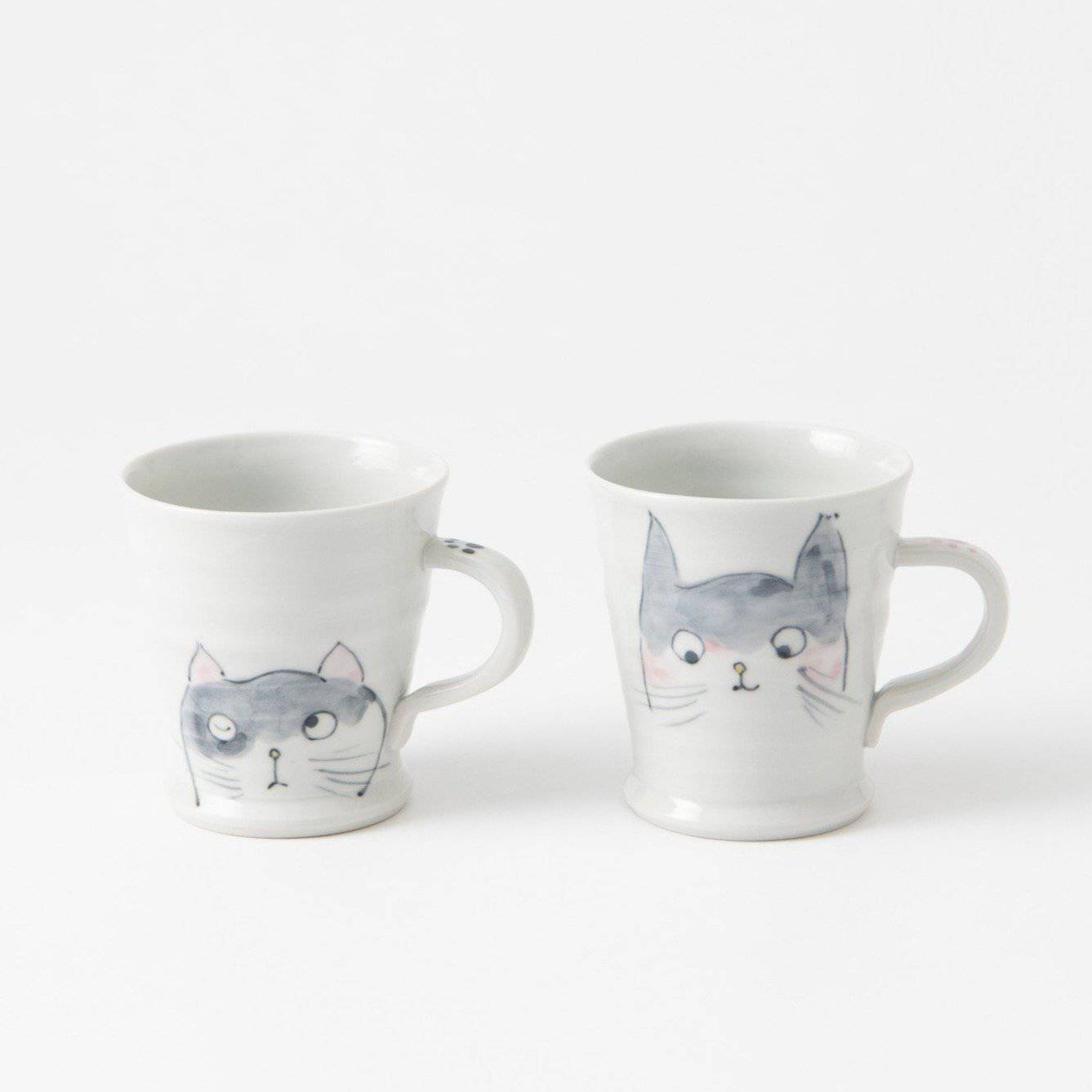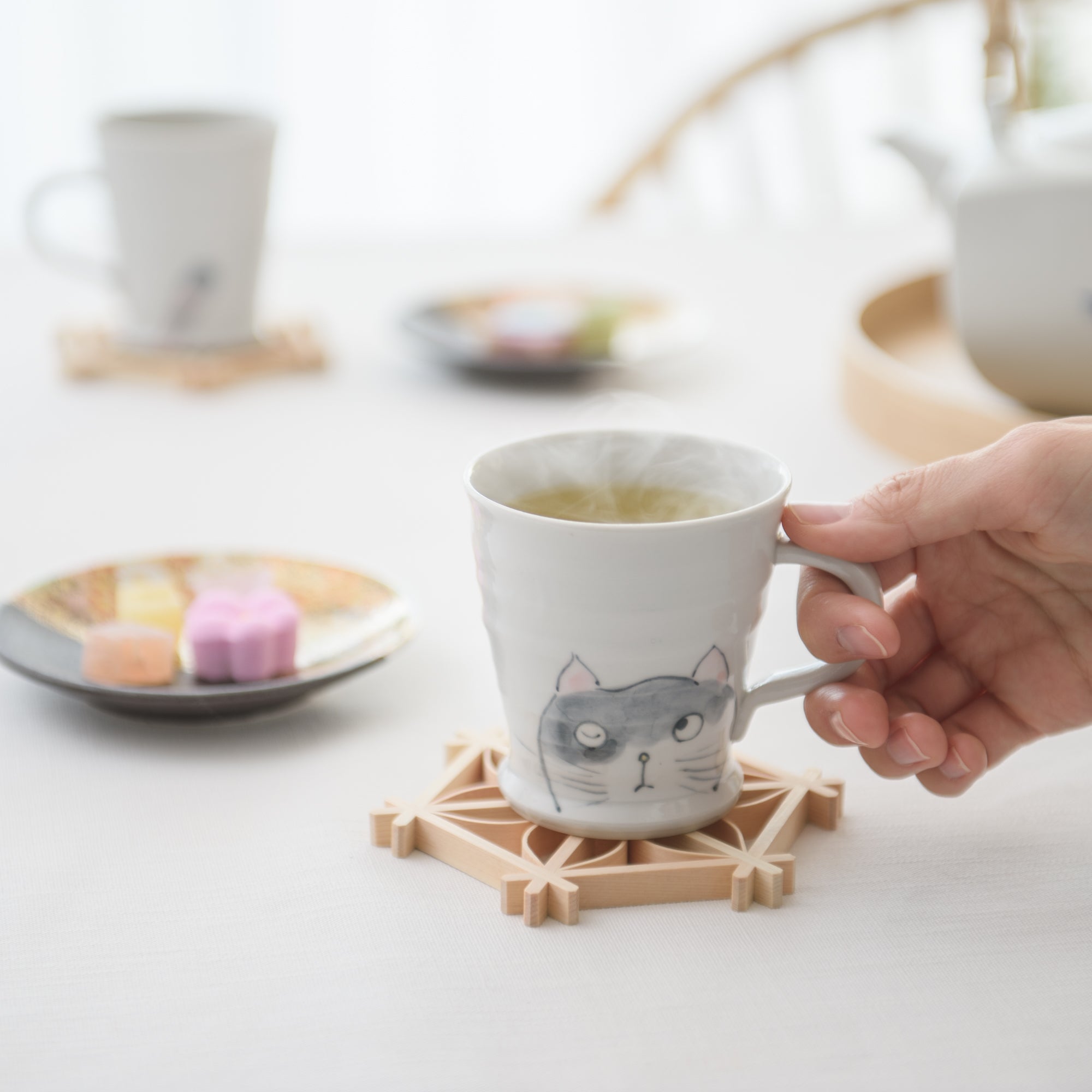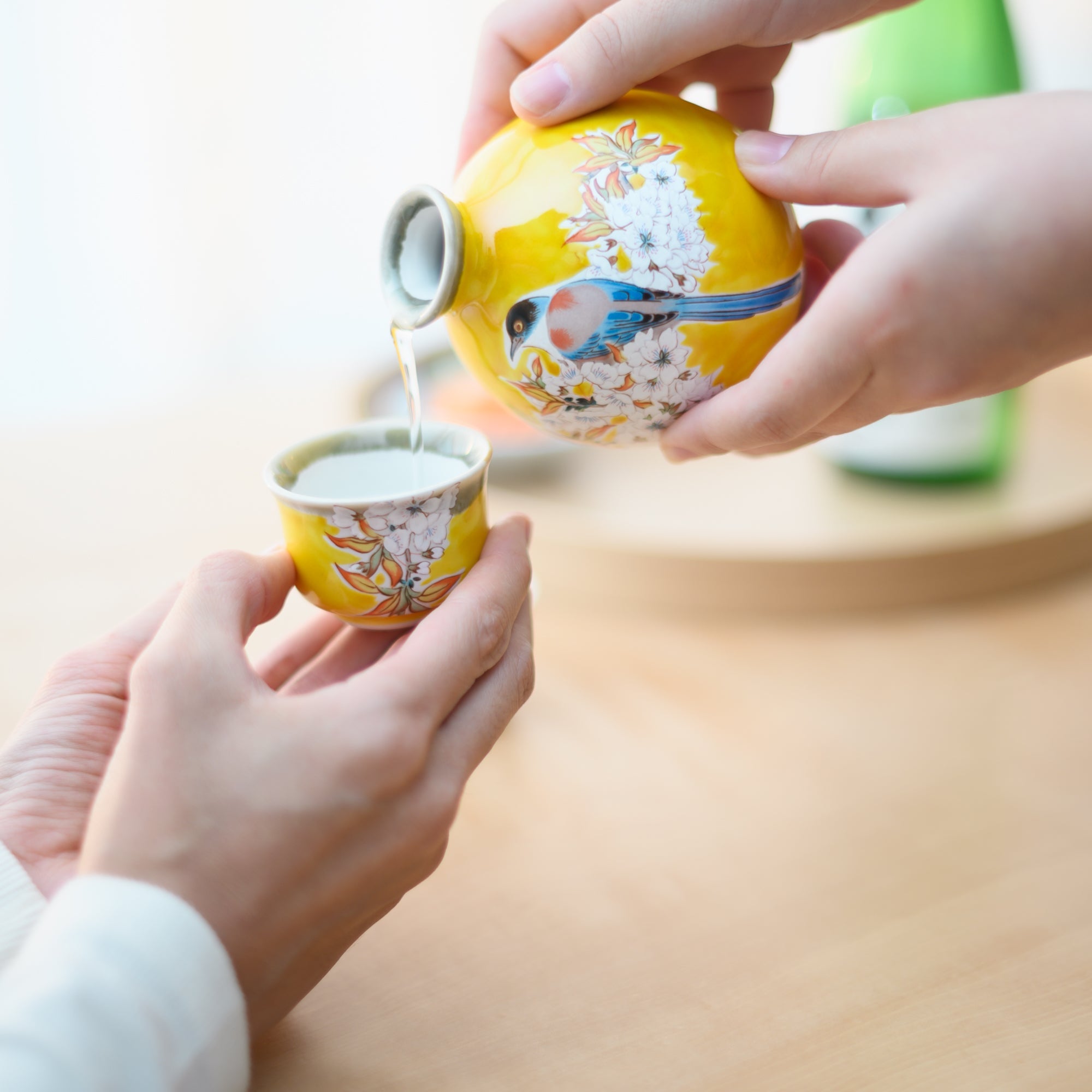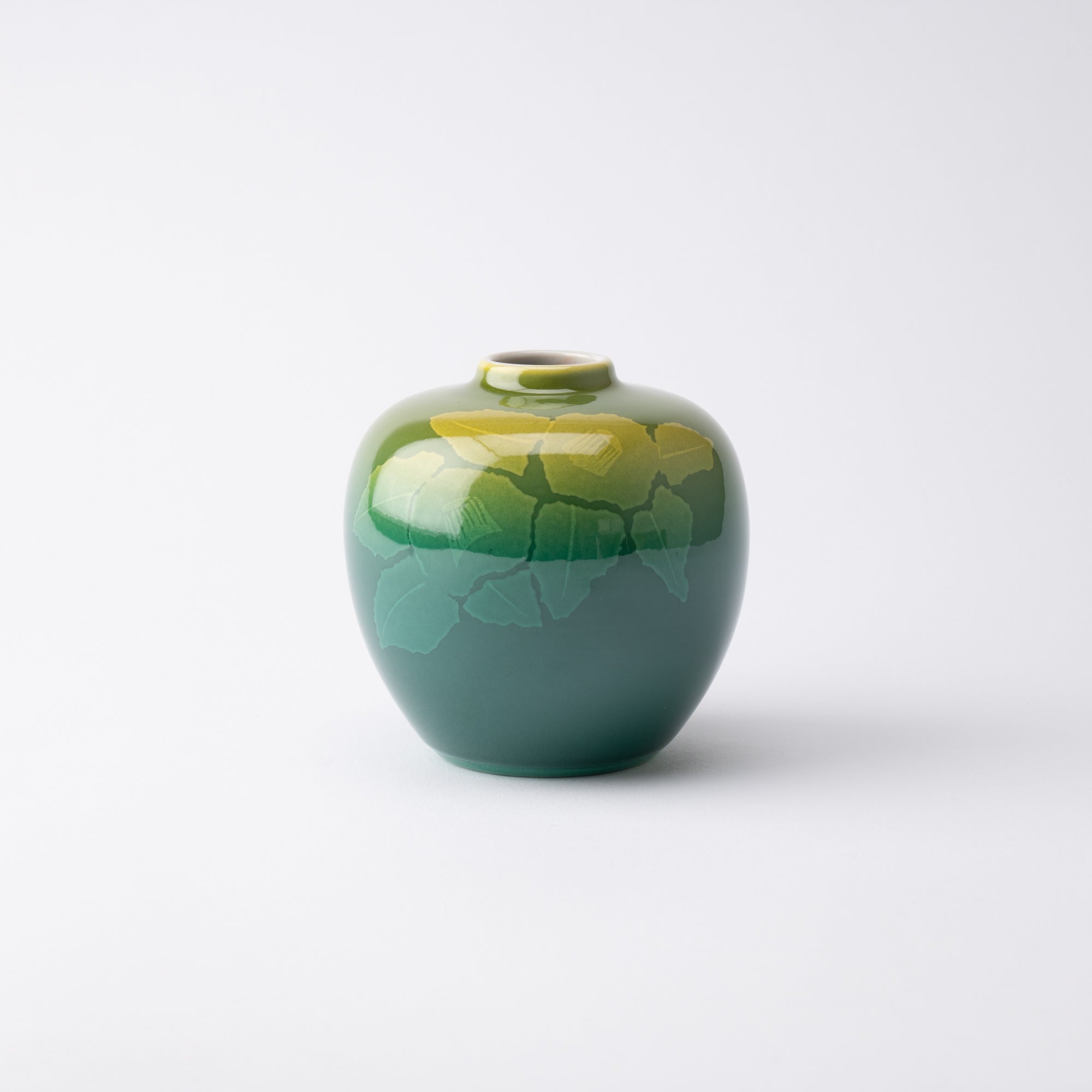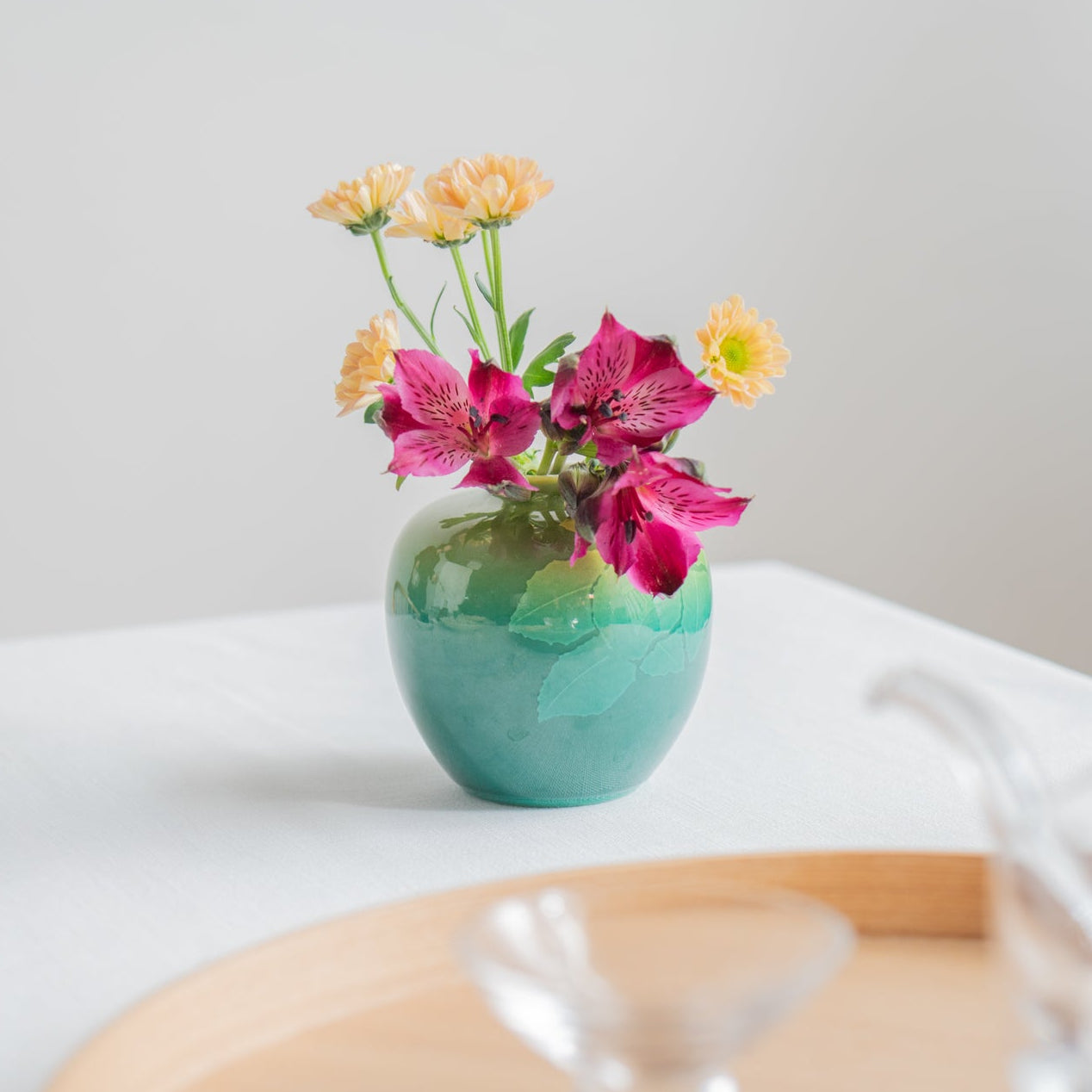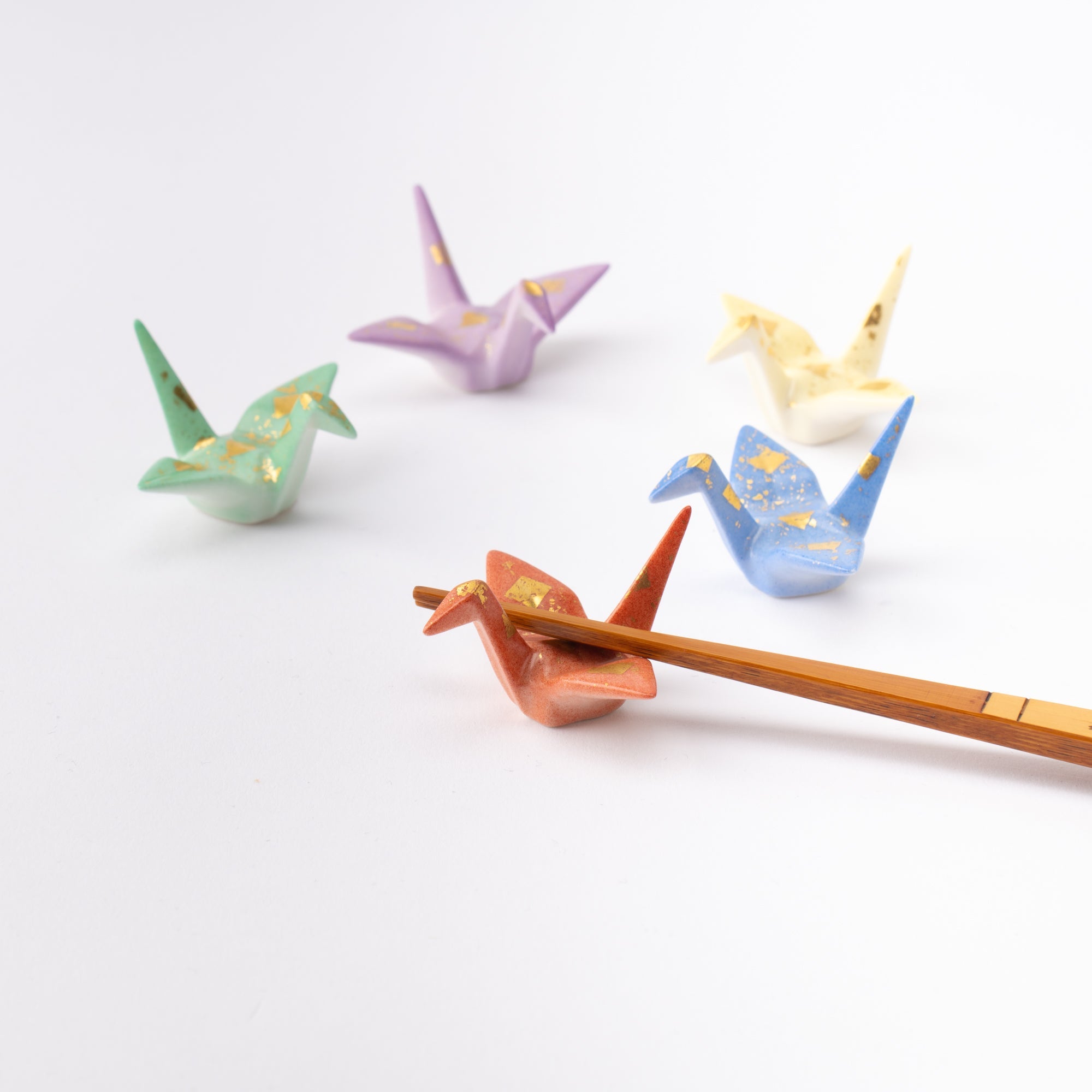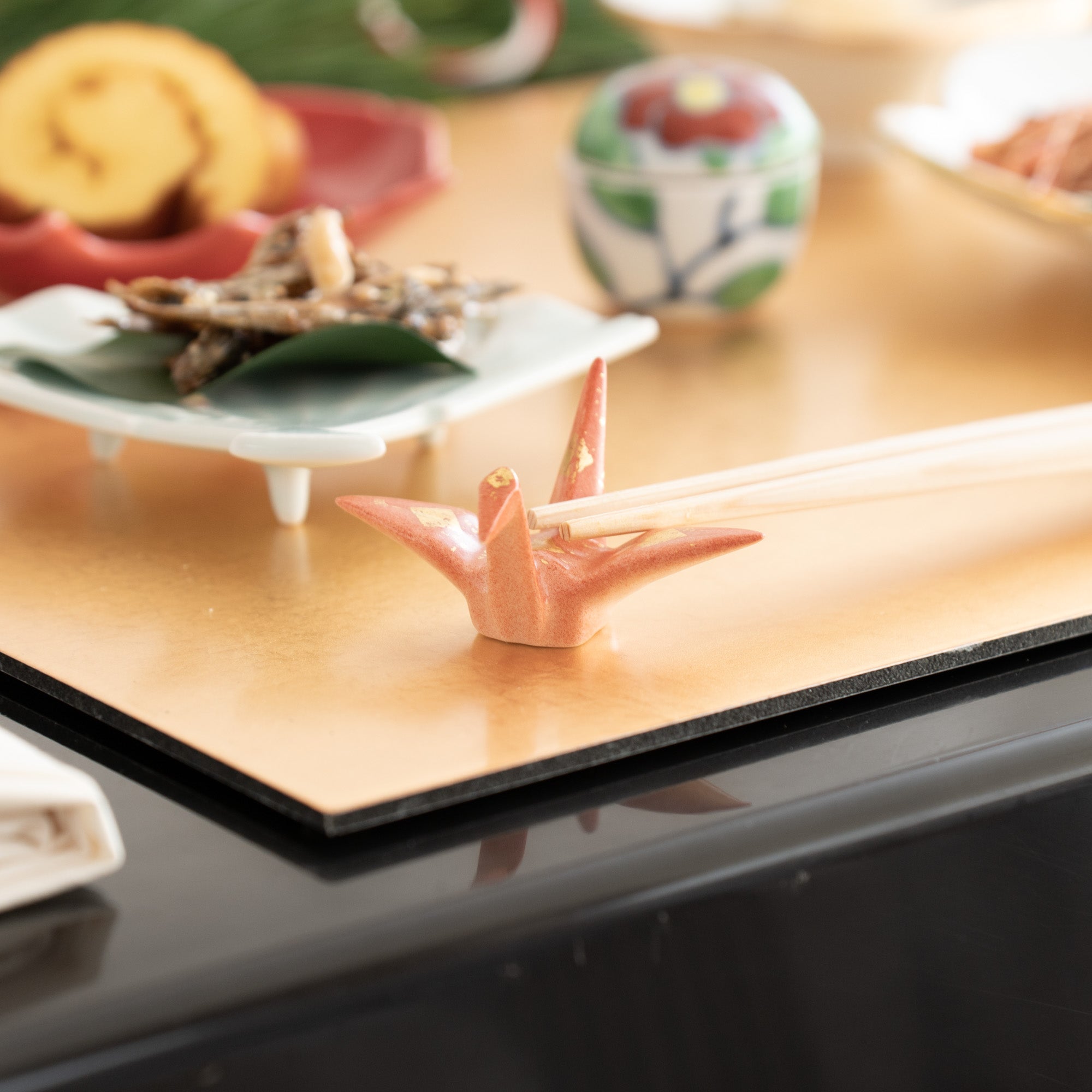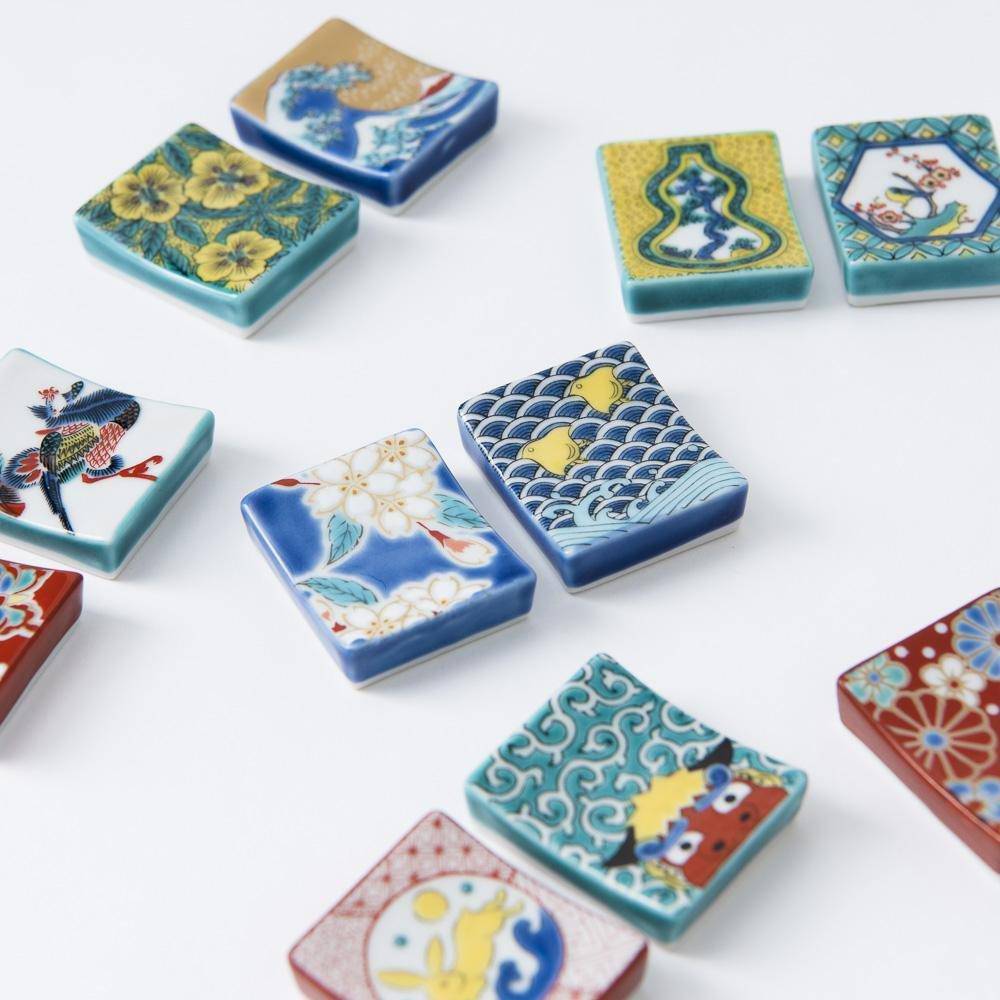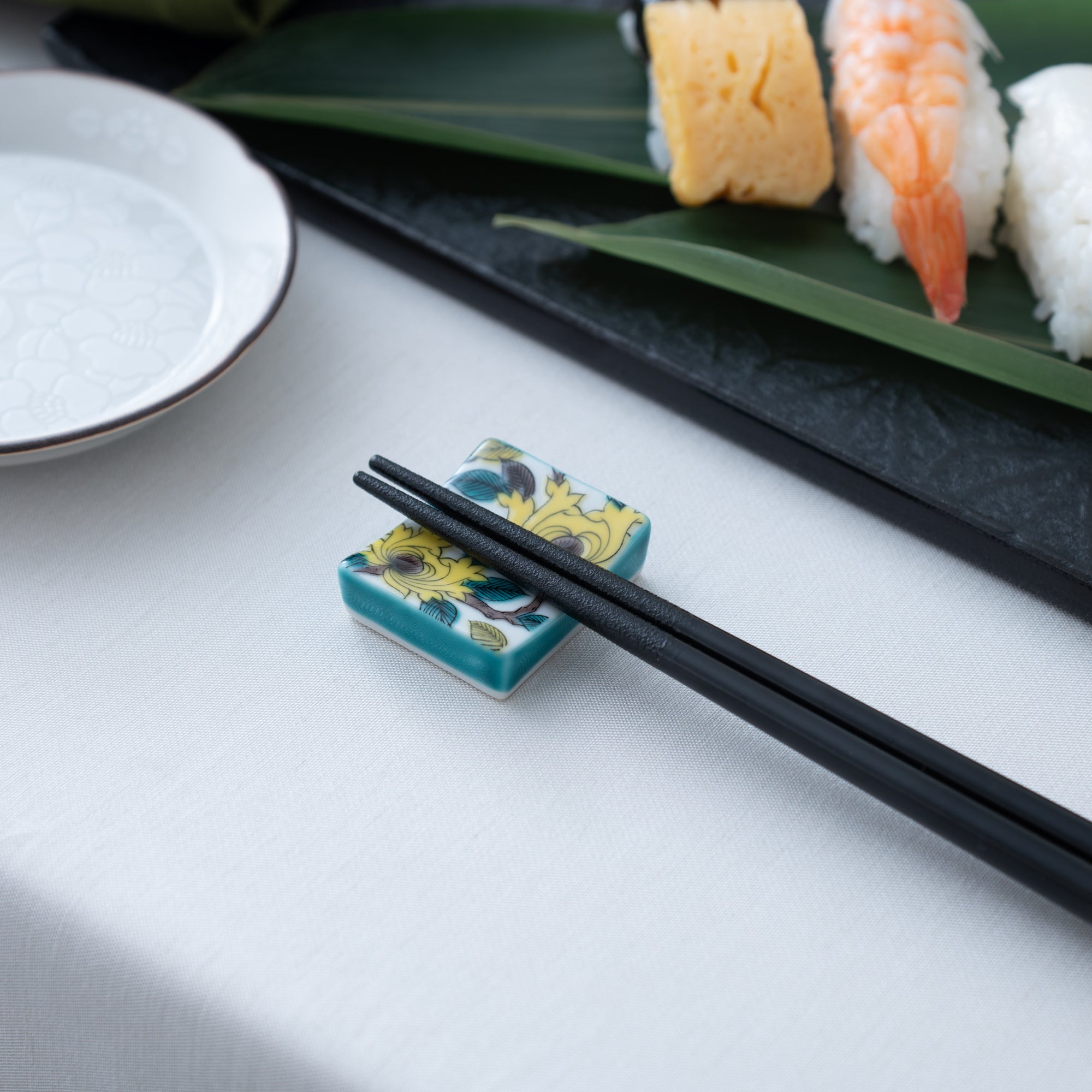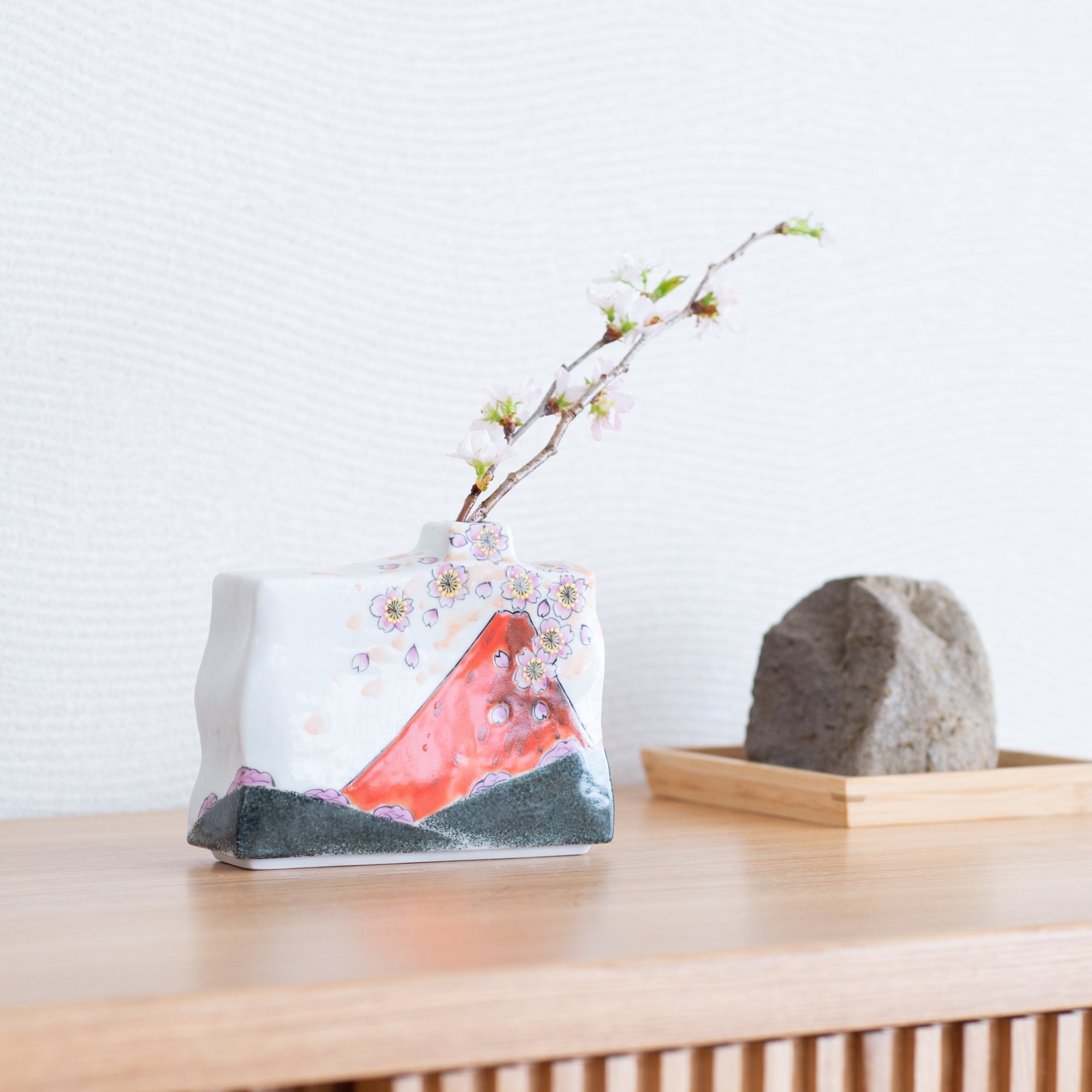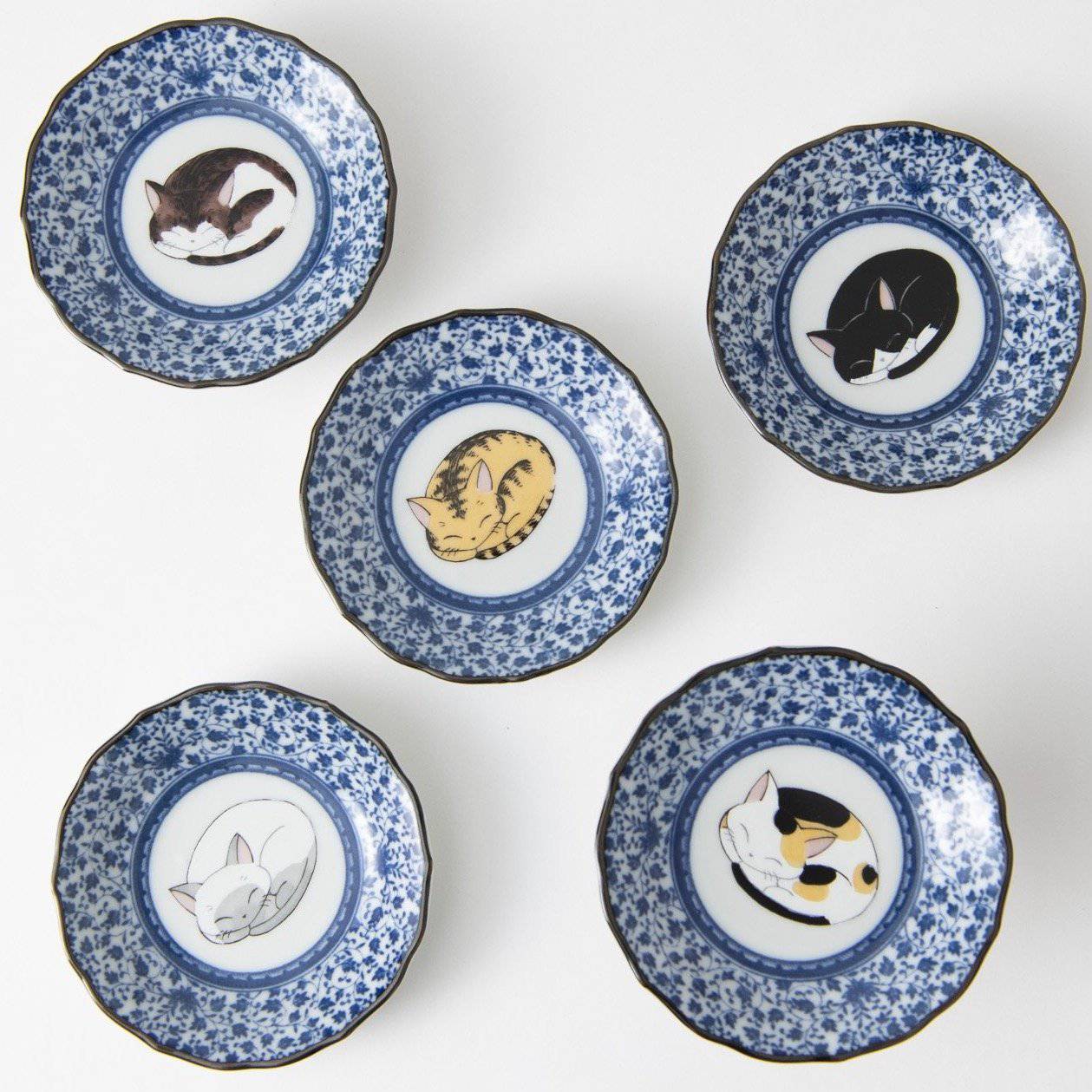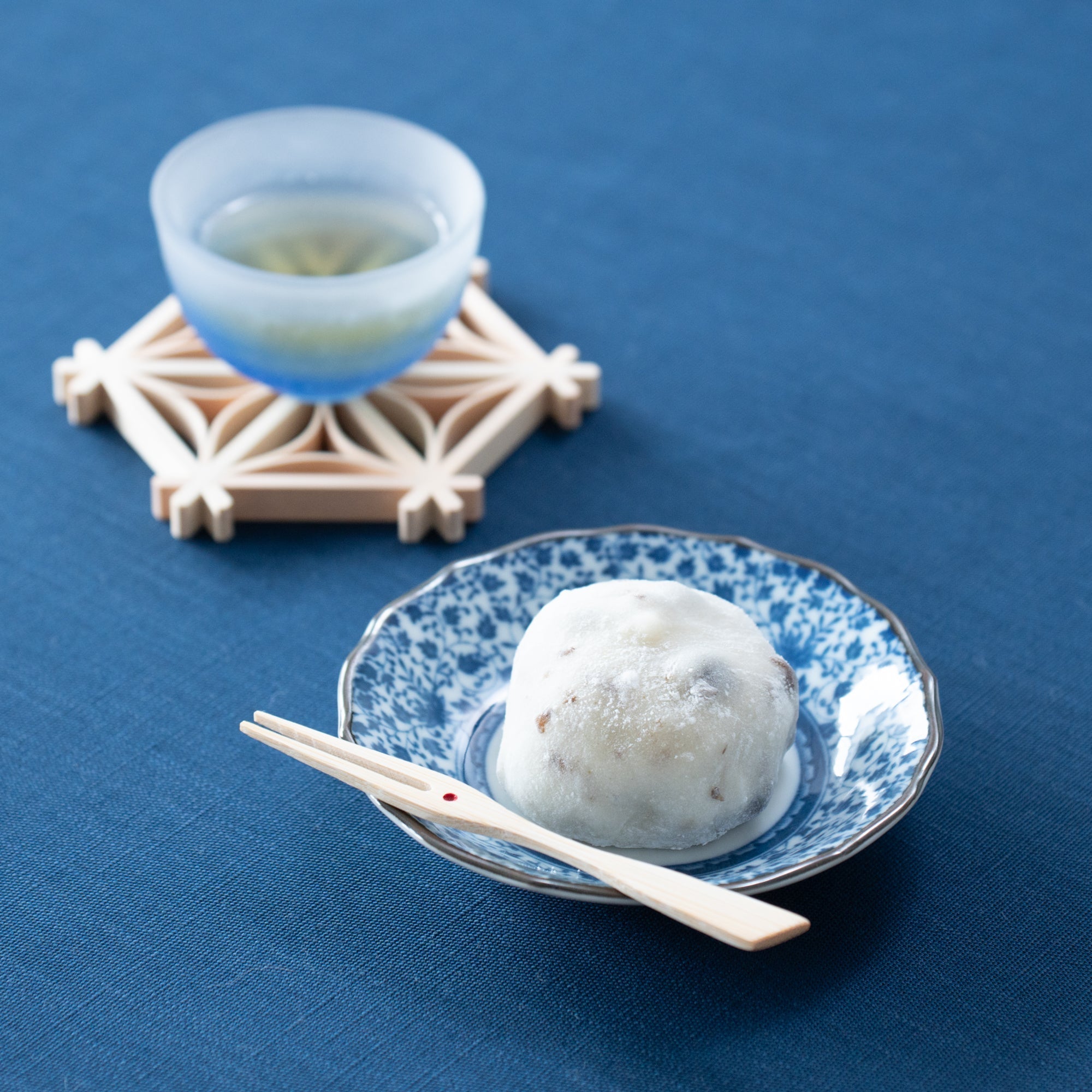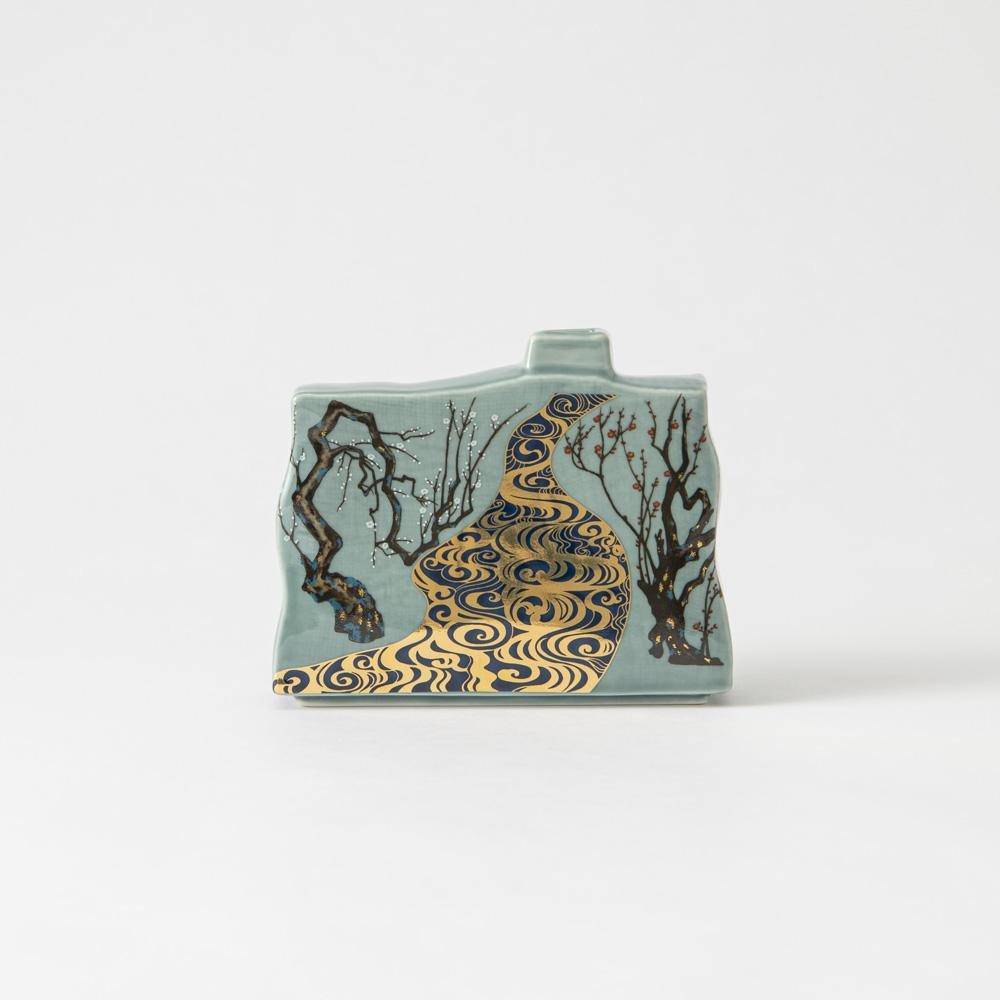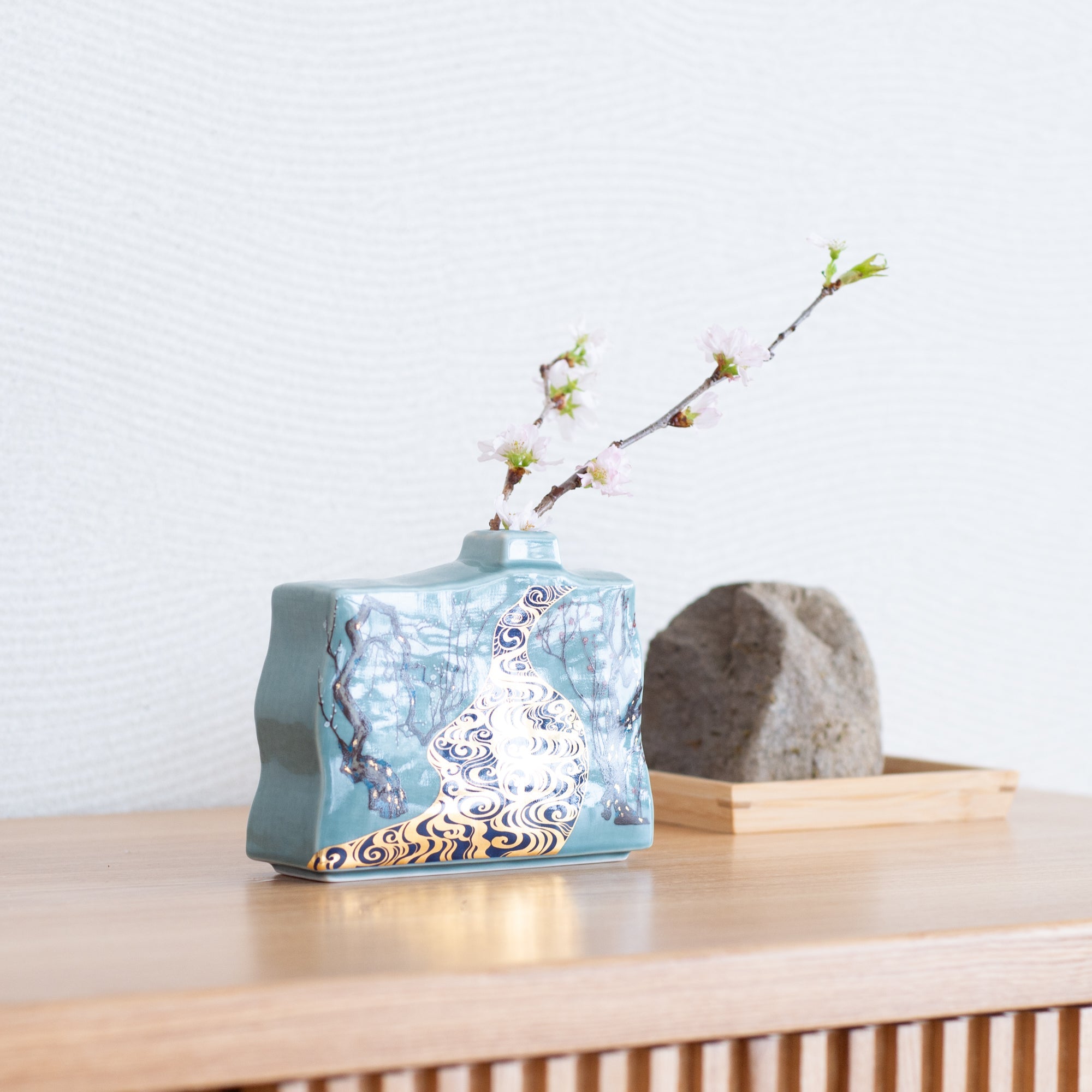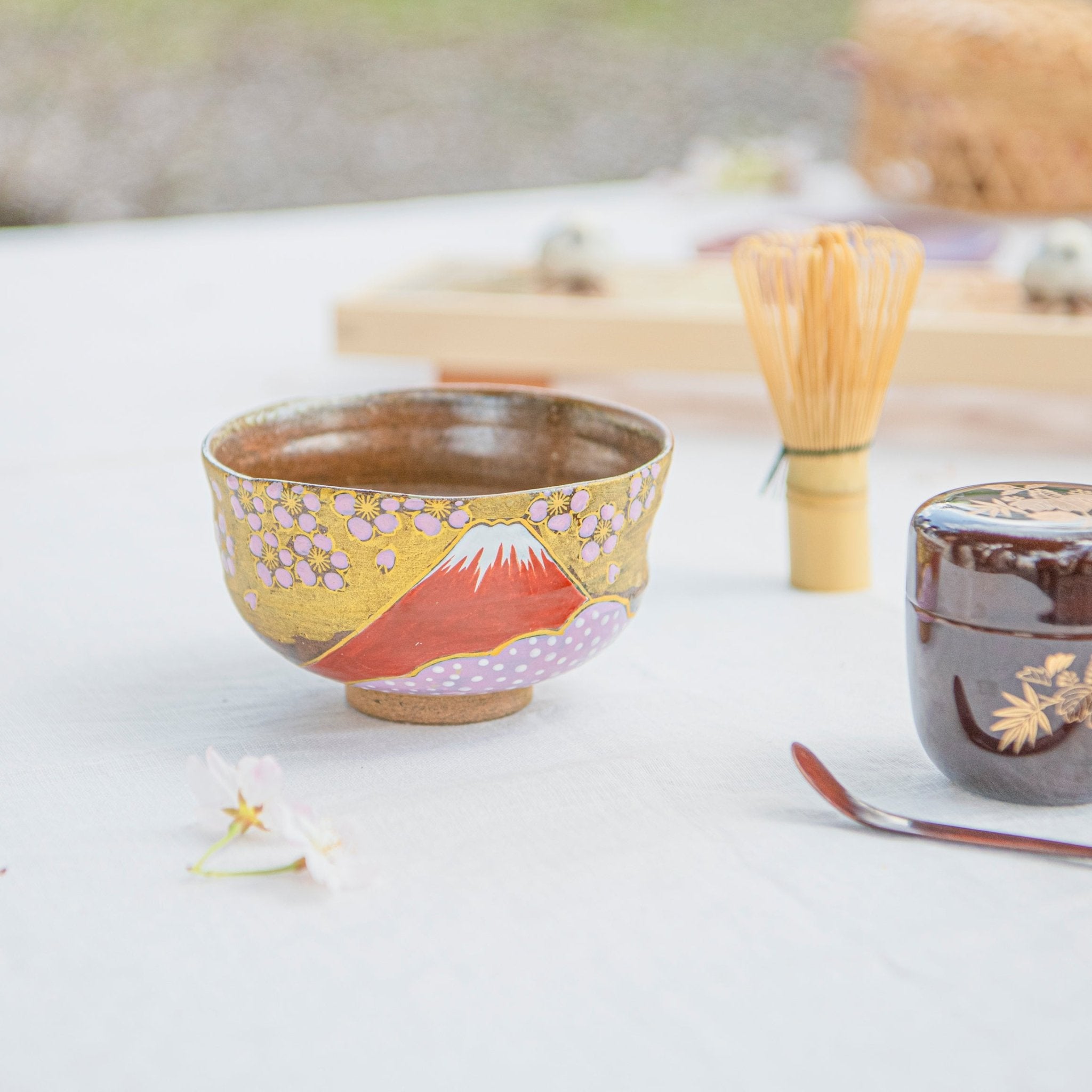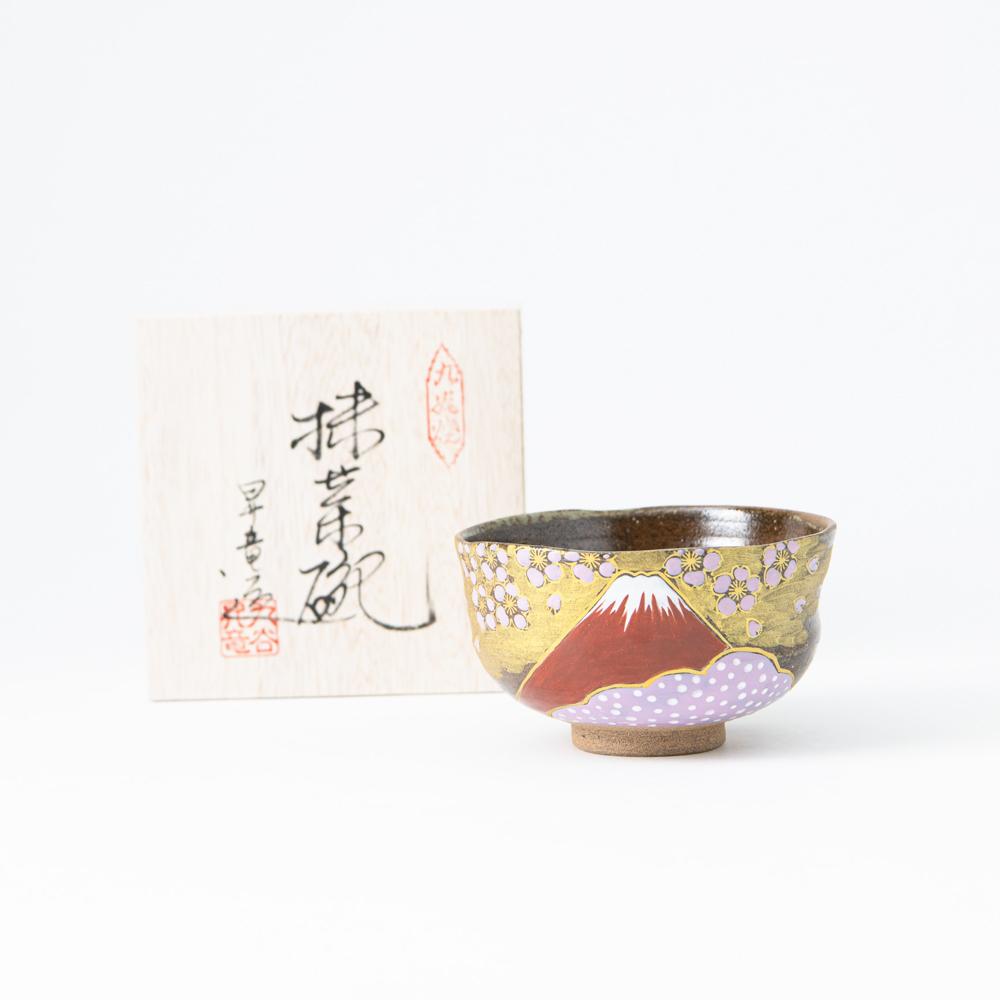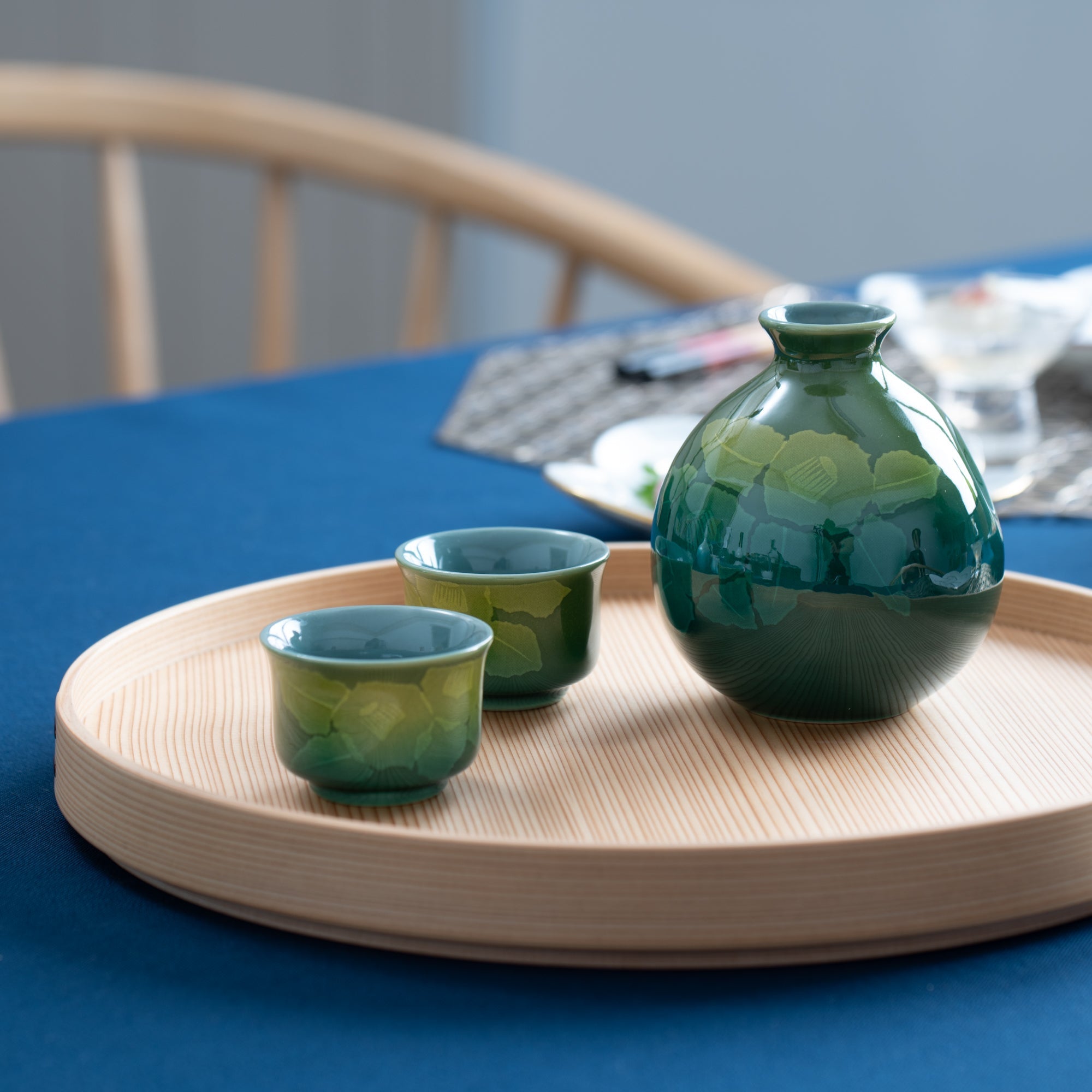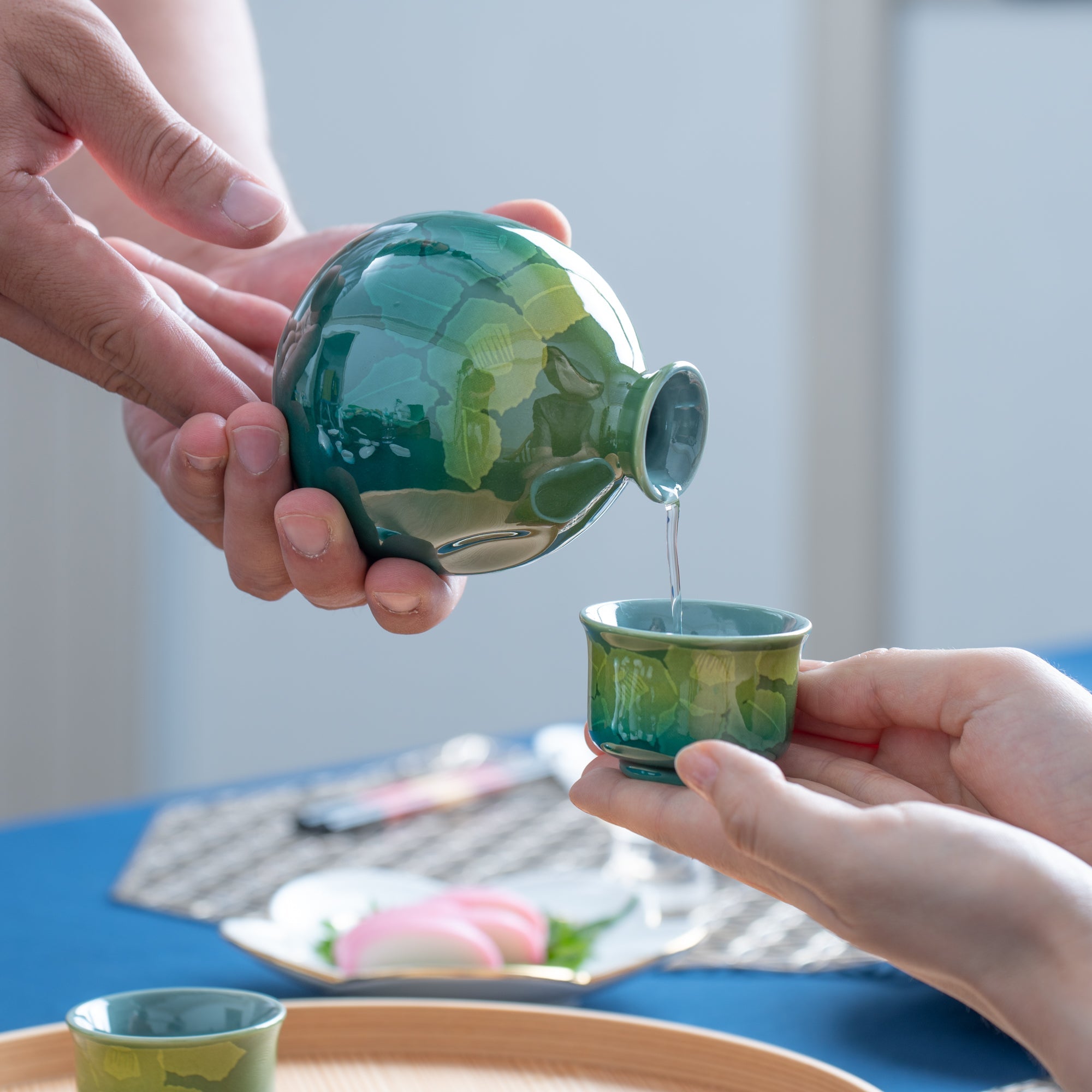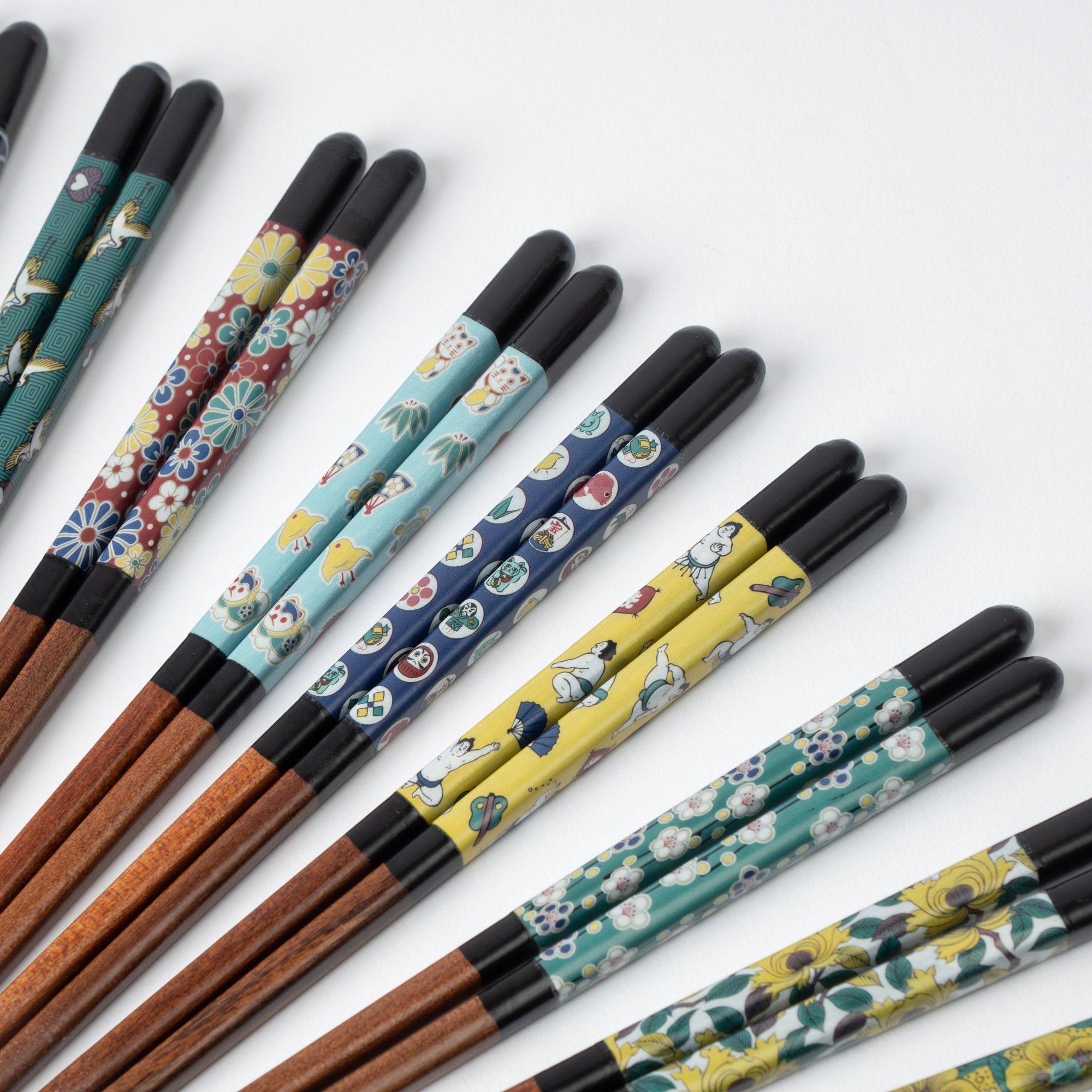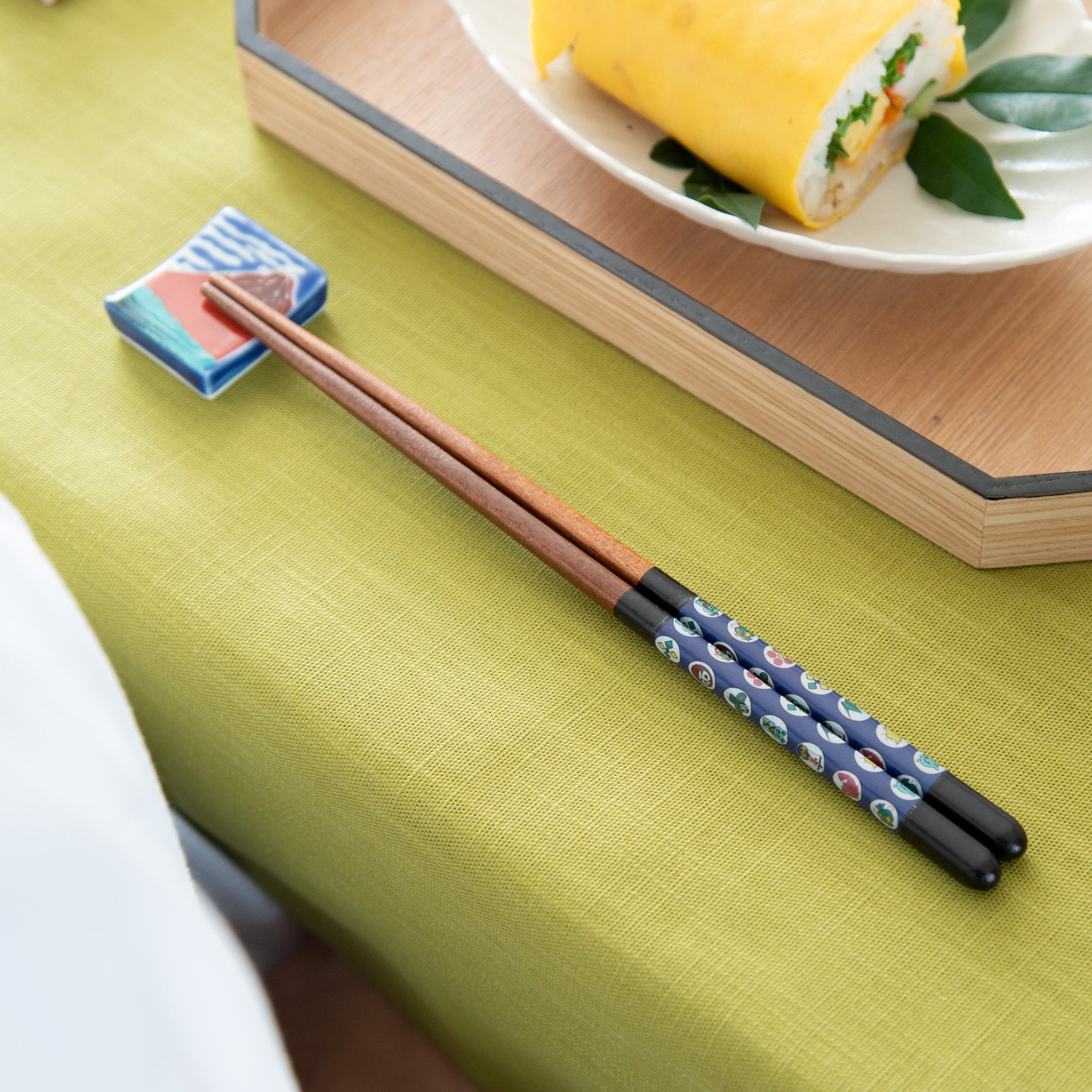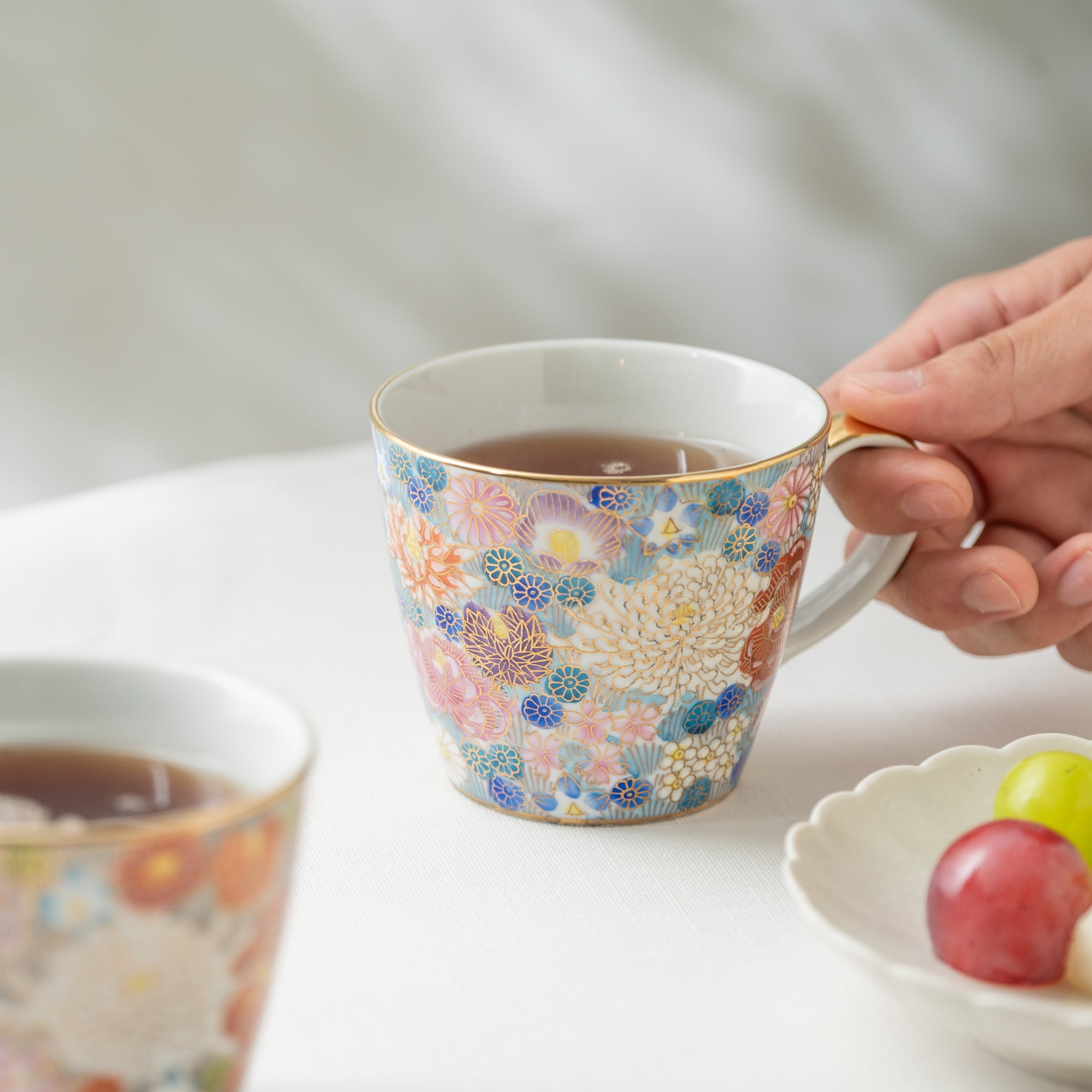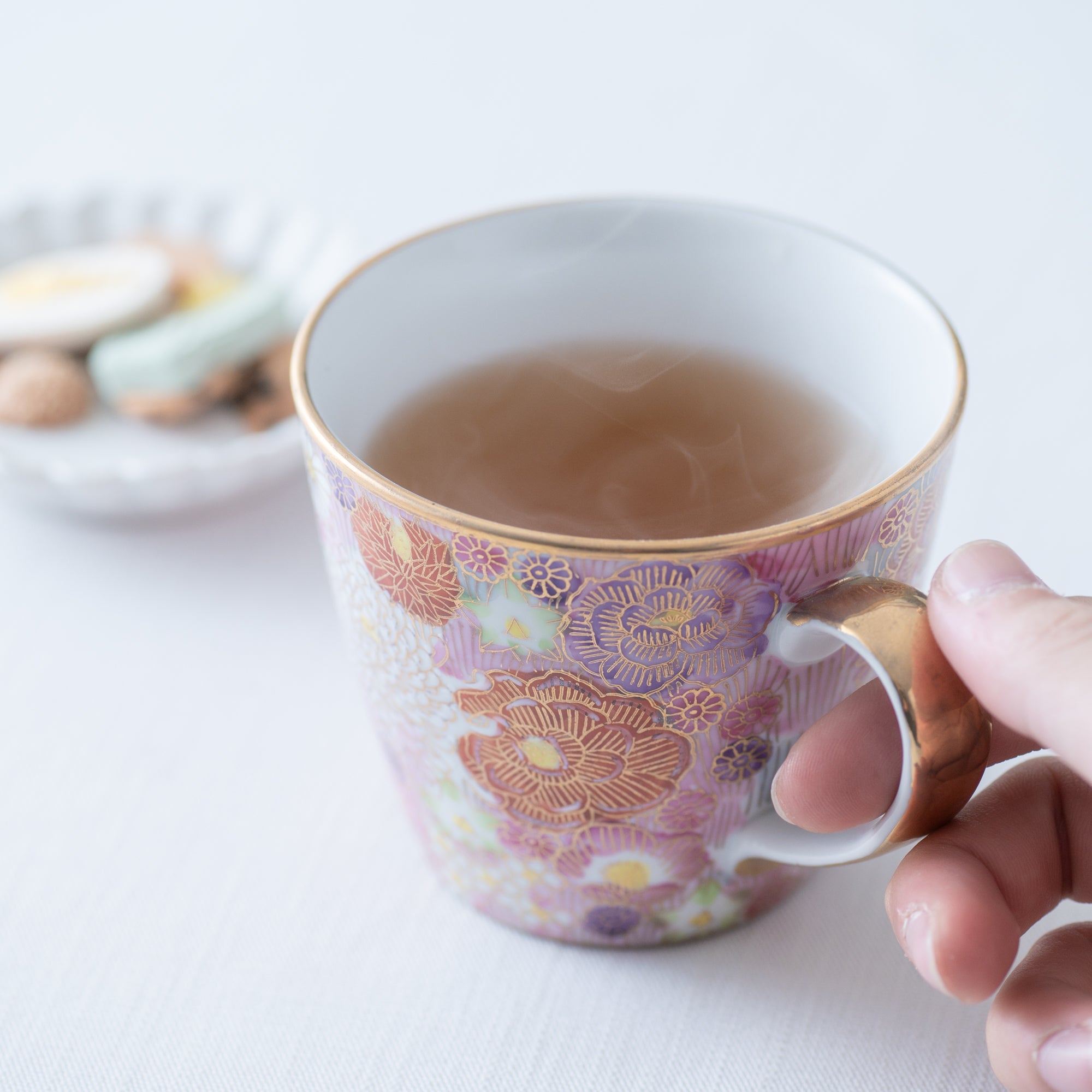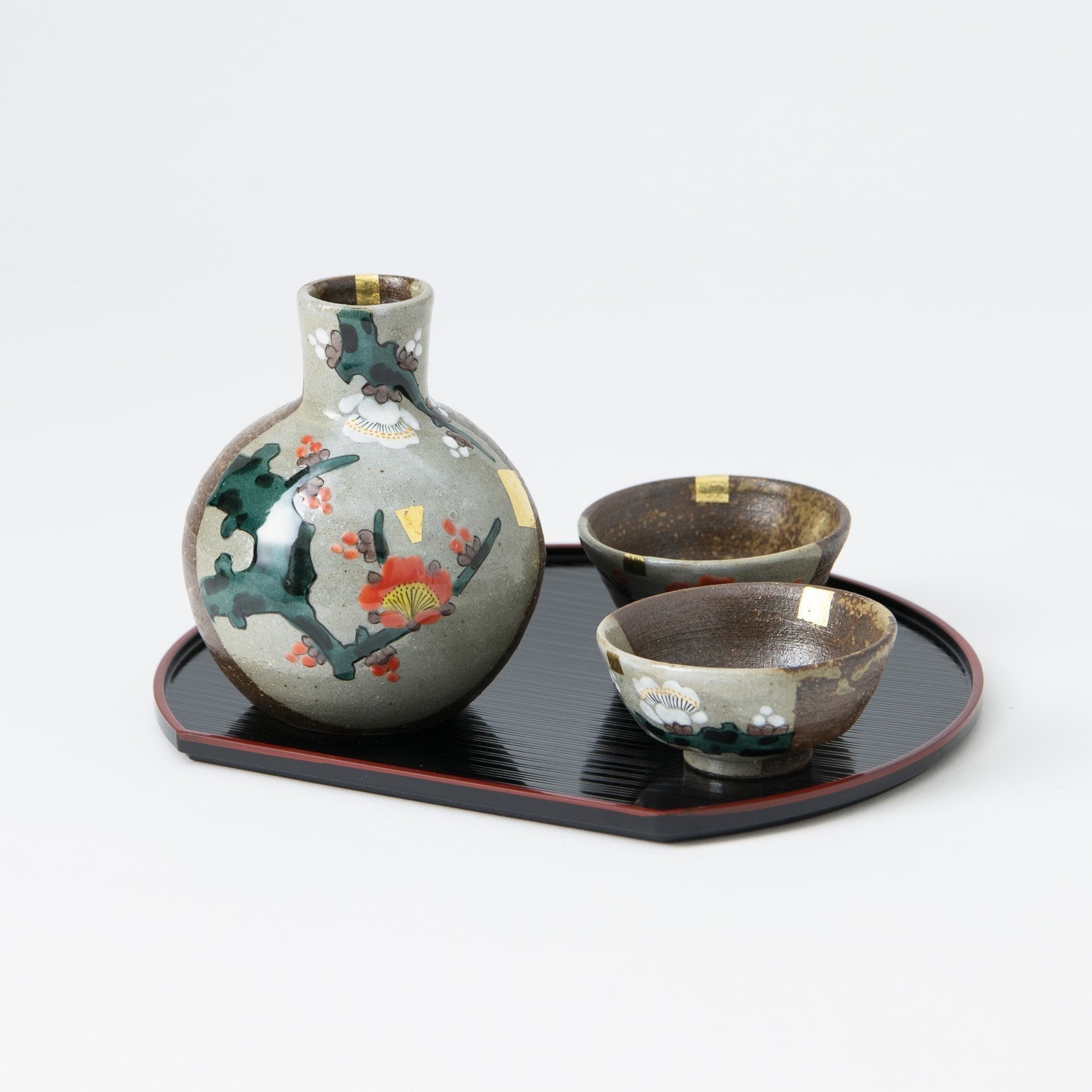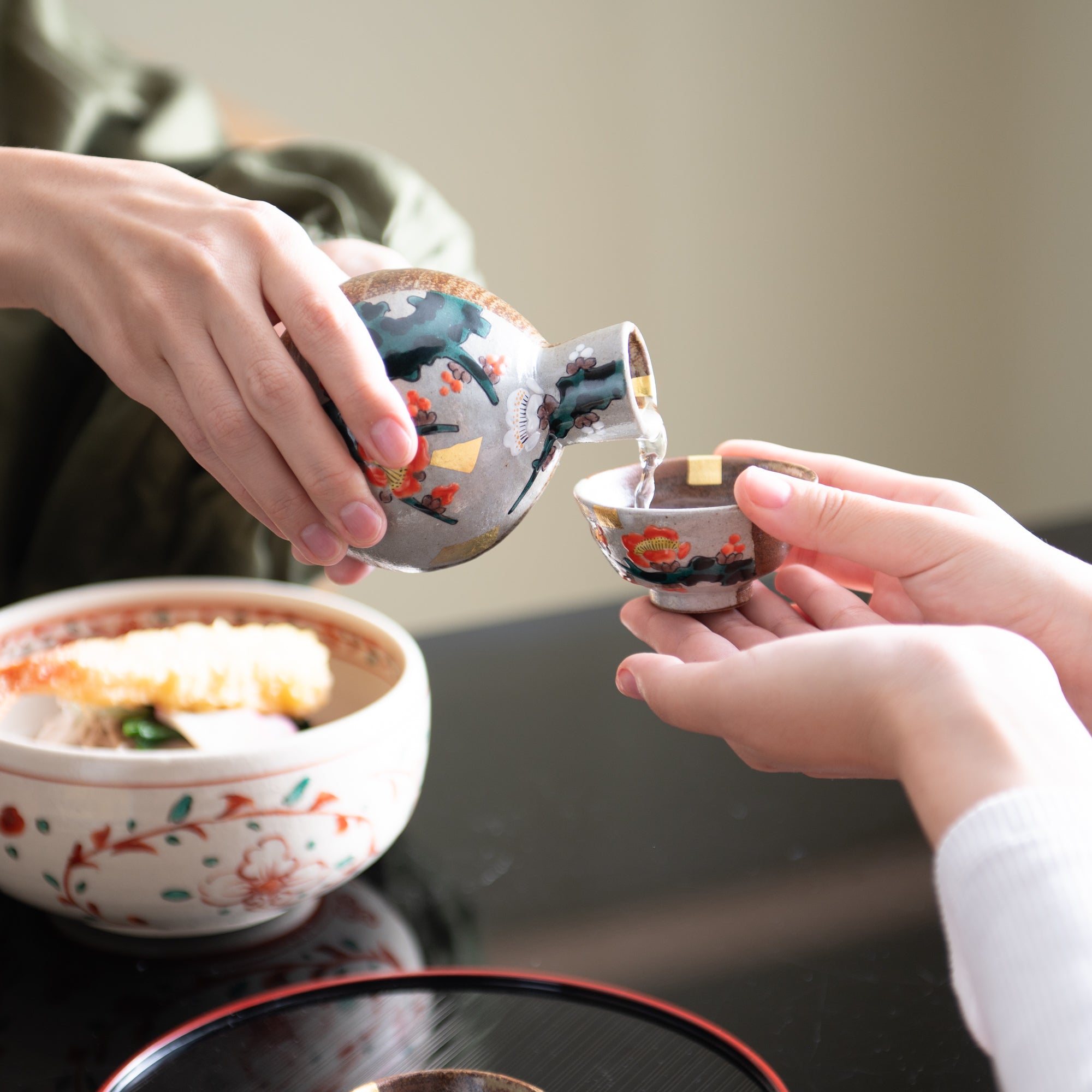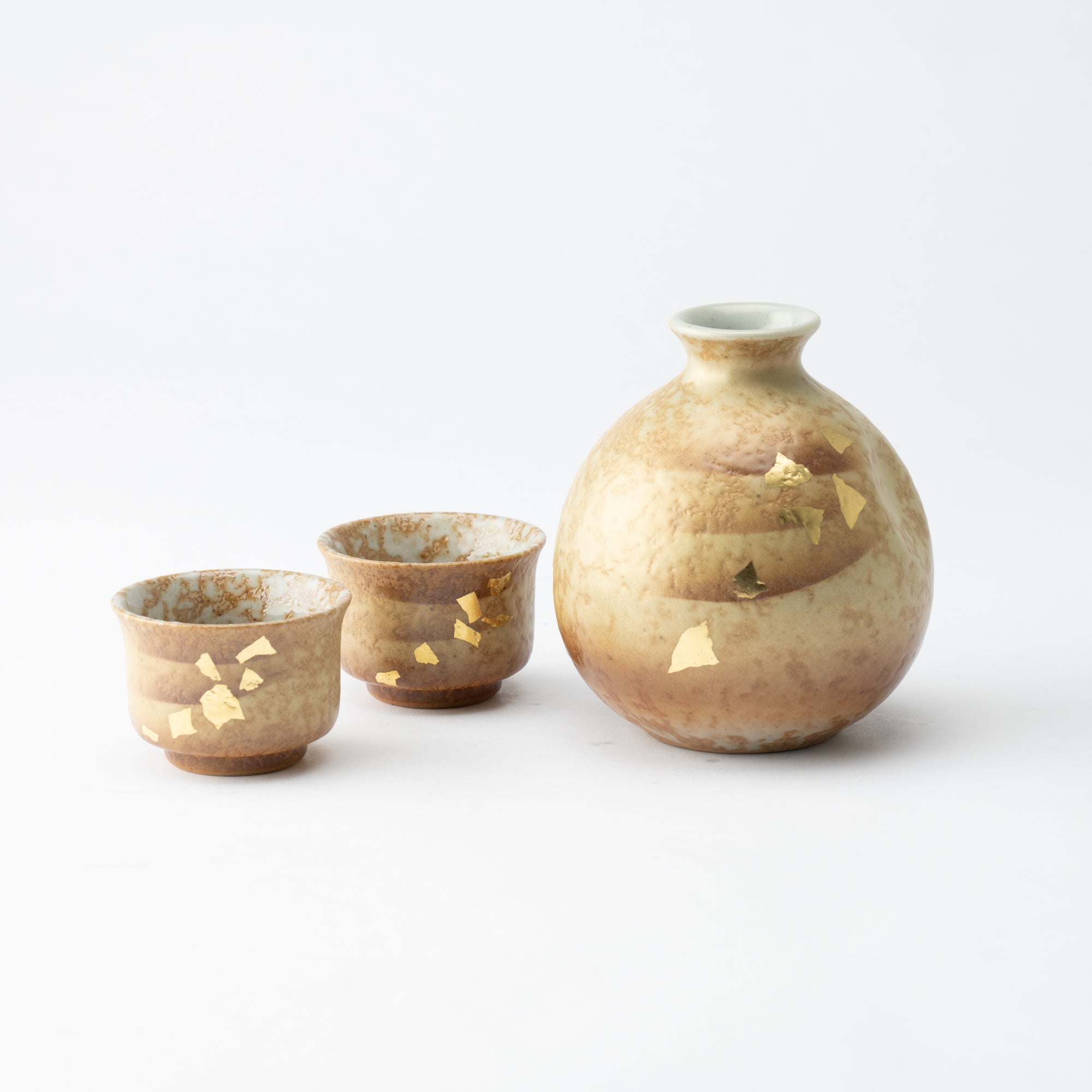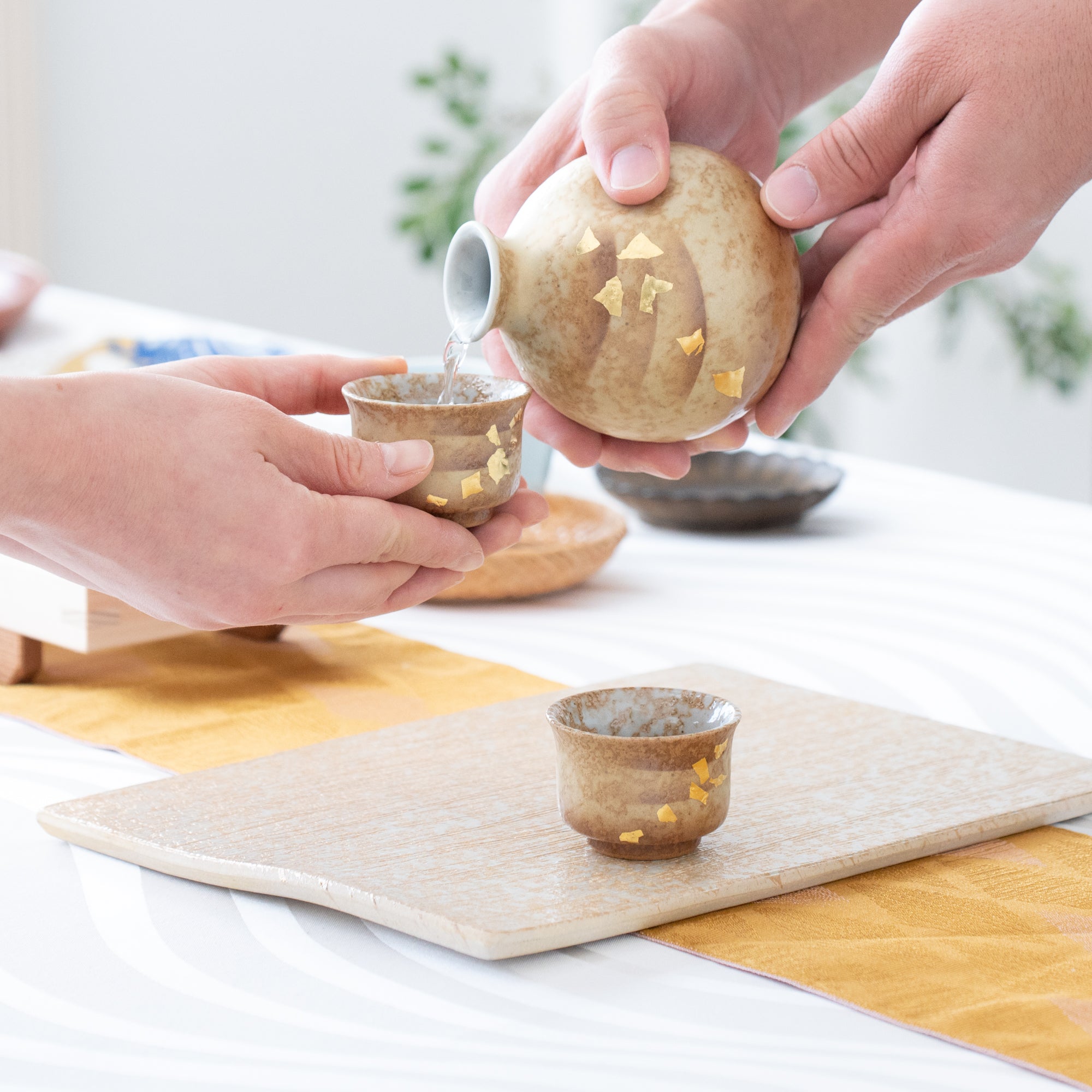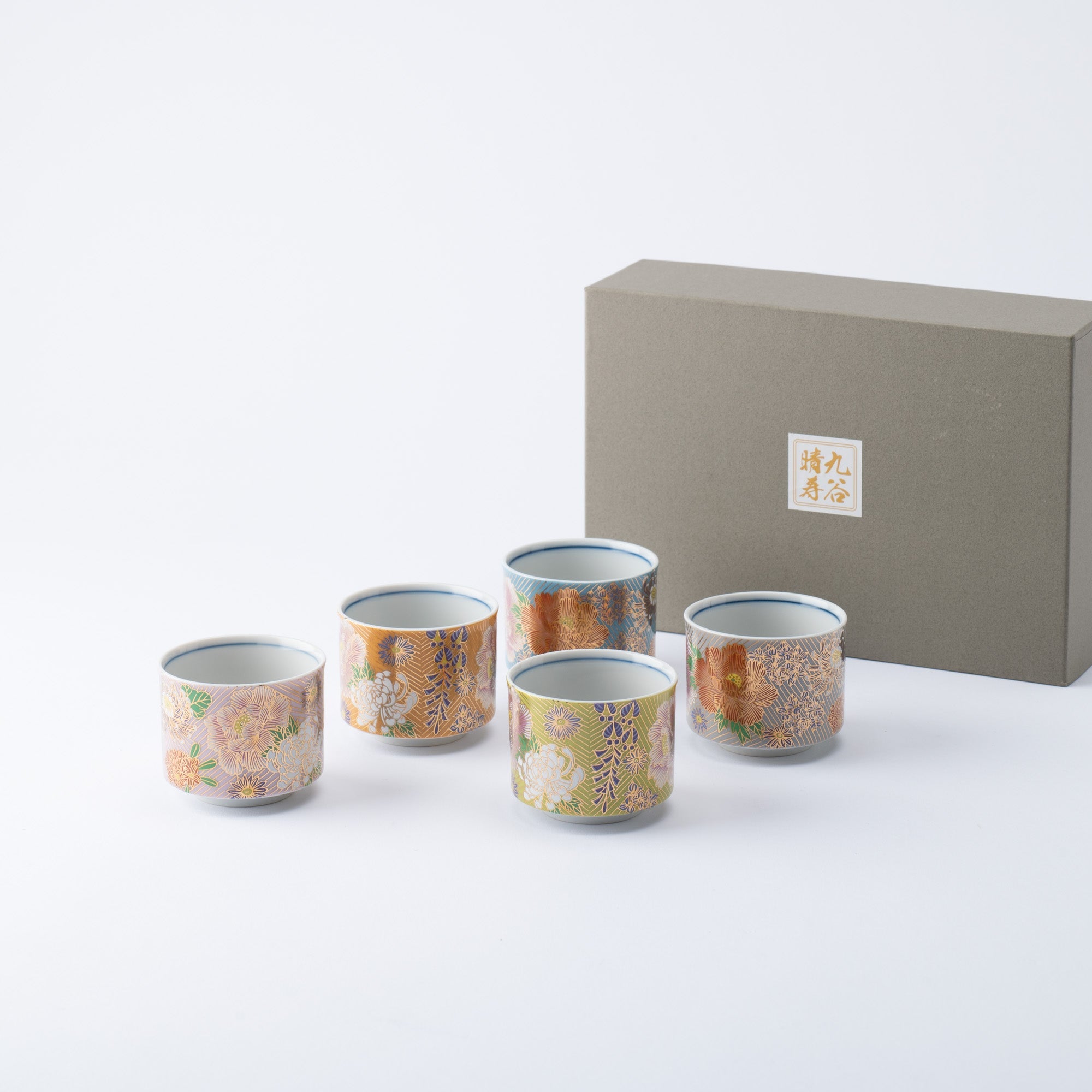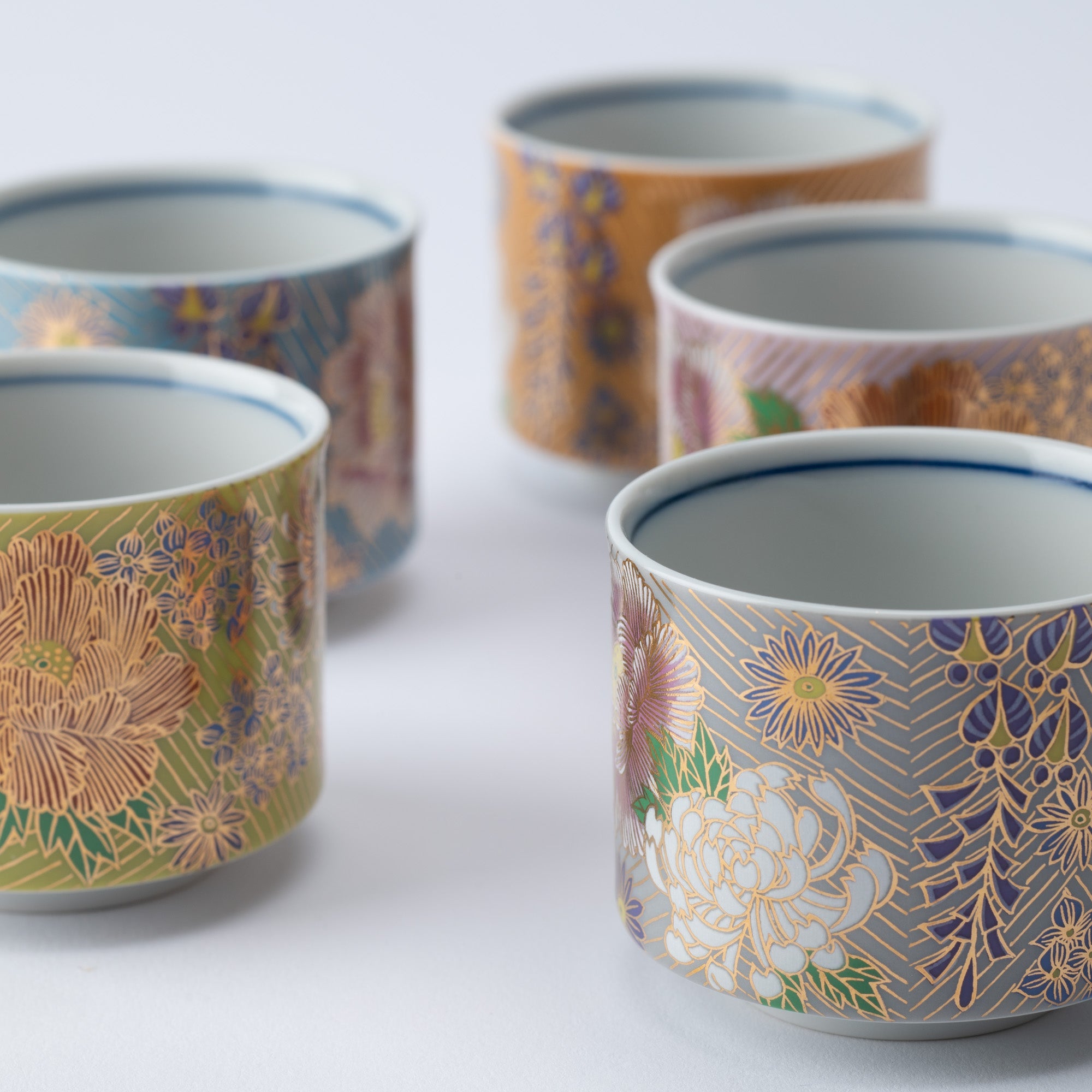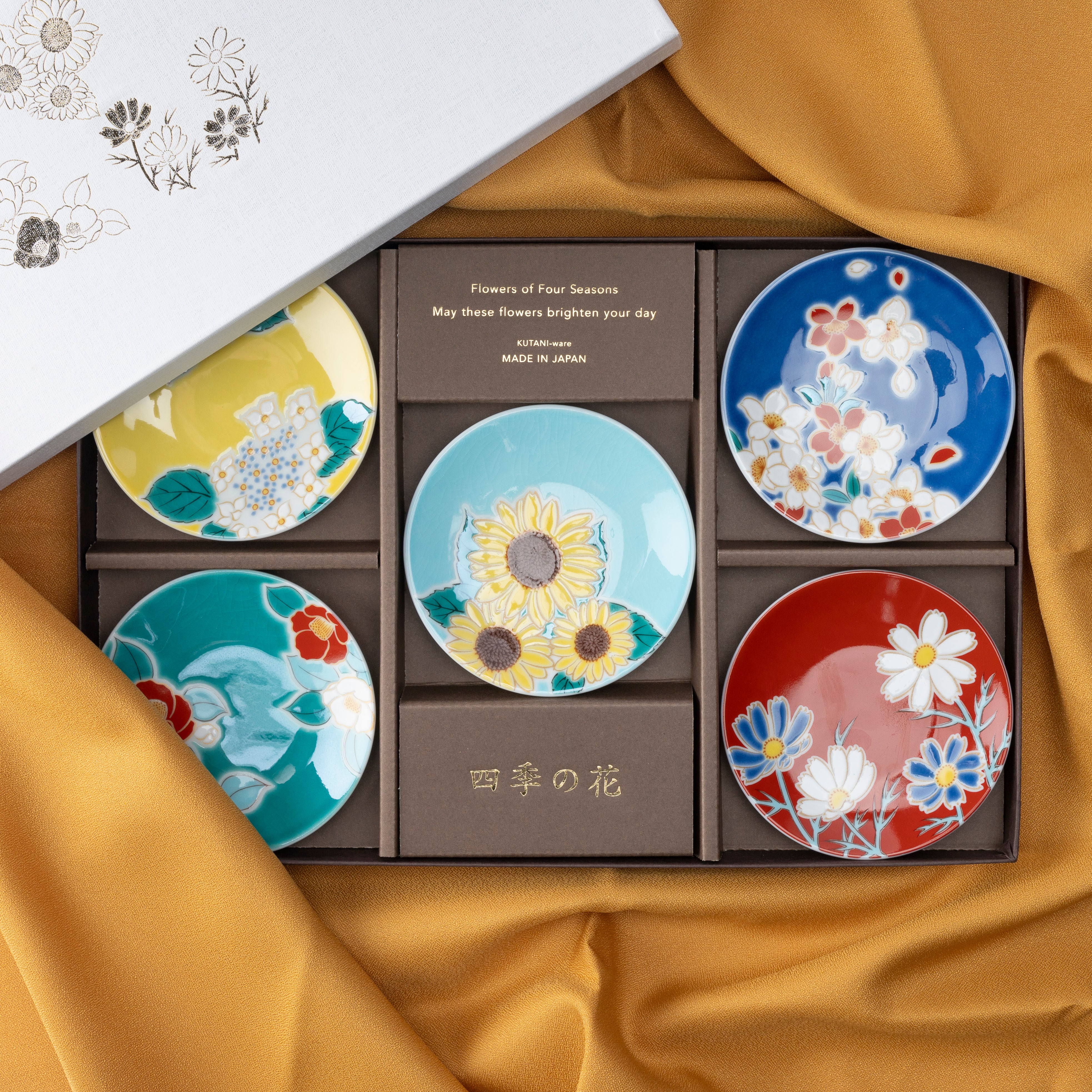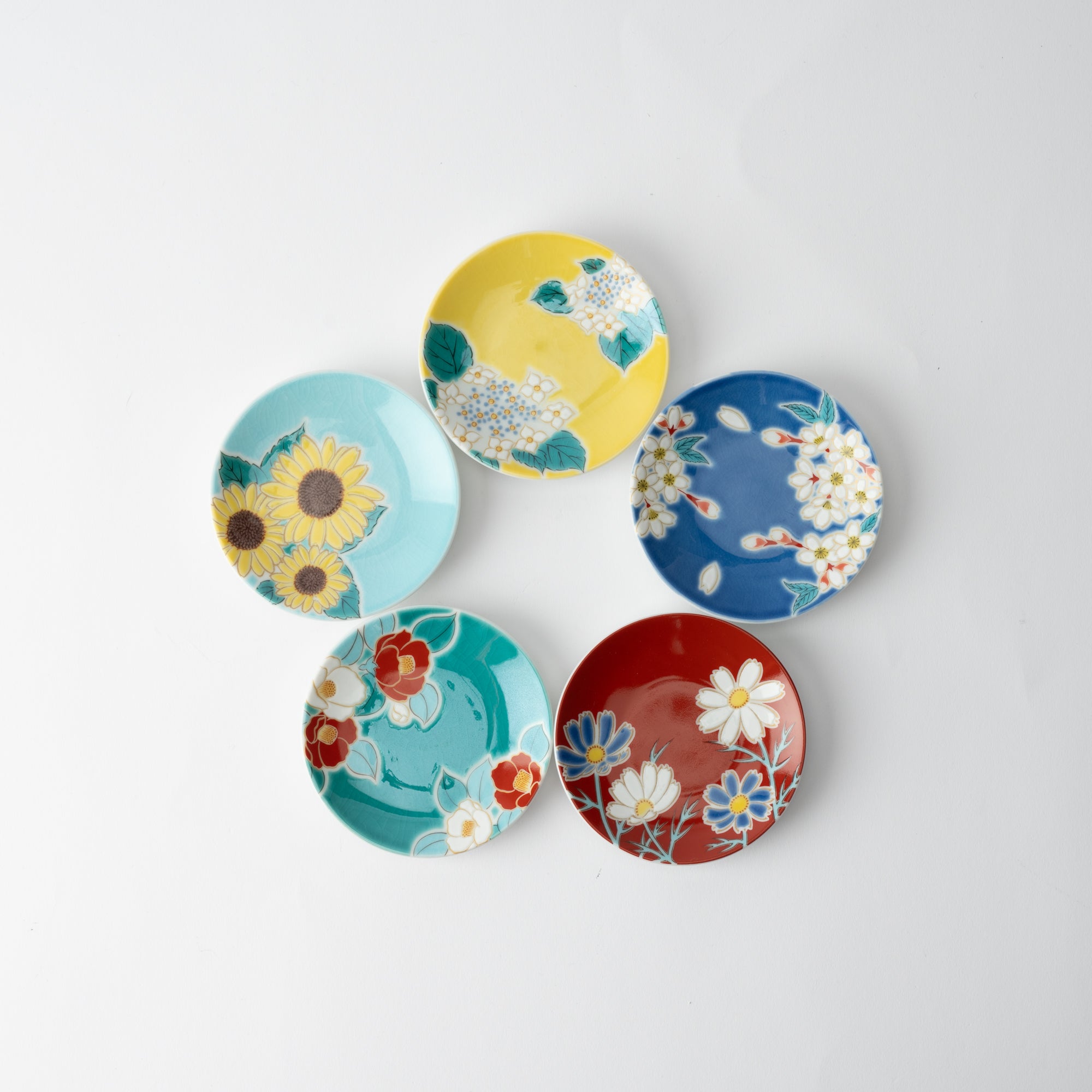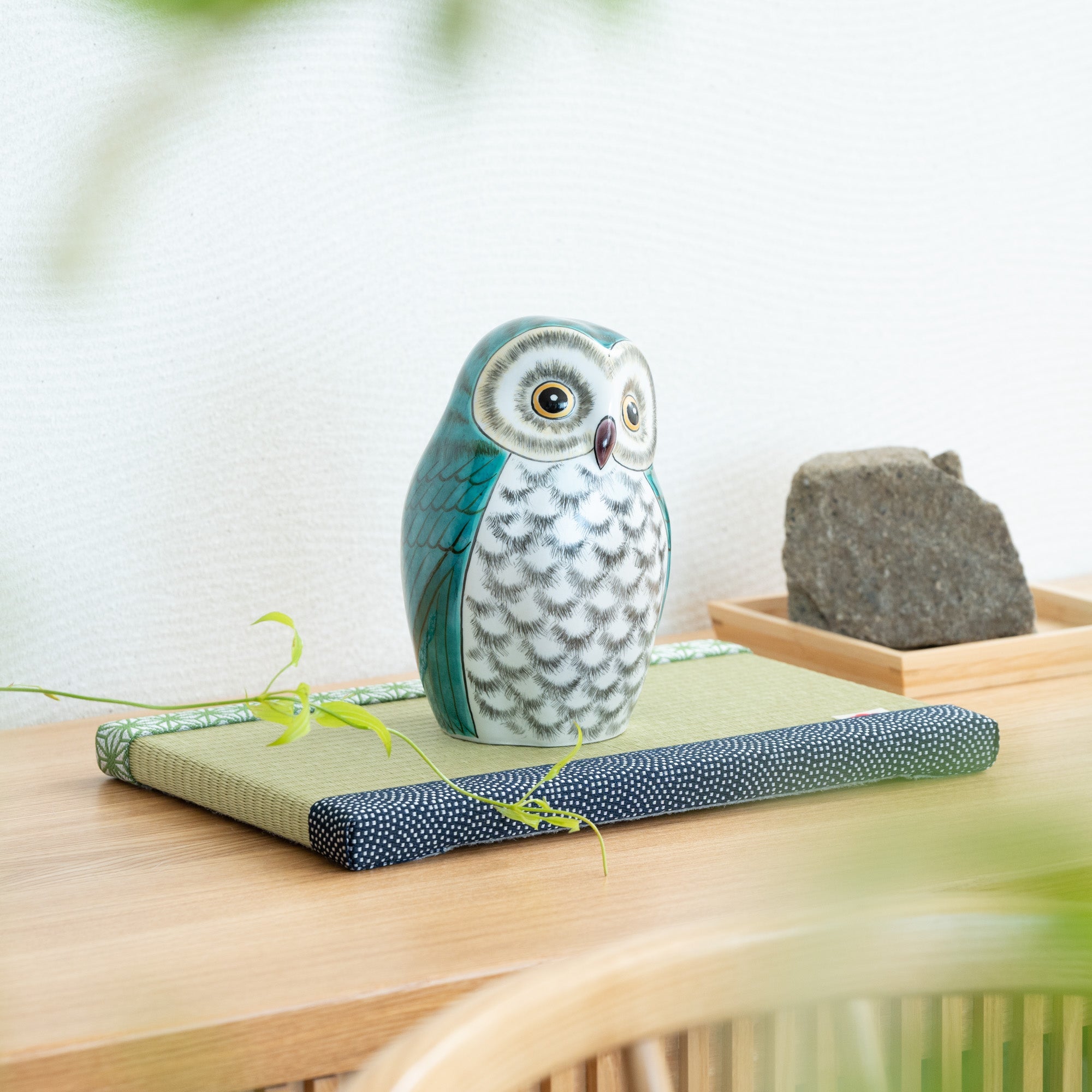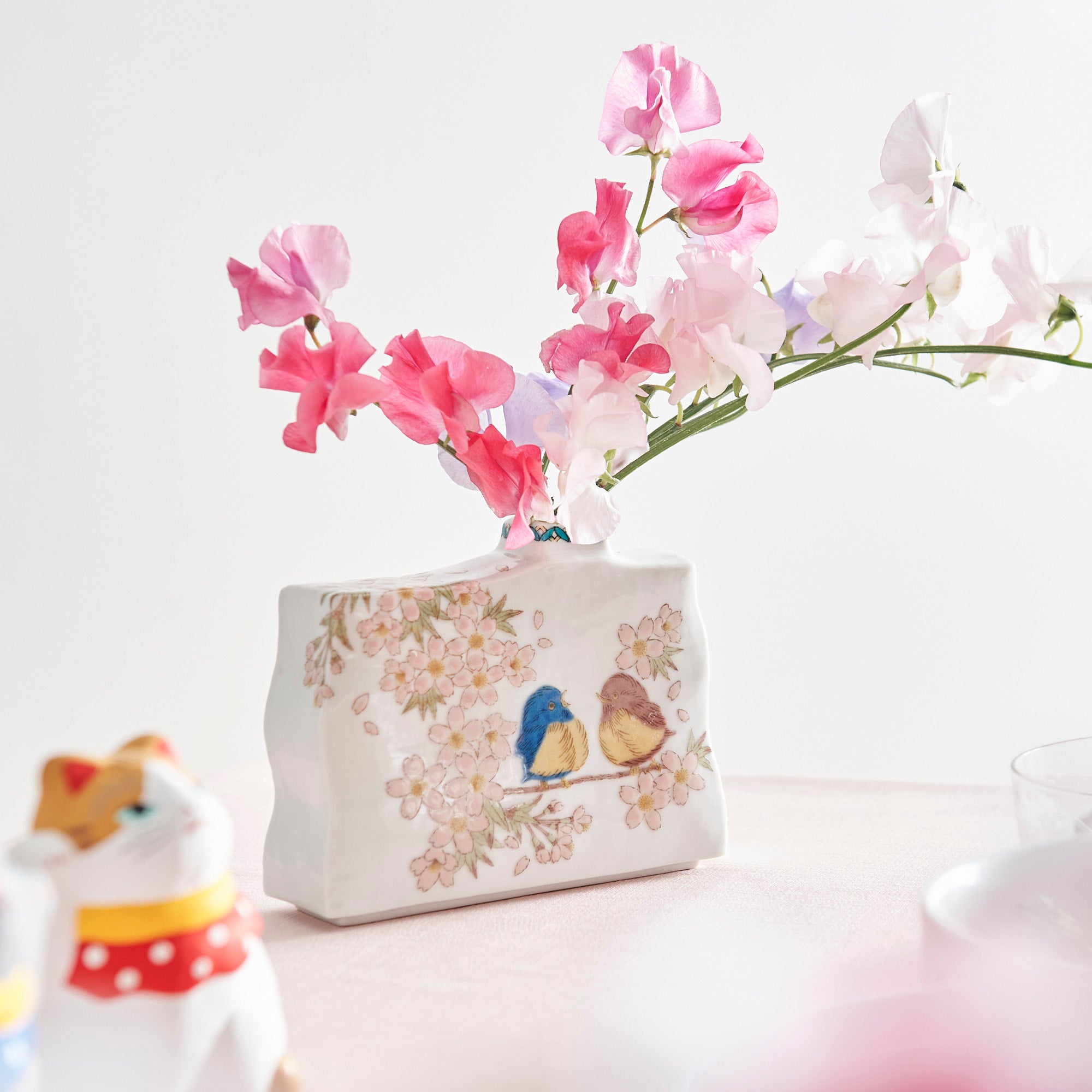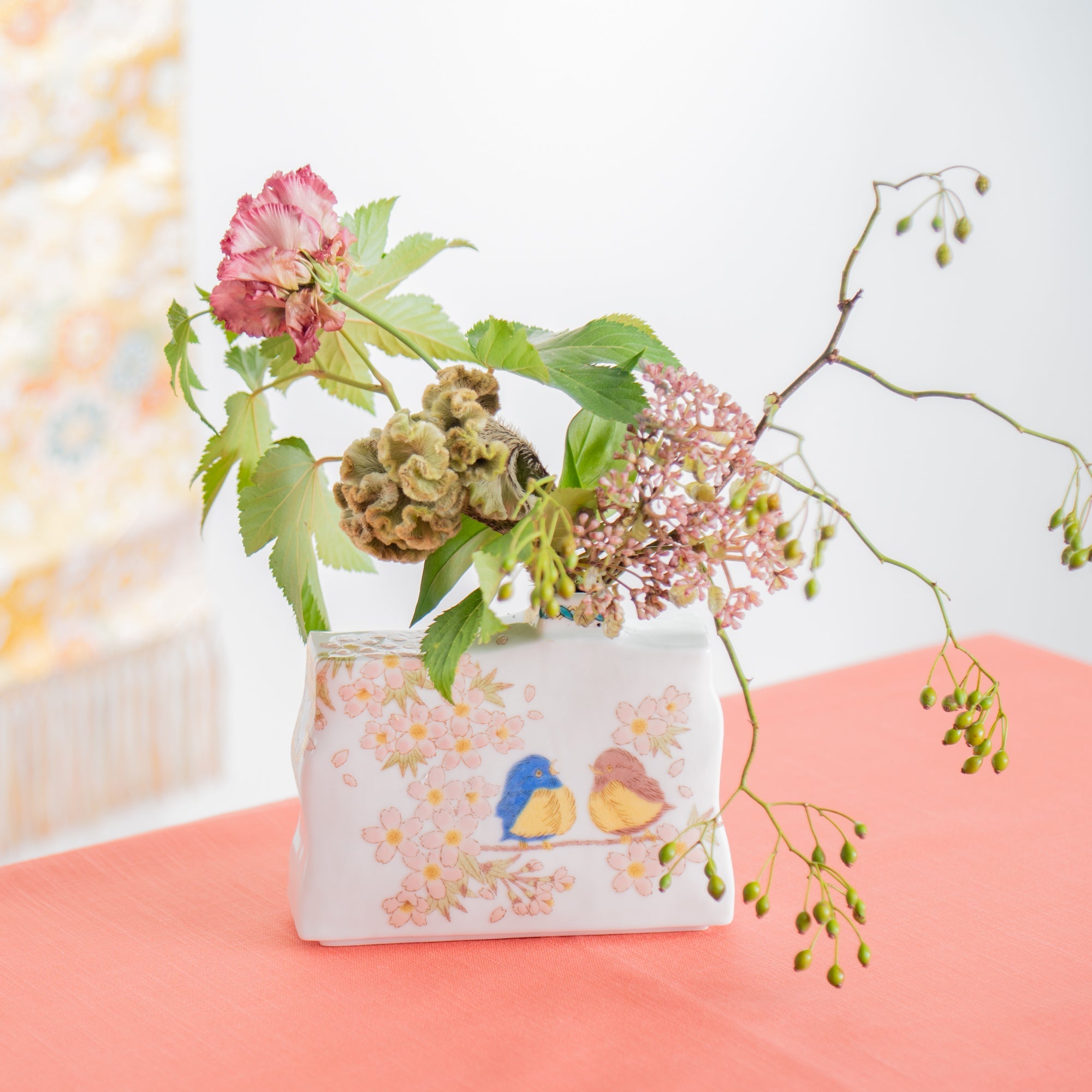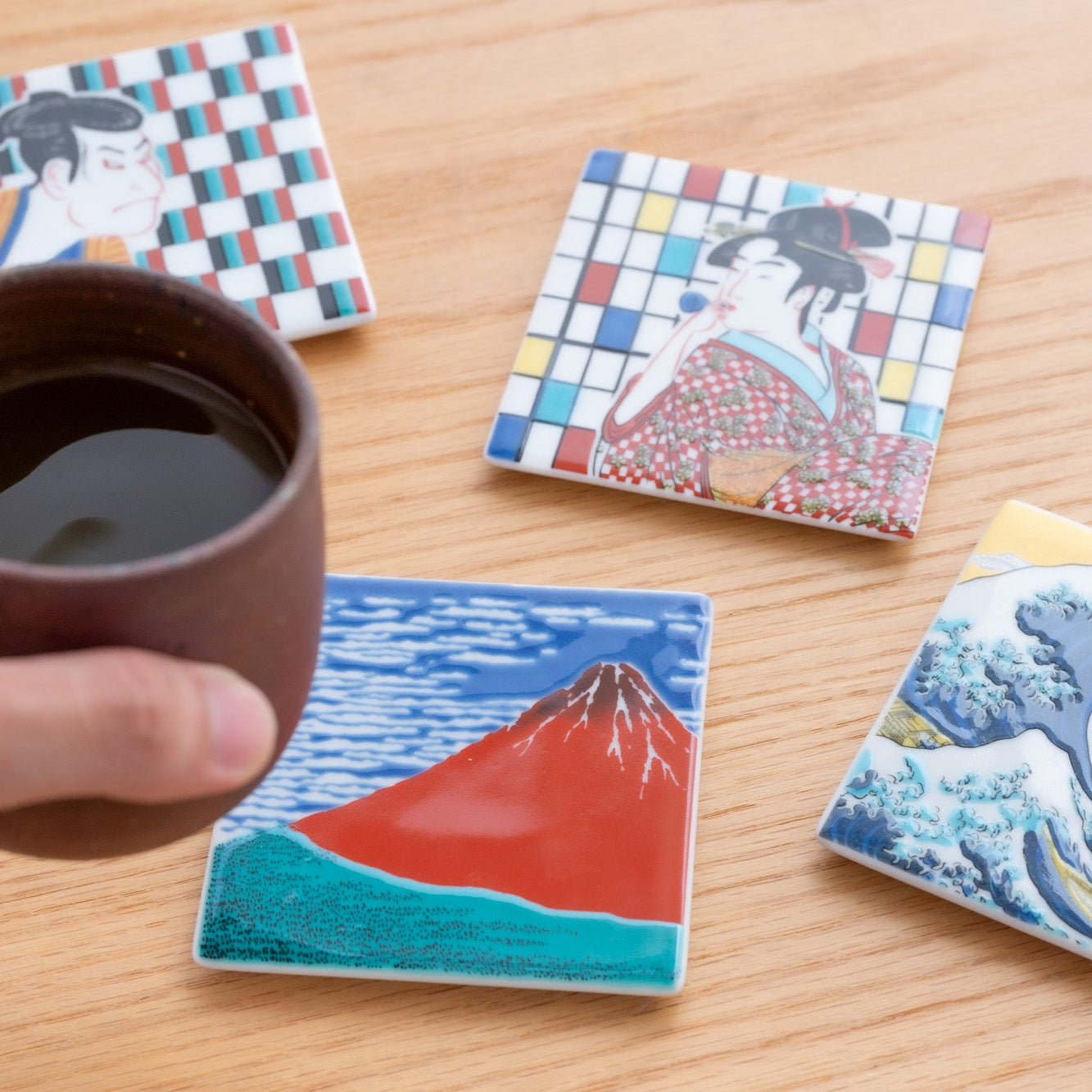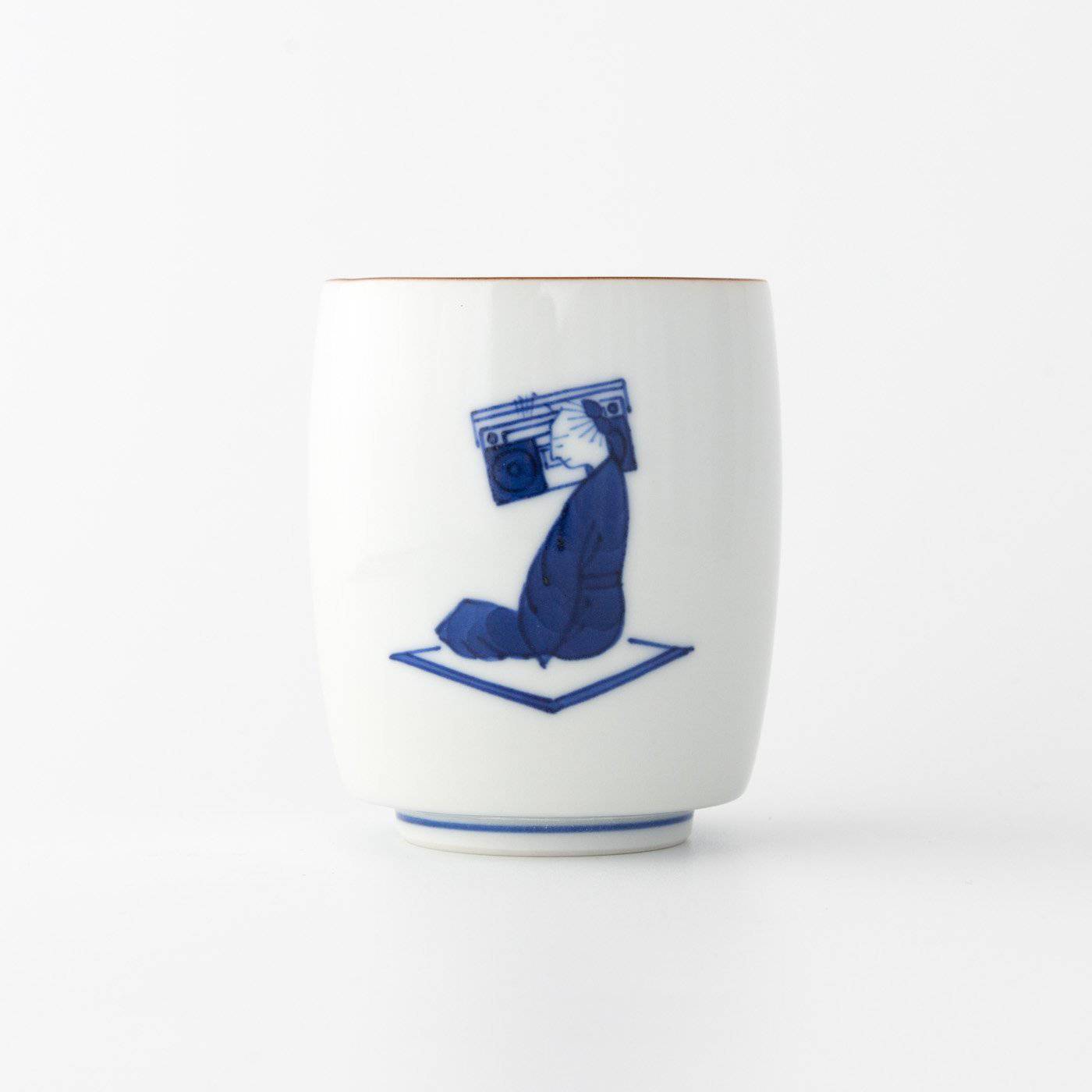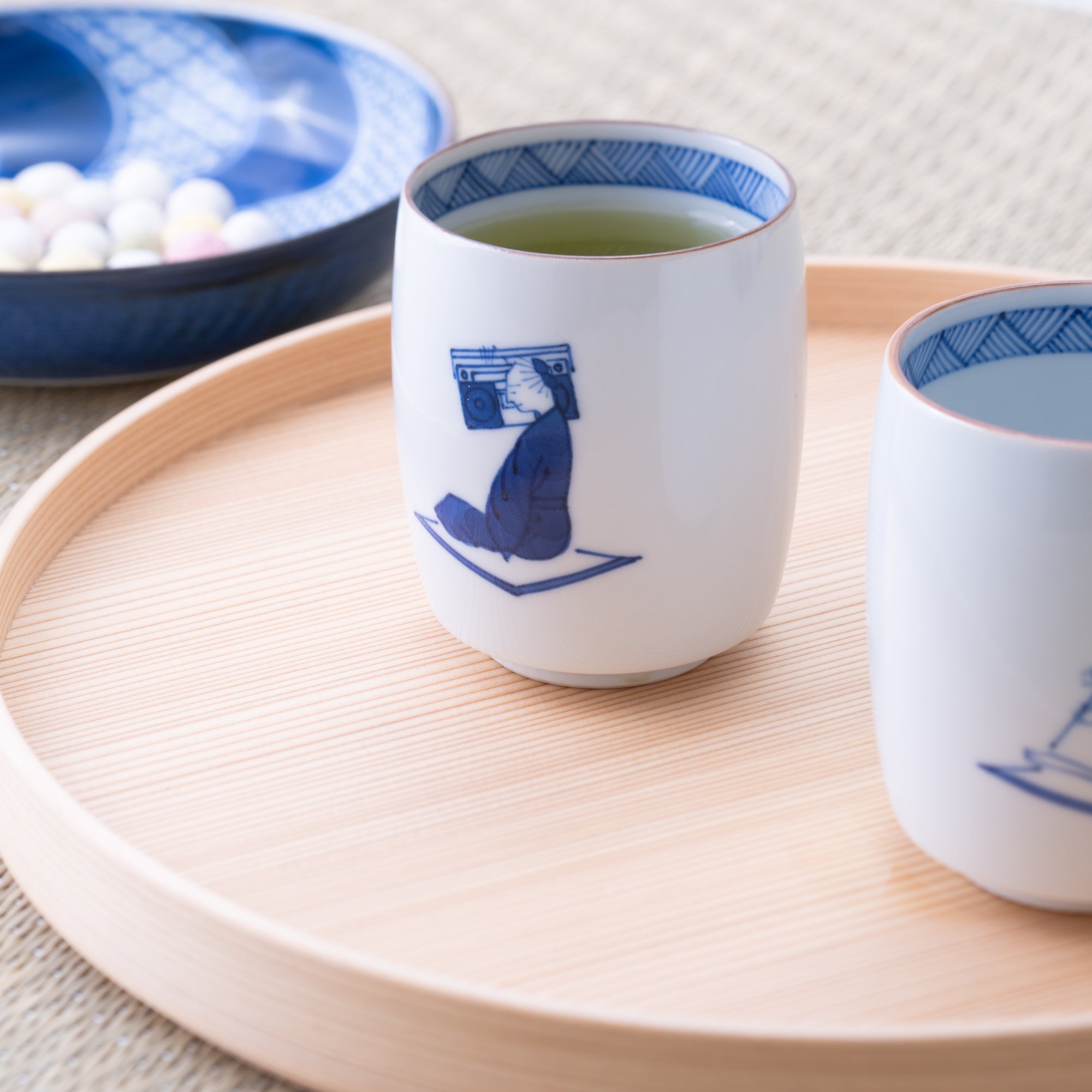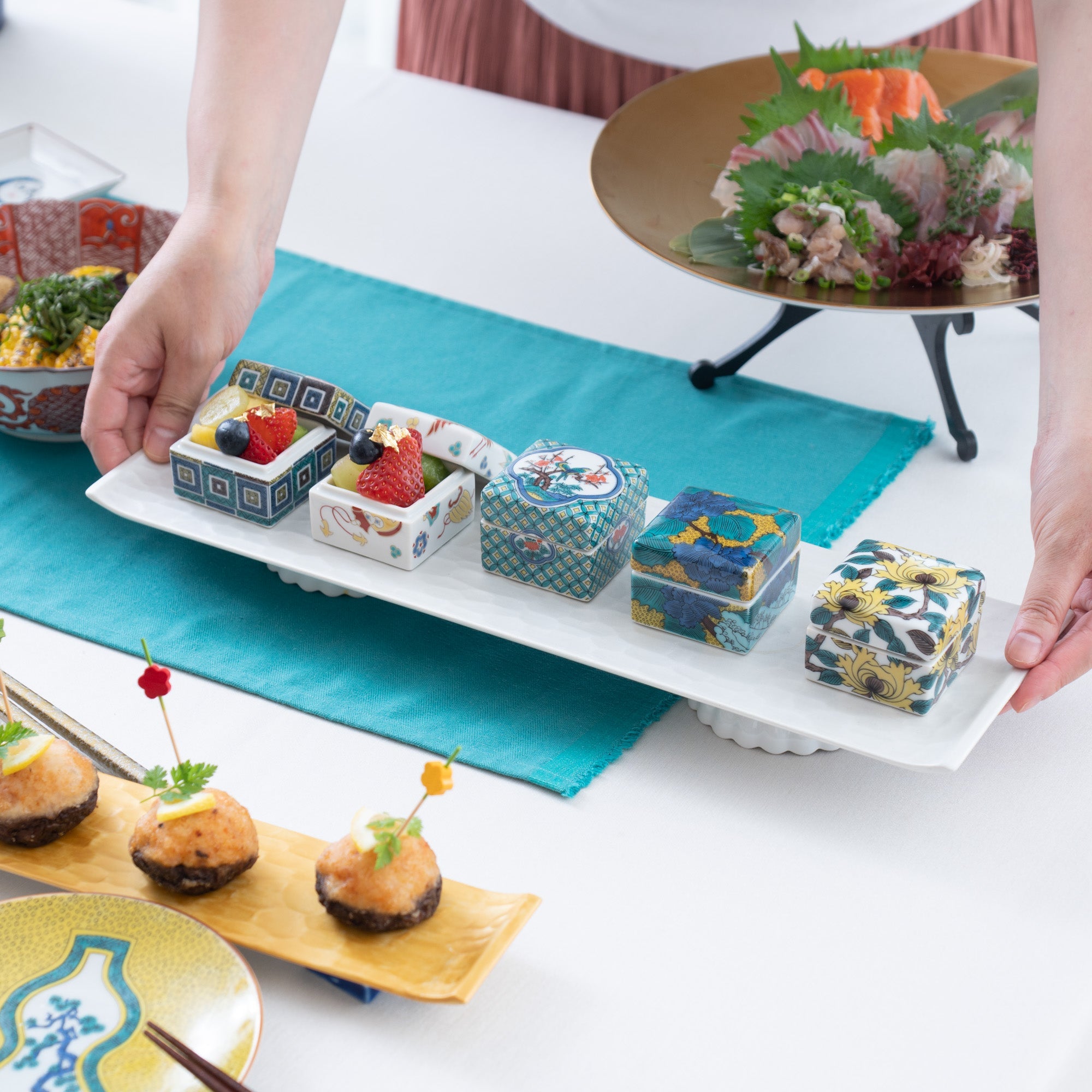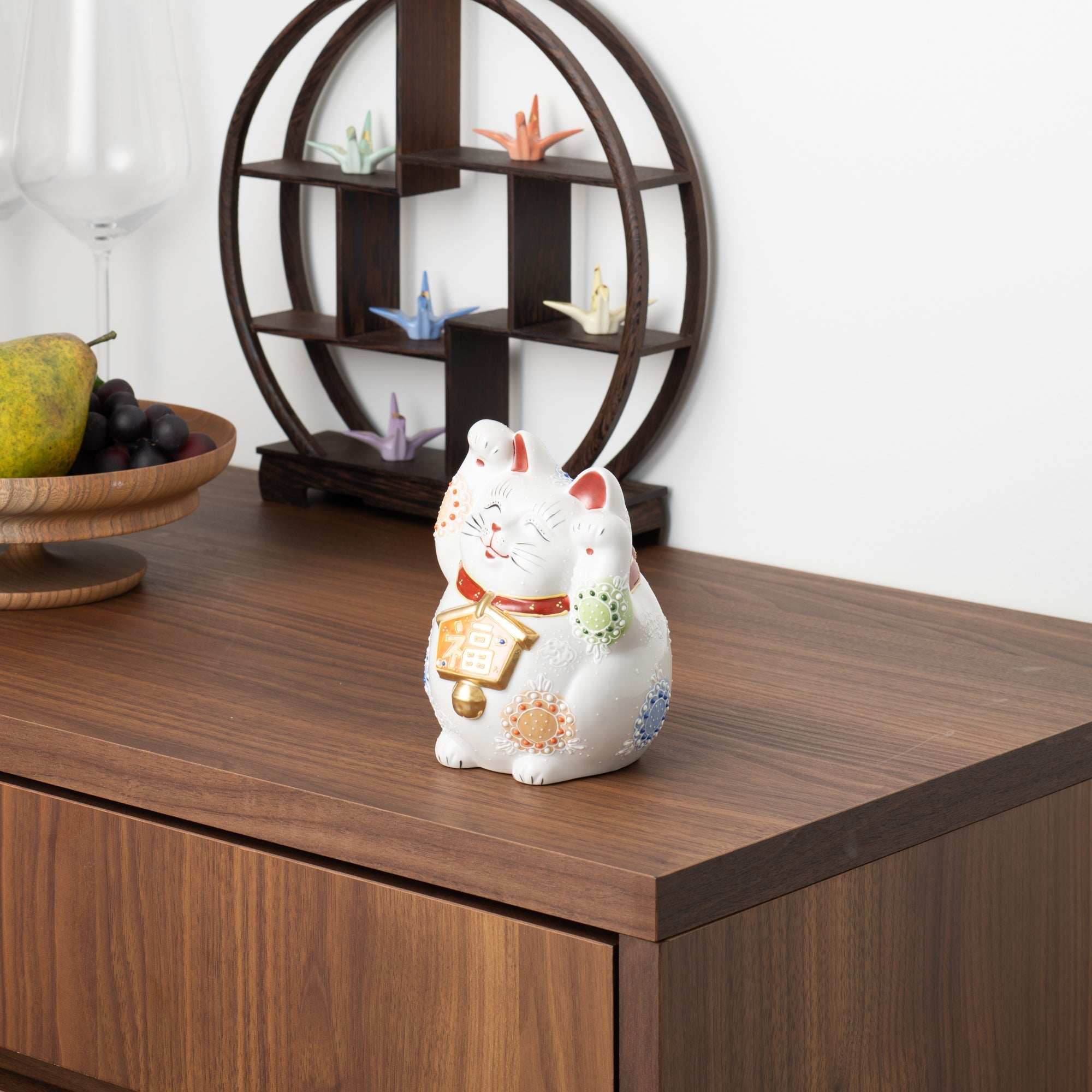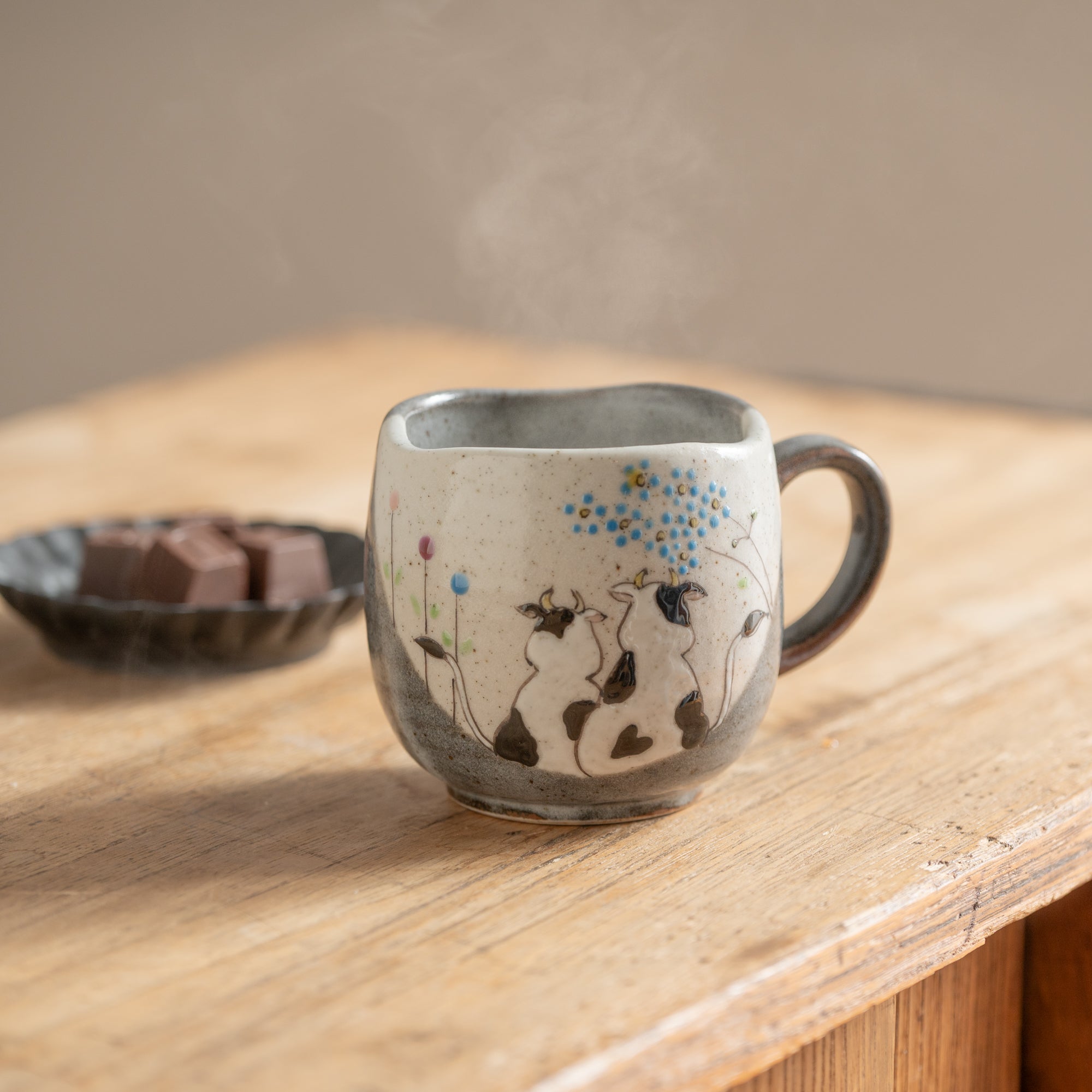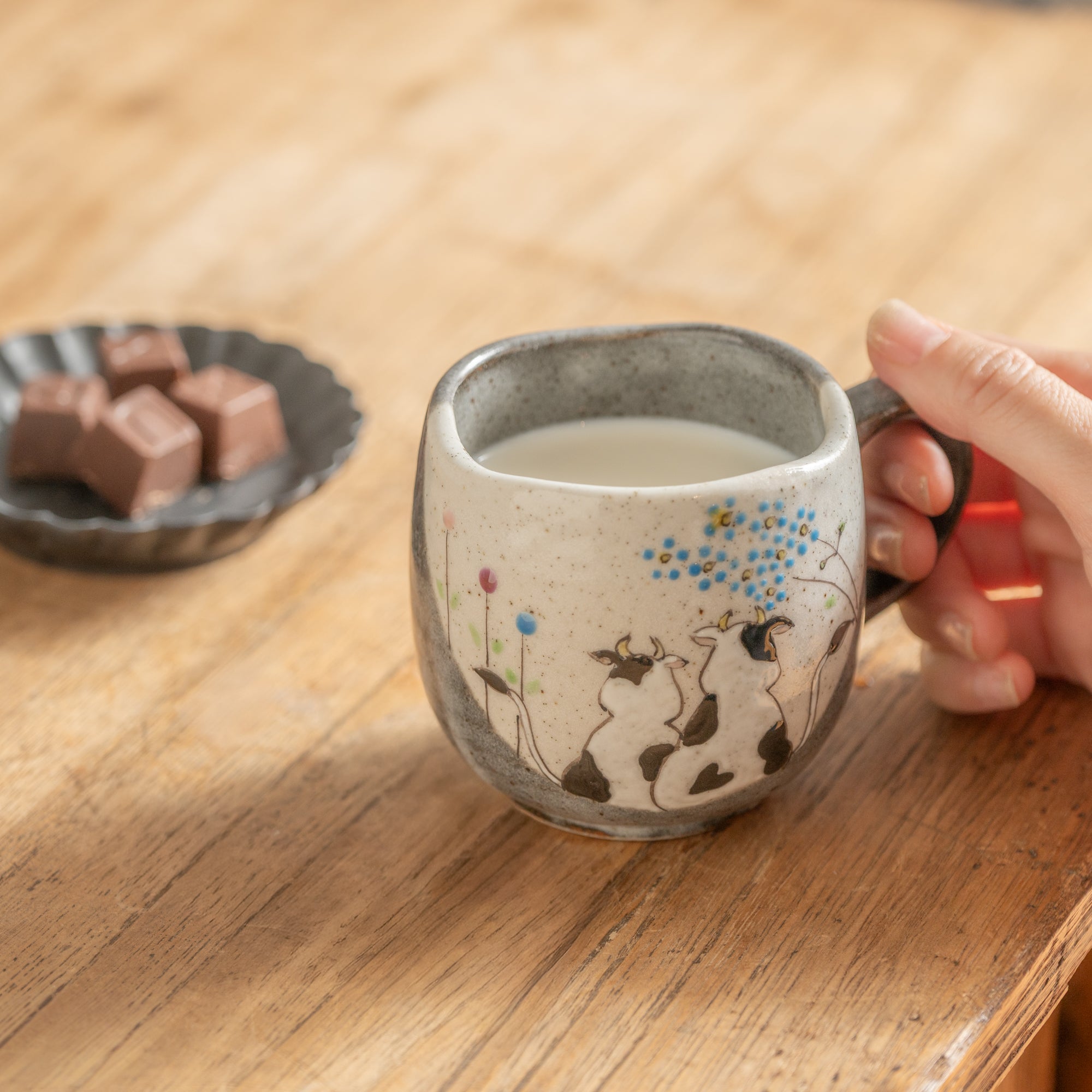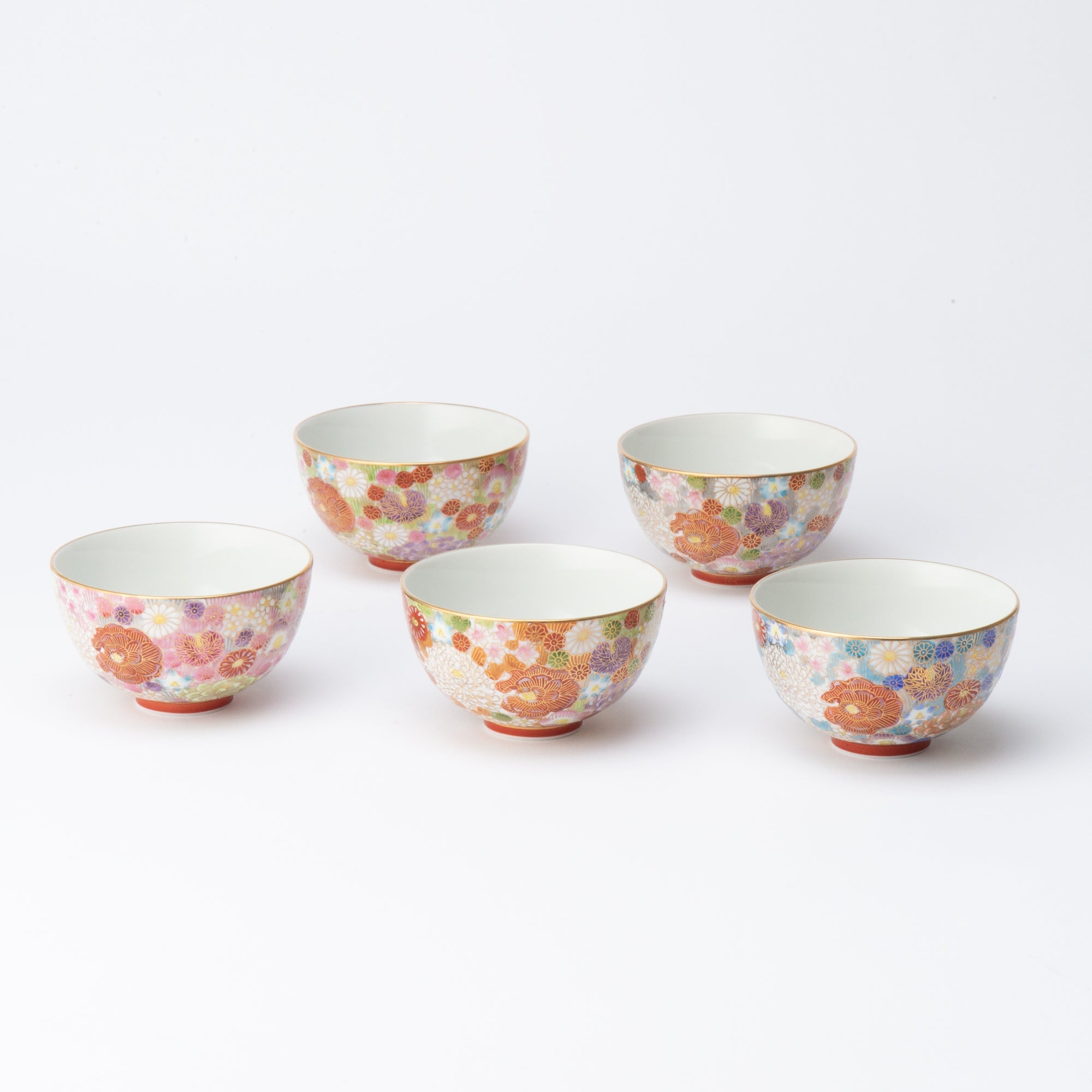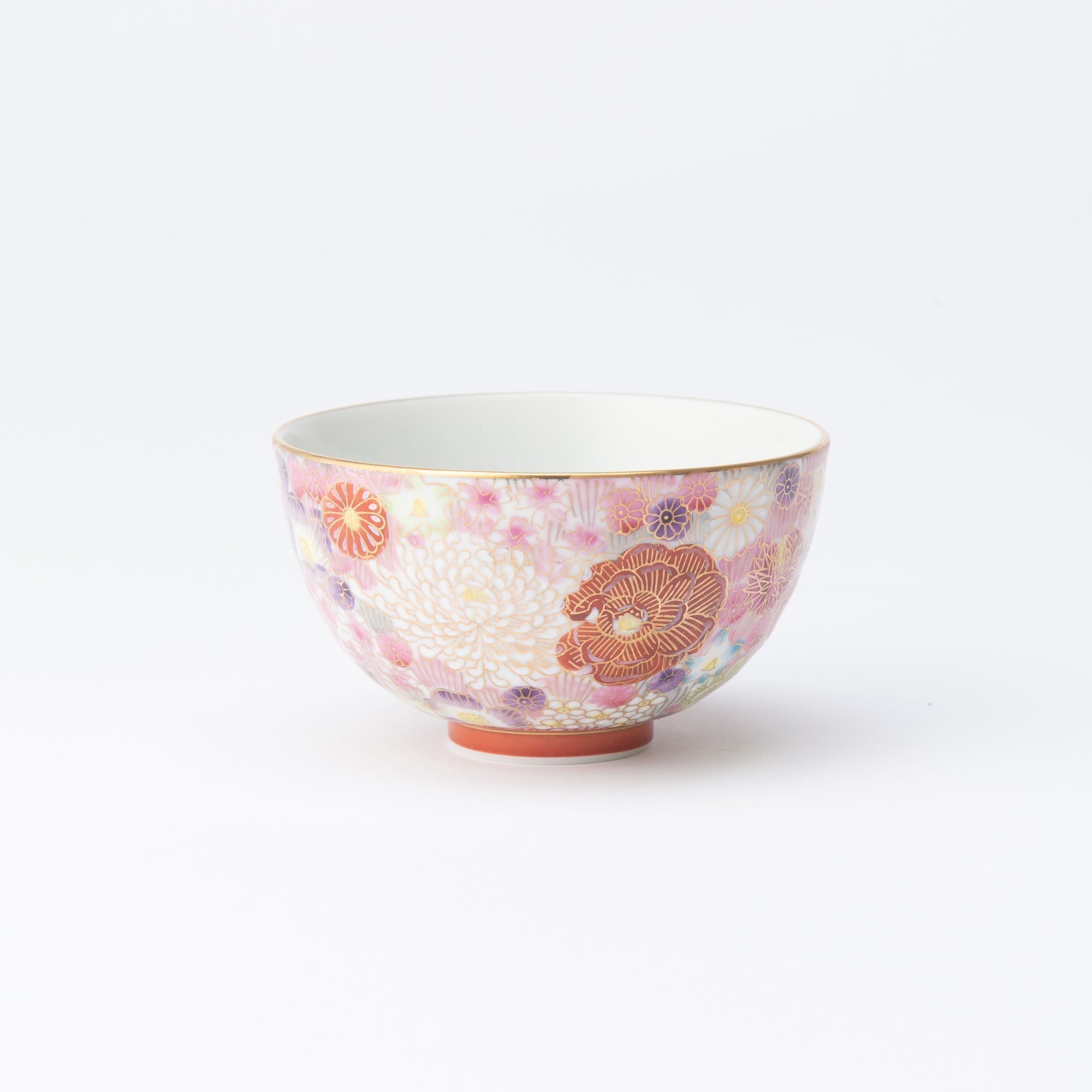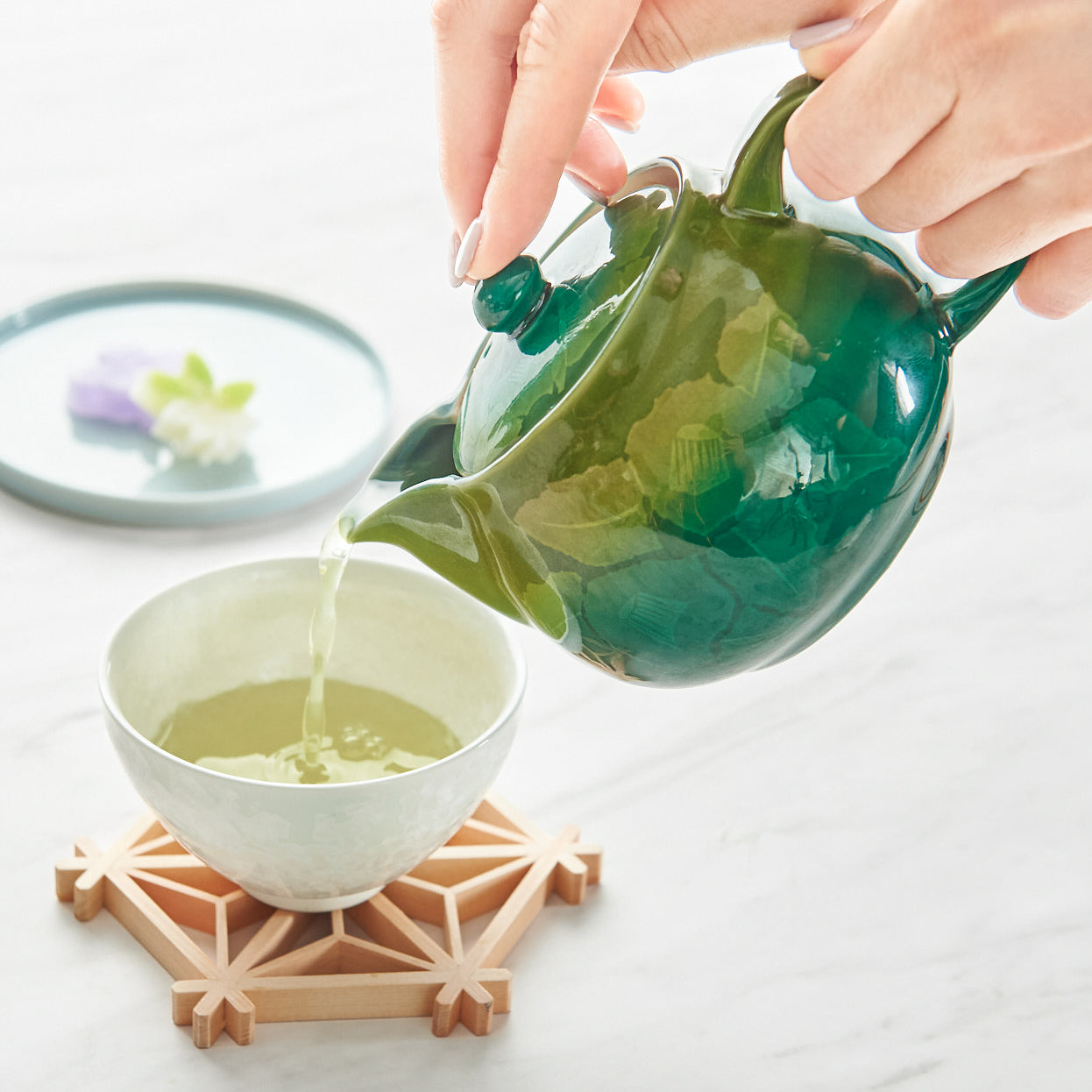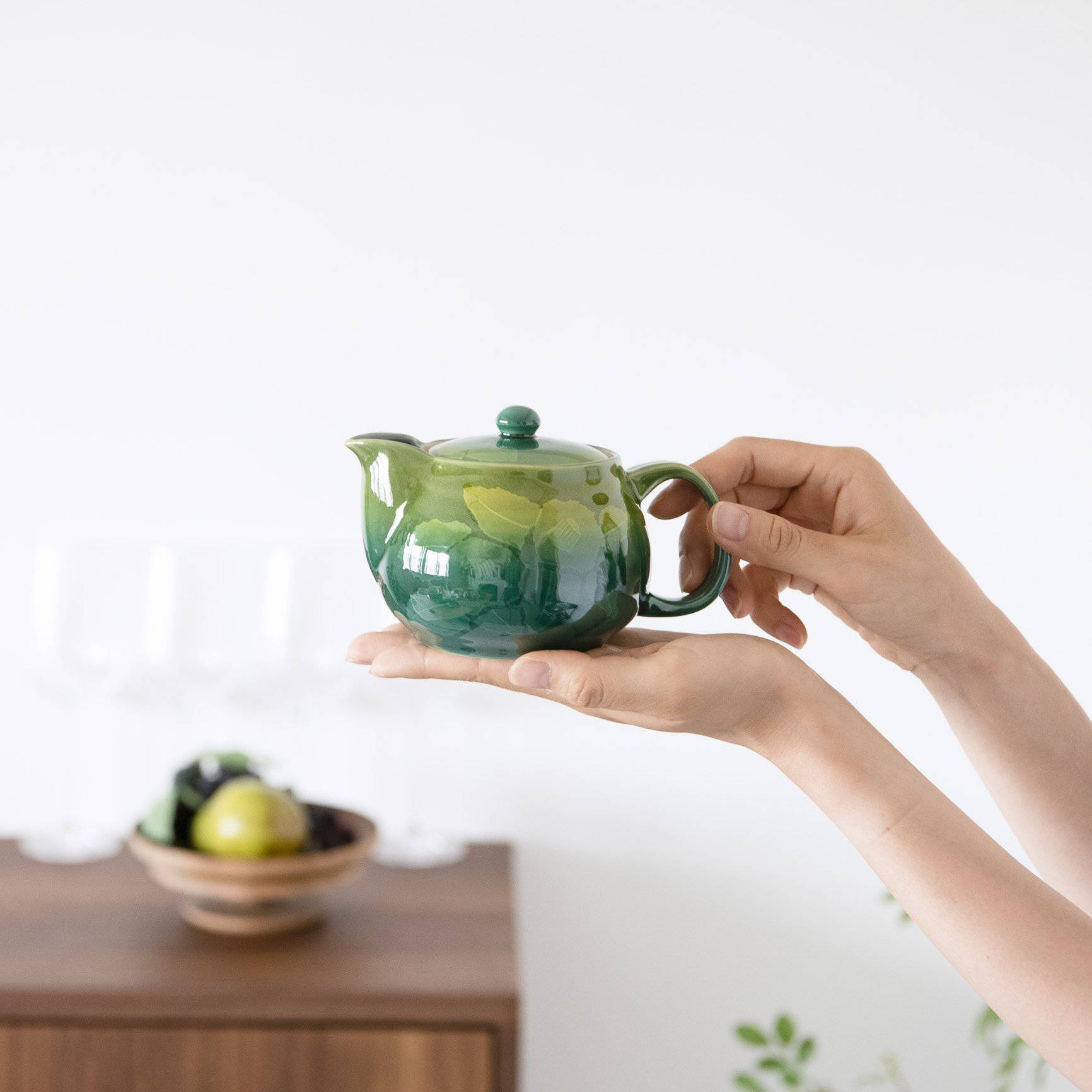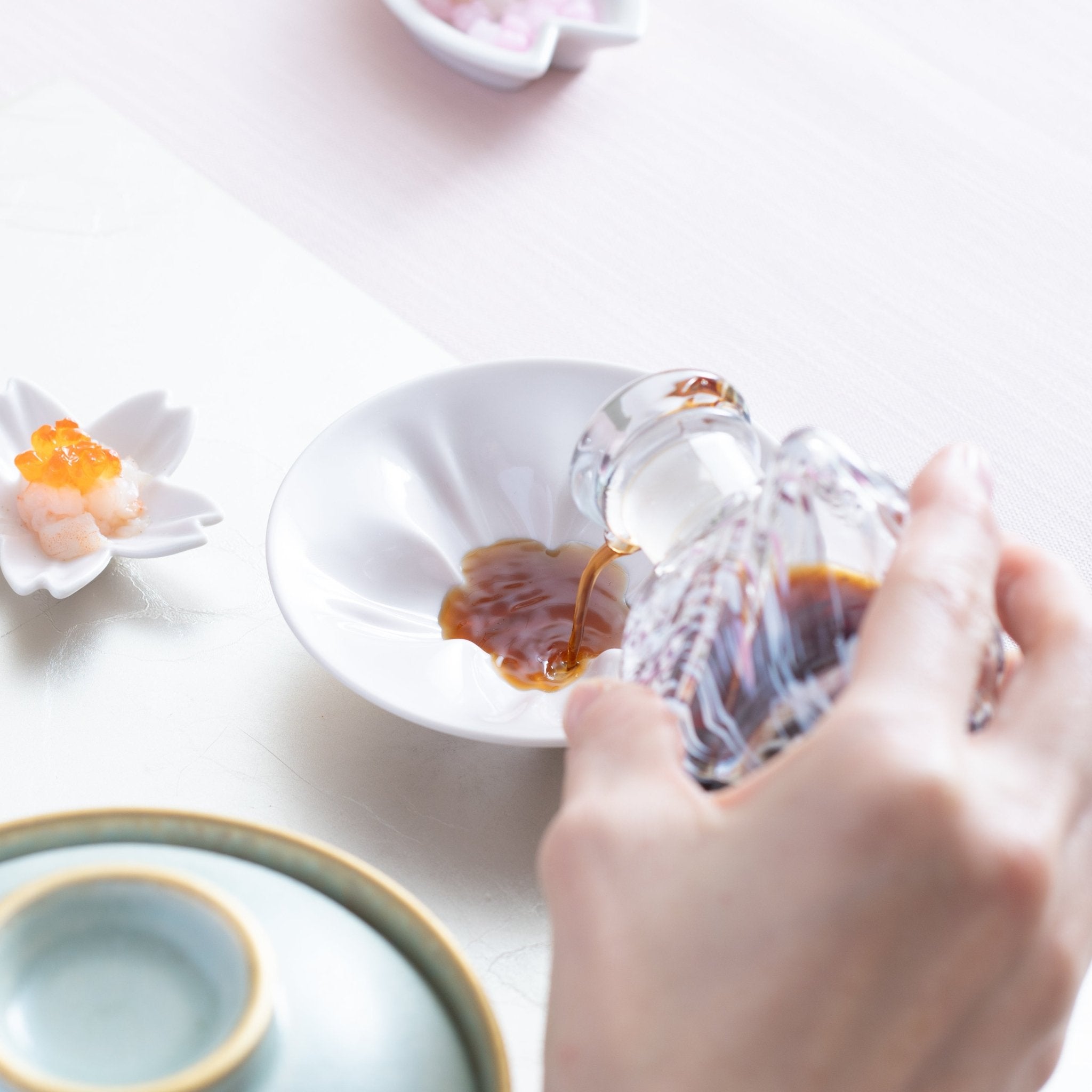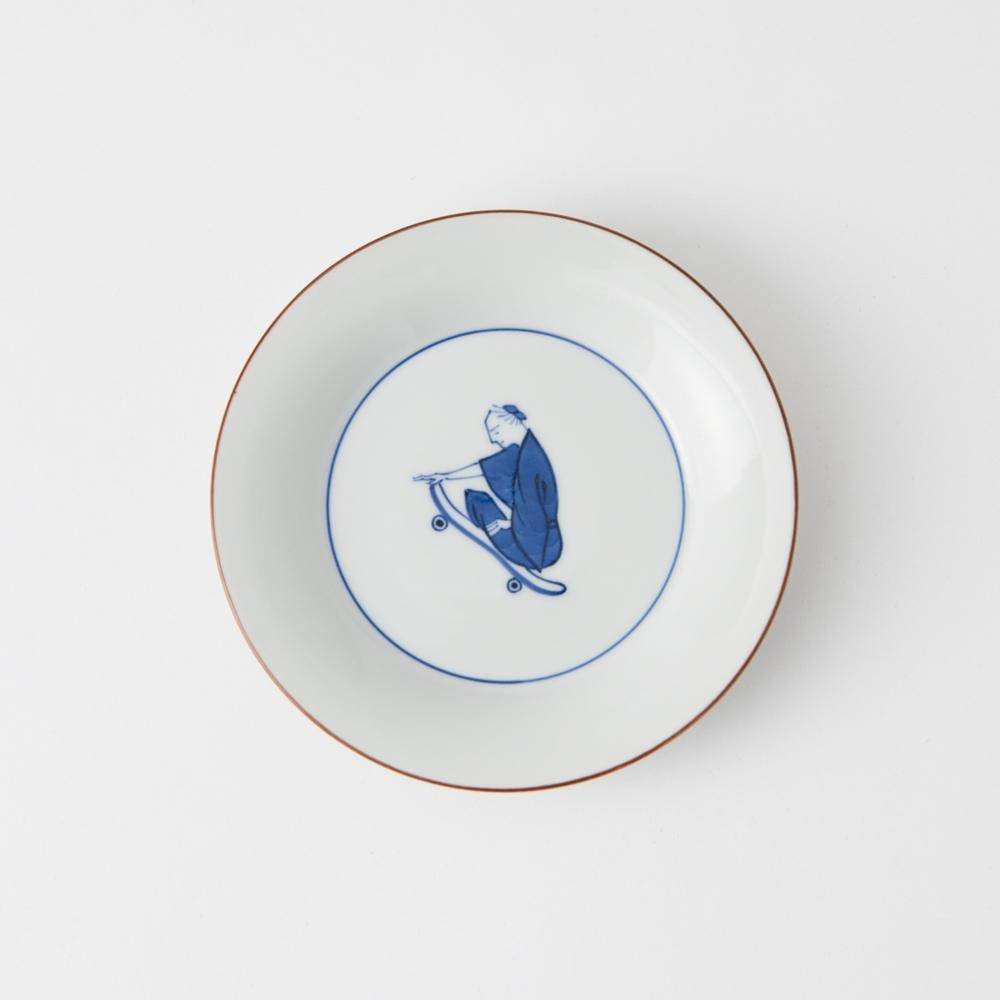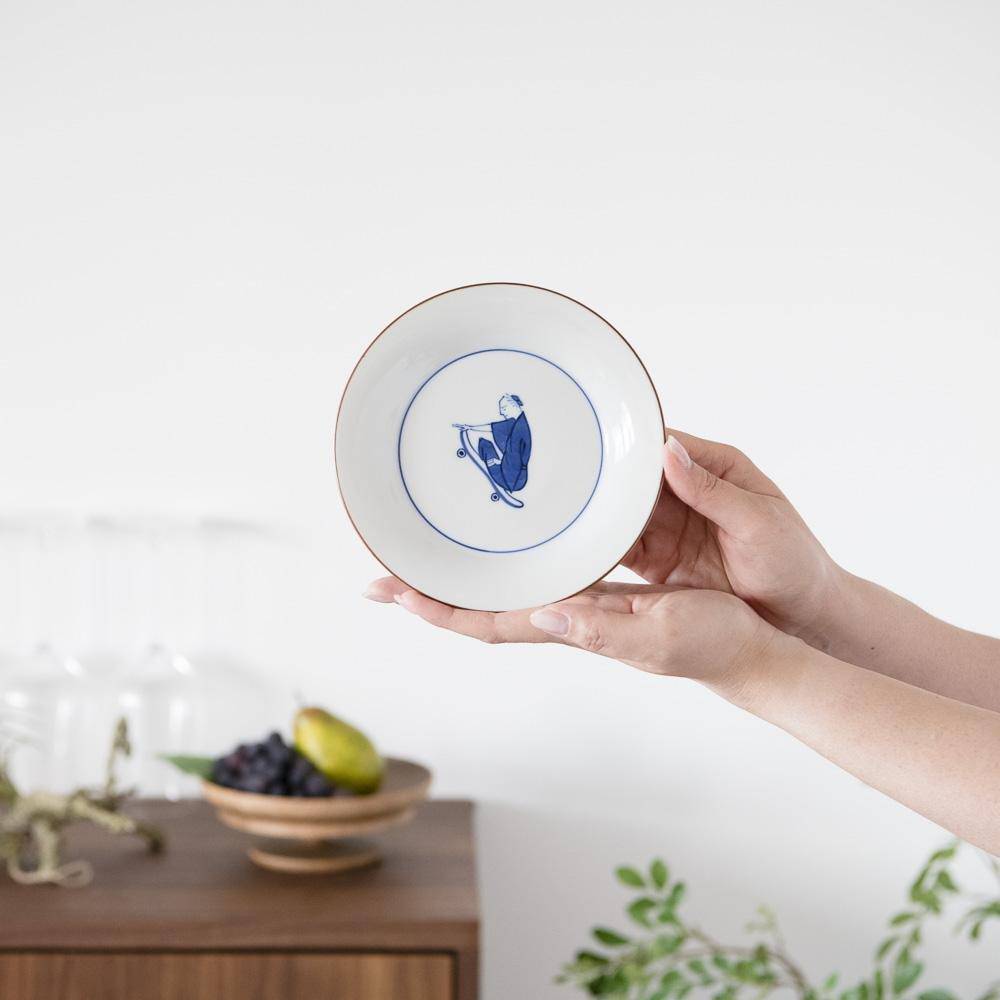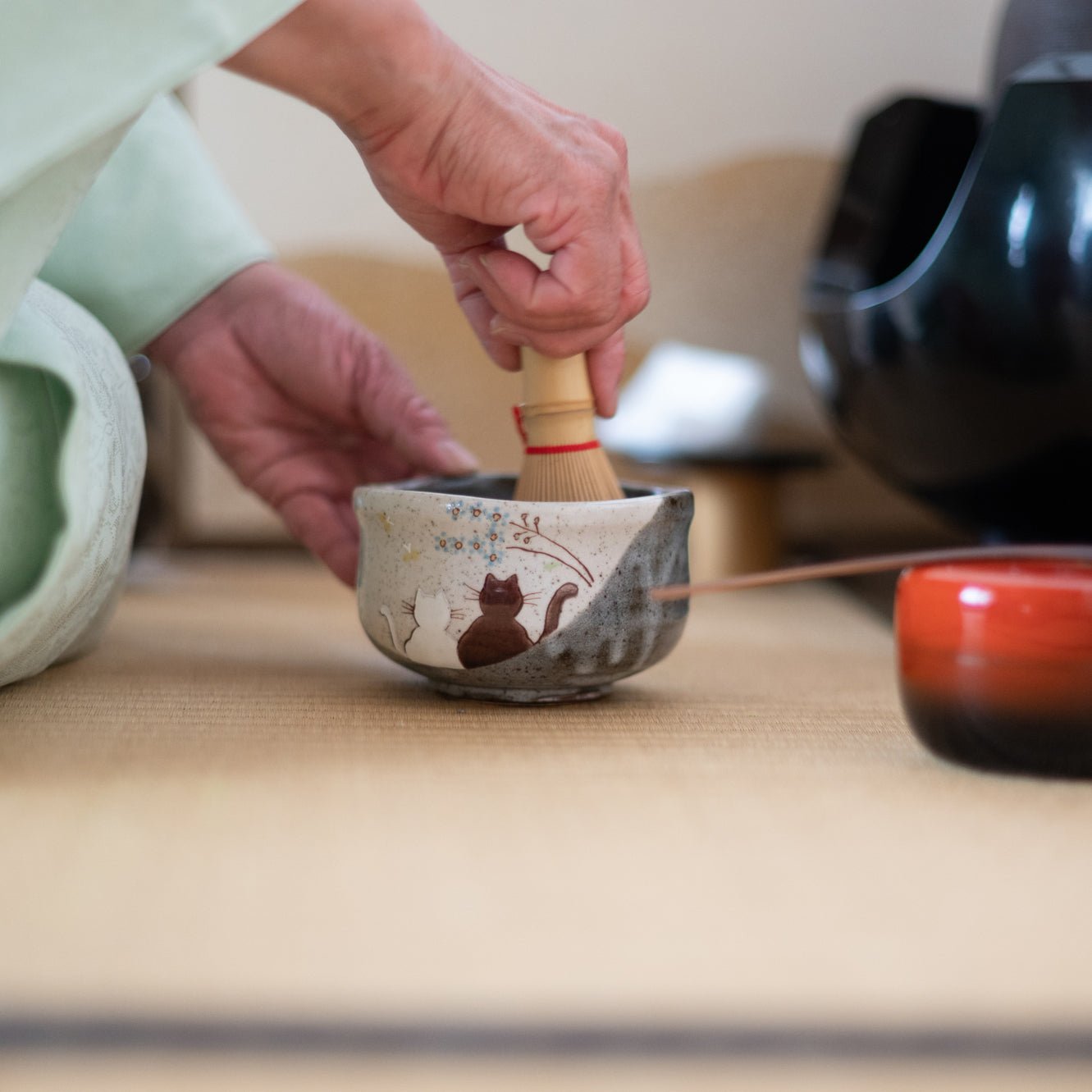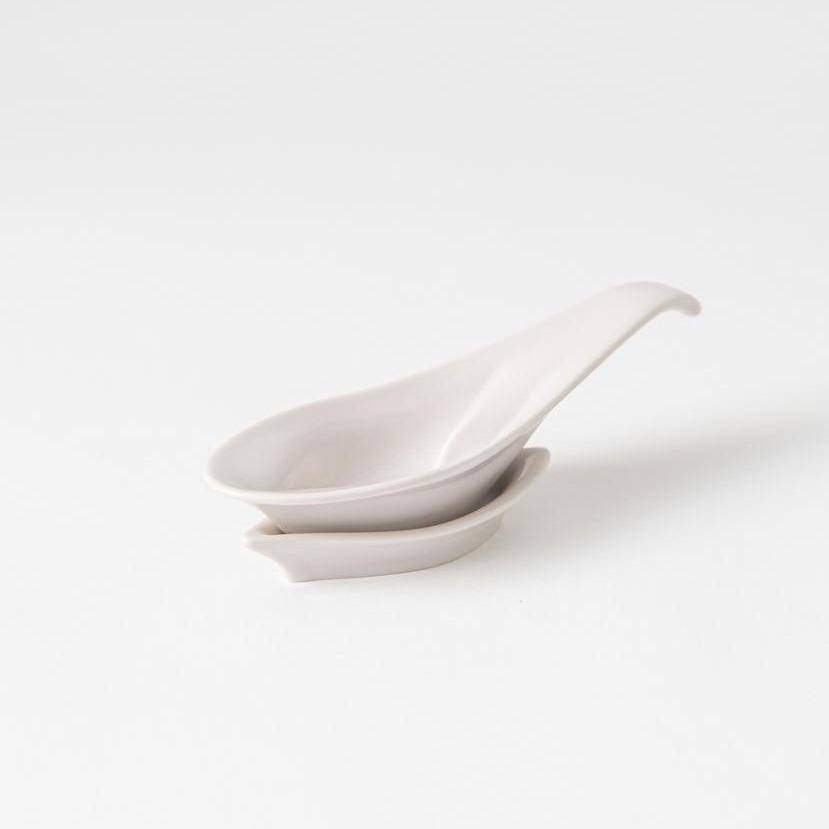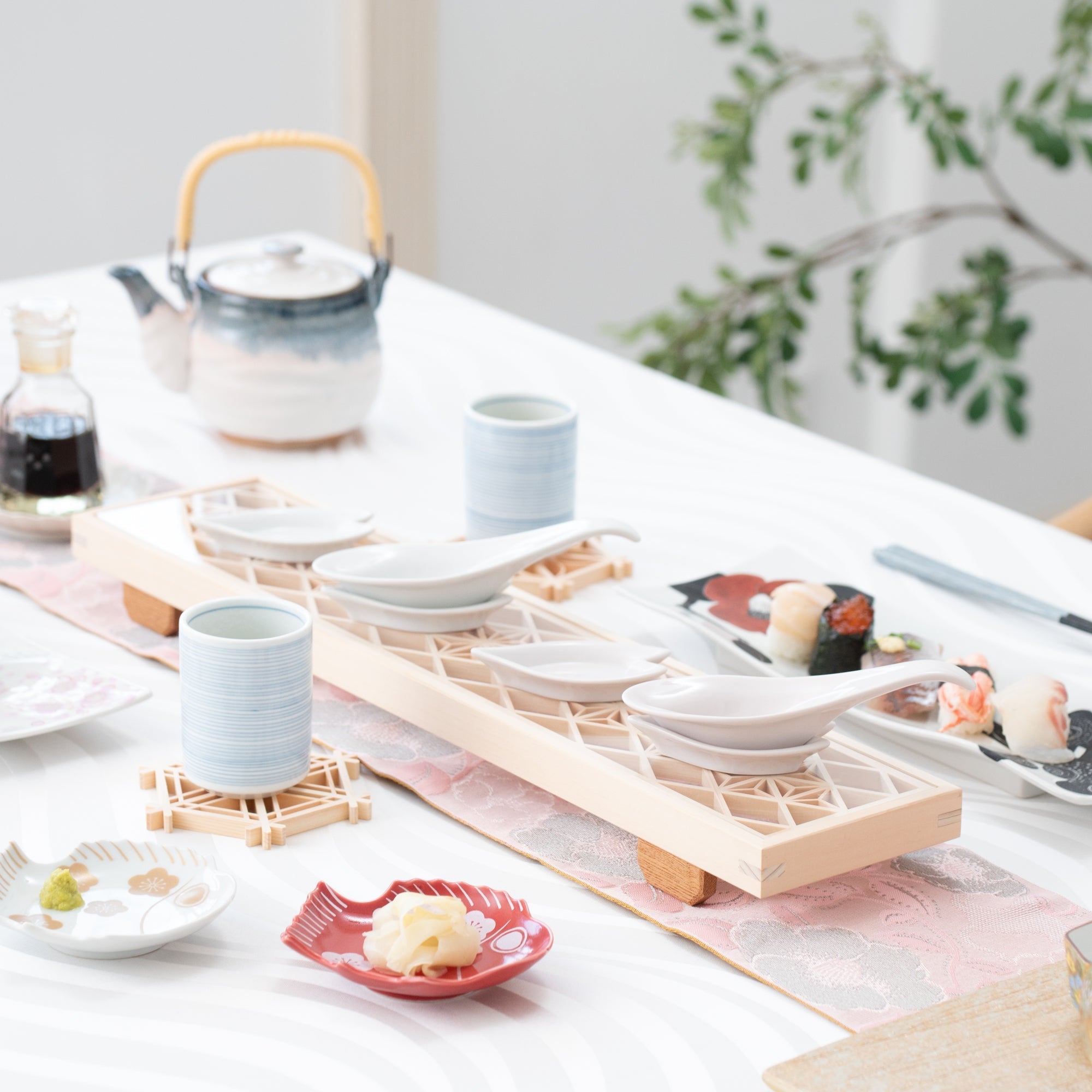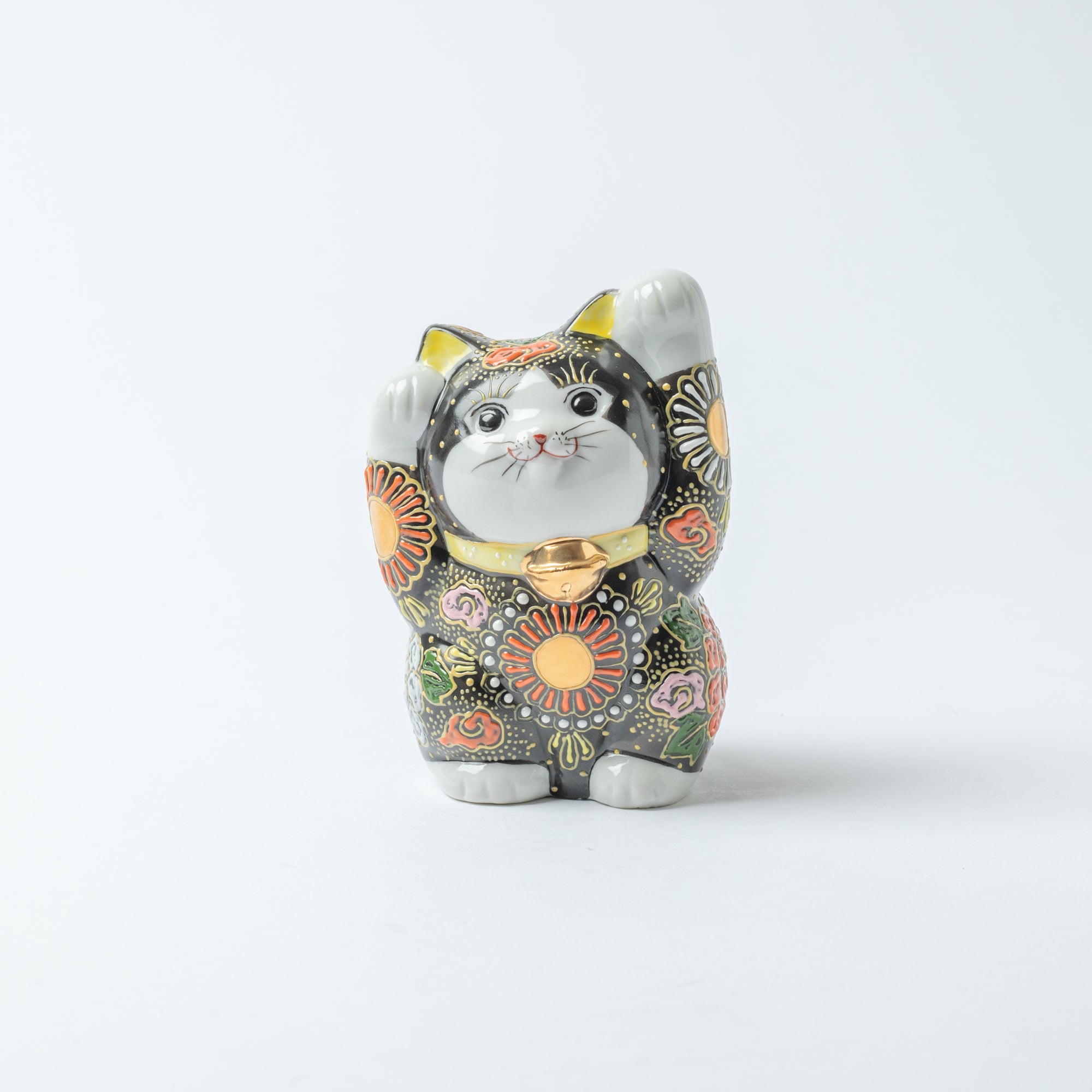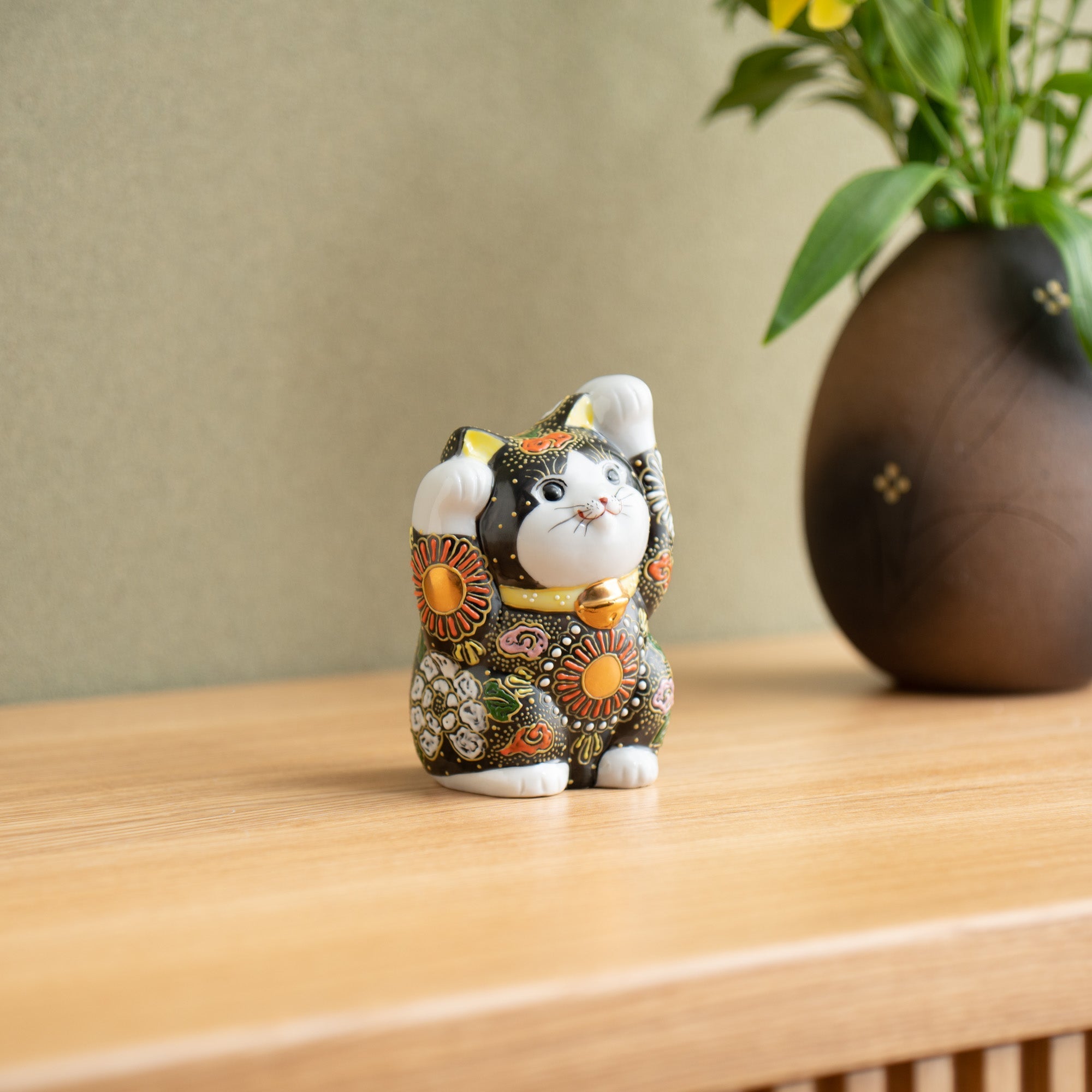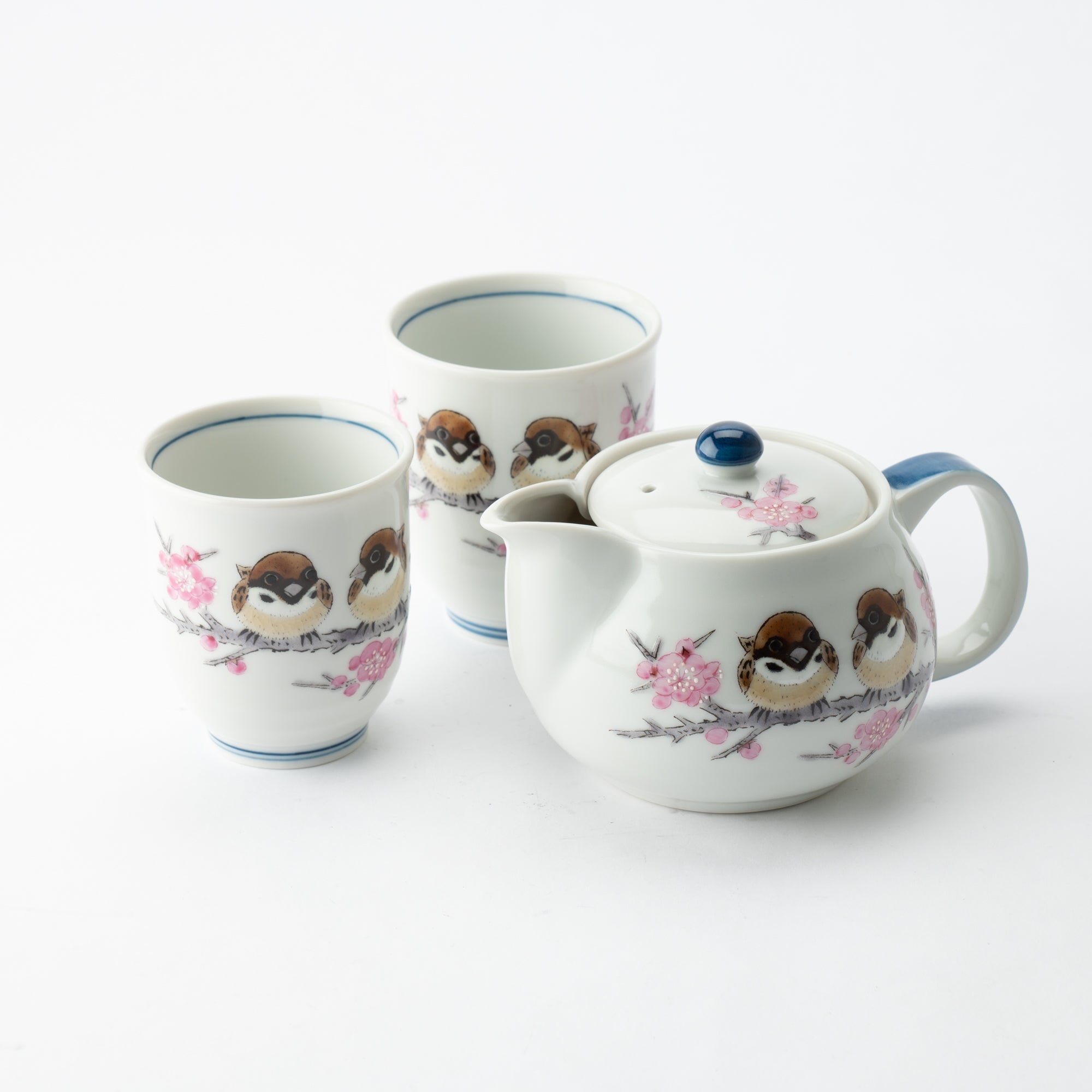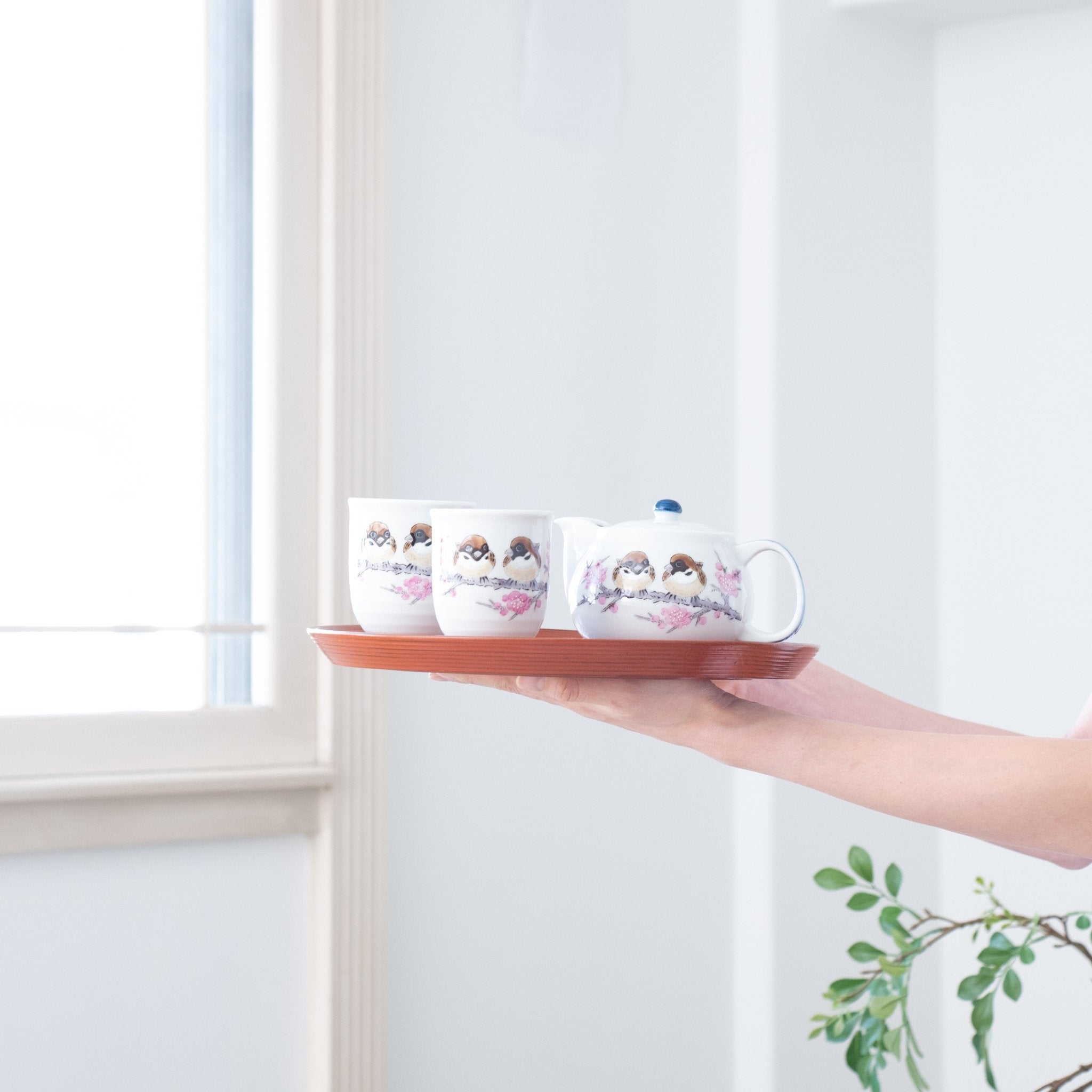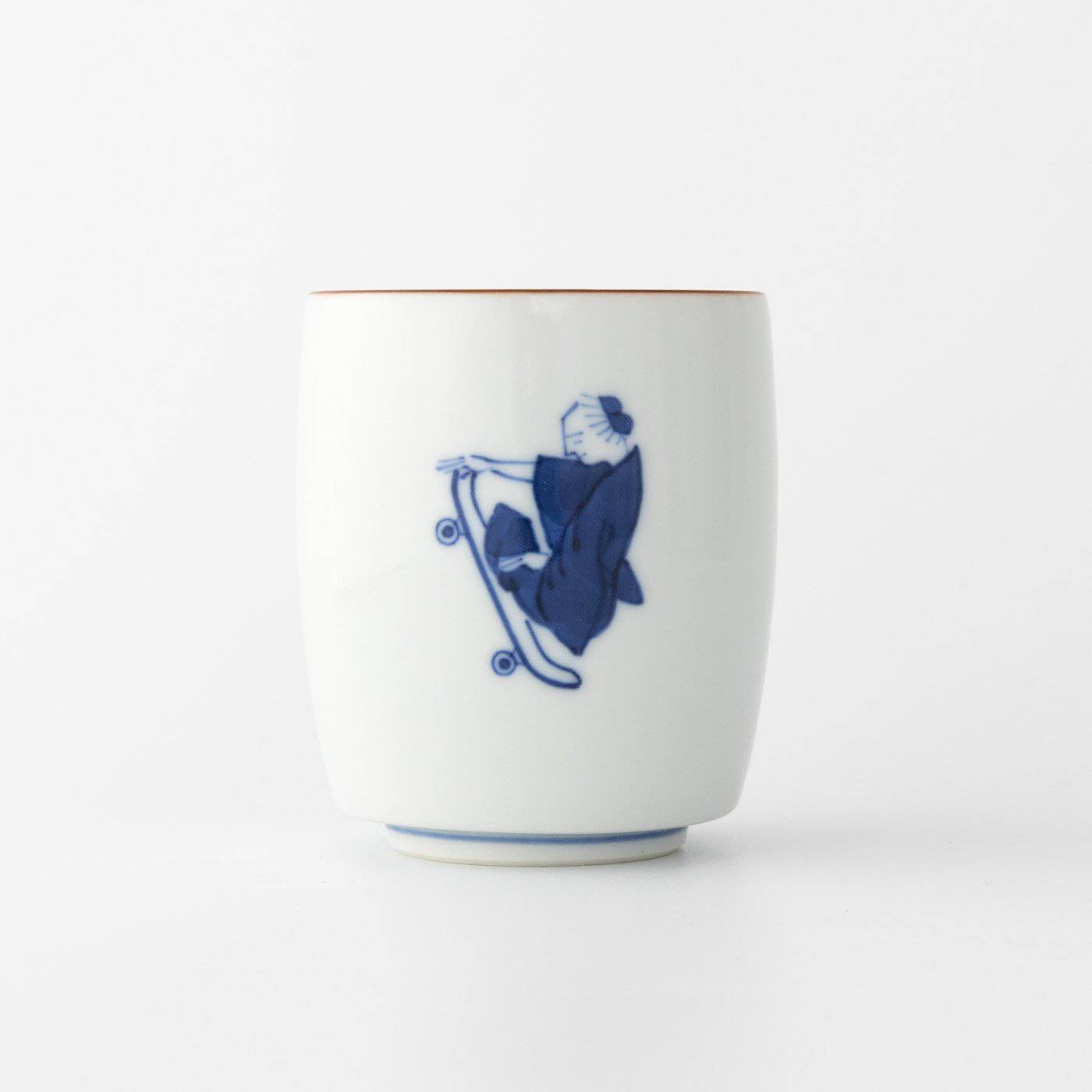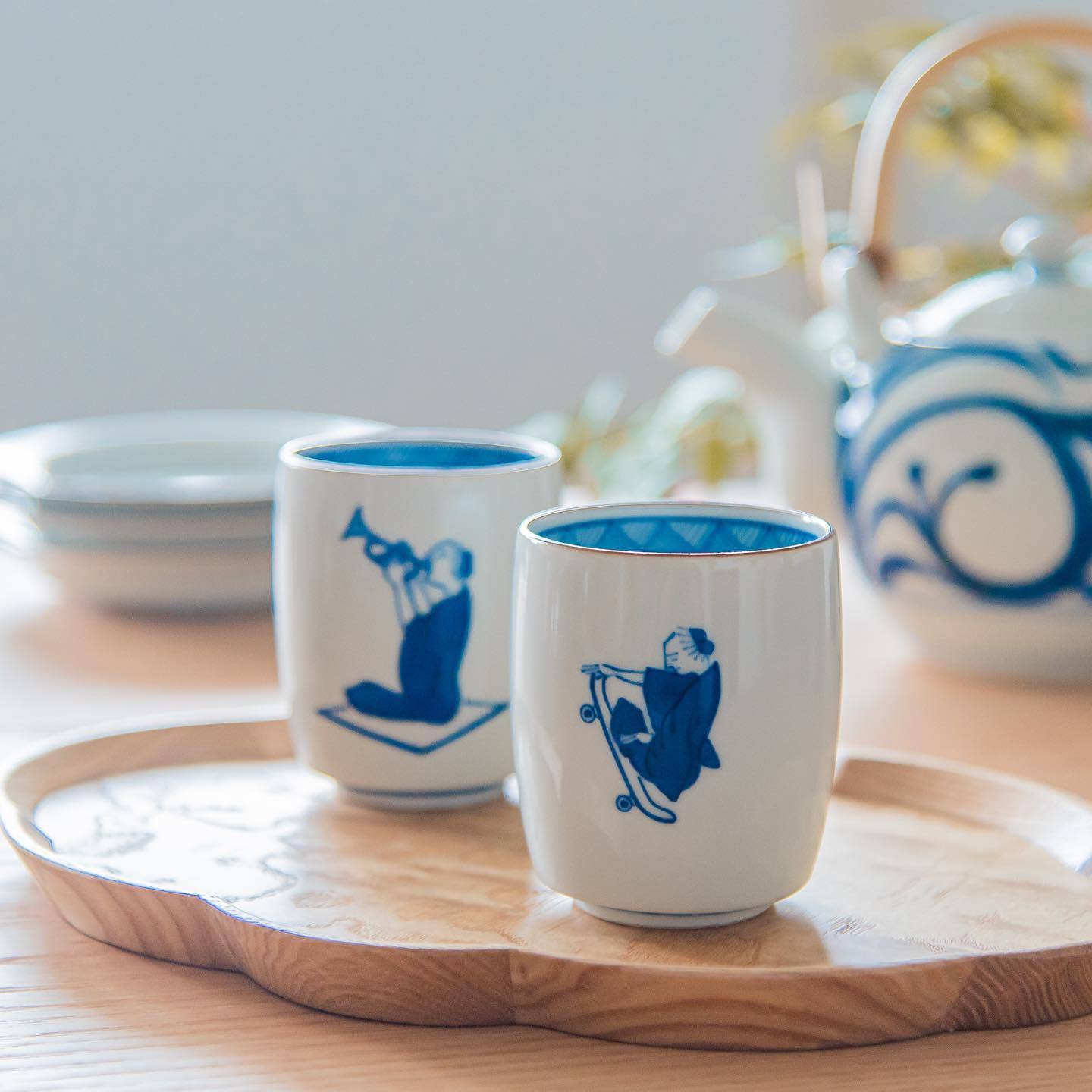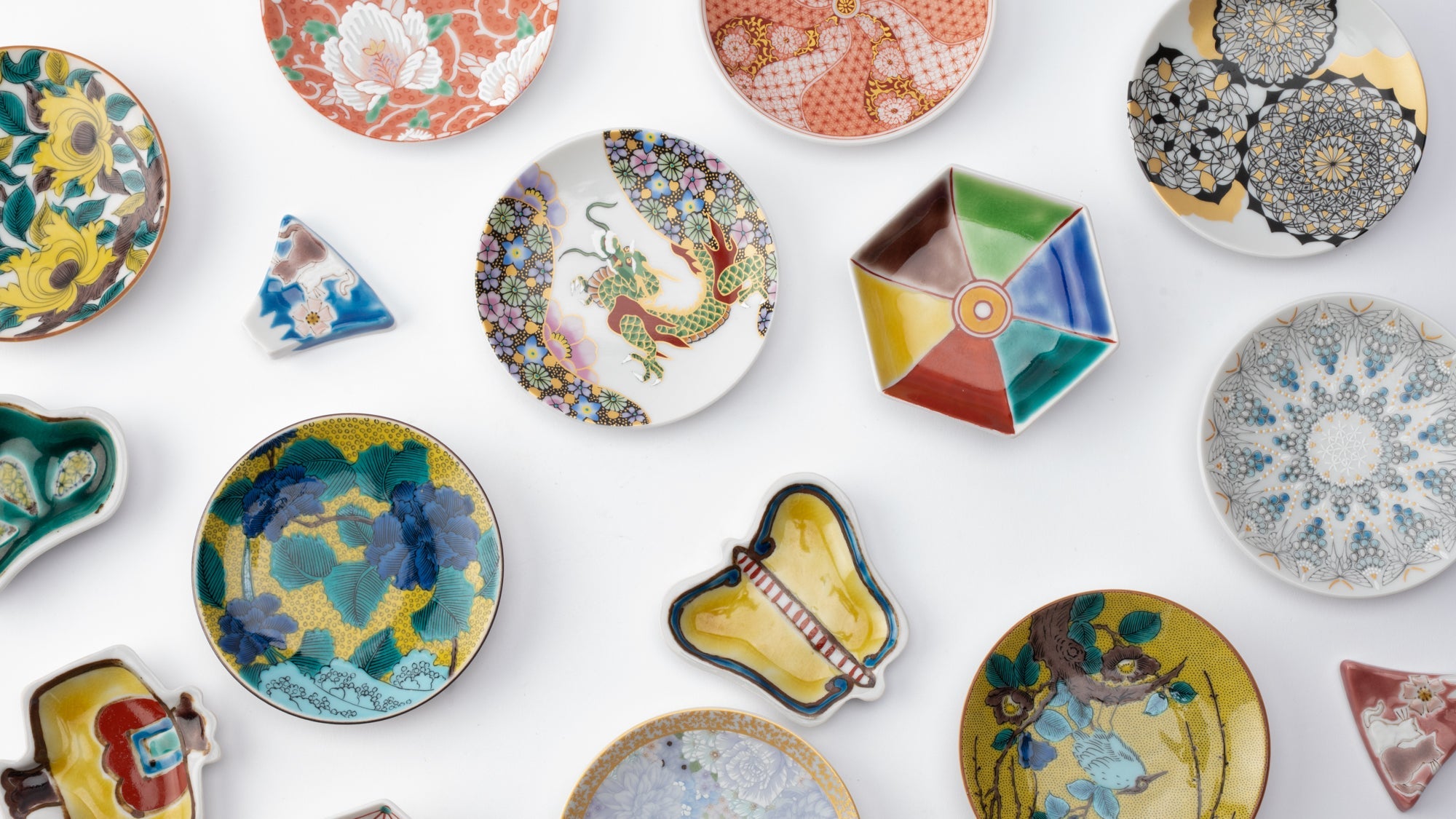
Colors that Tell a 350-Year Story
Kutani Ware
Kutani ware is a pottery produced in the Kaga region of Ishikawa Prefecture, with a history spanning over 350 years. It is characterized by the heavy brilliance of the five colors of navy blue, red, purple, green, and yellow that are applied to the bold and daring lines. Its long history has evolved through the tireless efforts and enthusiasm of people who have sought innovation while maintaining tradition.
Kutani ware is a type of Japanese ceramic that includes both porcelain and stoneware produced in the southern region of Ishikawa Prefecture. It is celebrated for its dynamic, painterly overglaze decoration, often featuring traditional Japanese motifs such as kacho (flowers and birds) and sansui (landscapes). These vivid and expressive designs are found not only on everyday tableware like plates and bowls but also on art pieces.
Over the years, Kutani ware has developed a variety of distinctive painting styles, reflecting changes in artistic taste and technique. Among the most renowned is the use of red and gold patterns, a lavish approach perfected by the artisan Kutani Shoza. This style became internationally recognized during the Meiji era (1868–1912 CE) under the name “Japan Kutani.”
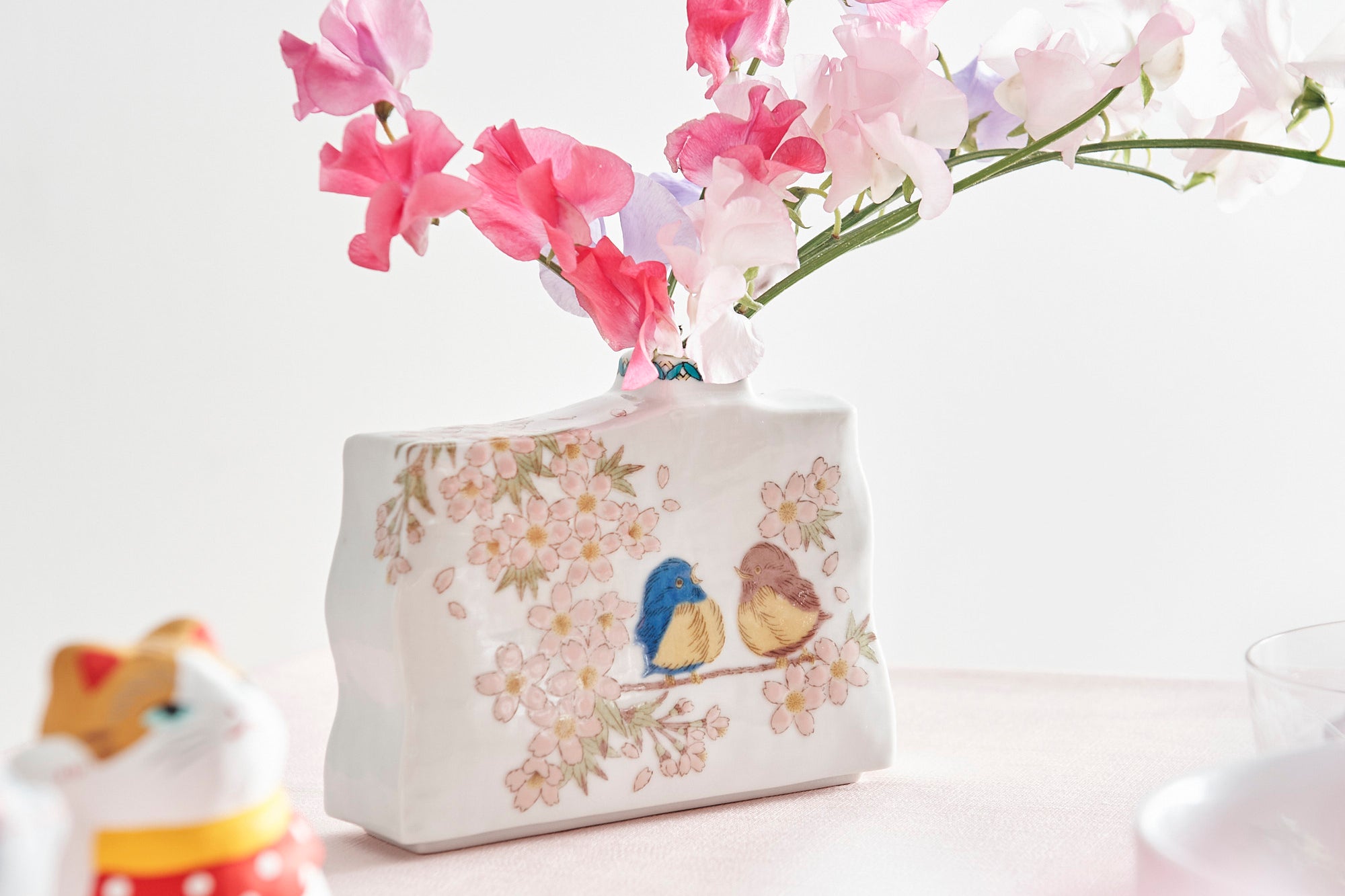
Through its long history, Kutani ware has preserved traditional techniques and aesthetics while continuing to evolve with modern advancements.
Kutani ware originated in 1655 during the early Edo period (1603–1868 CE), when Maeda Toshiharu, the first lord of the Kaga Daishoji Domain, established a kiln in the village of Kutani. This initiative followed the discovery of suitable pottery stones at the Kutani gold mine. The porcelain produced there soon became known as Kutani ware, named after its place of origin.
The kiln in Kutani village quickly gained a strong reputation and became a symbol of the Kaga Daishoji Domain. However, it was closed down approximately fifty years after its founding. The works produced during this brief but influential period are known as ko-Kutani, or “Old Kutani.” These pieces are highly valued today for their vibrant overglaze painting in the signature five-color palette of navy blue, red, purple, green, and yellow—marking an important foundation in the history of Japanese colored porcelain.
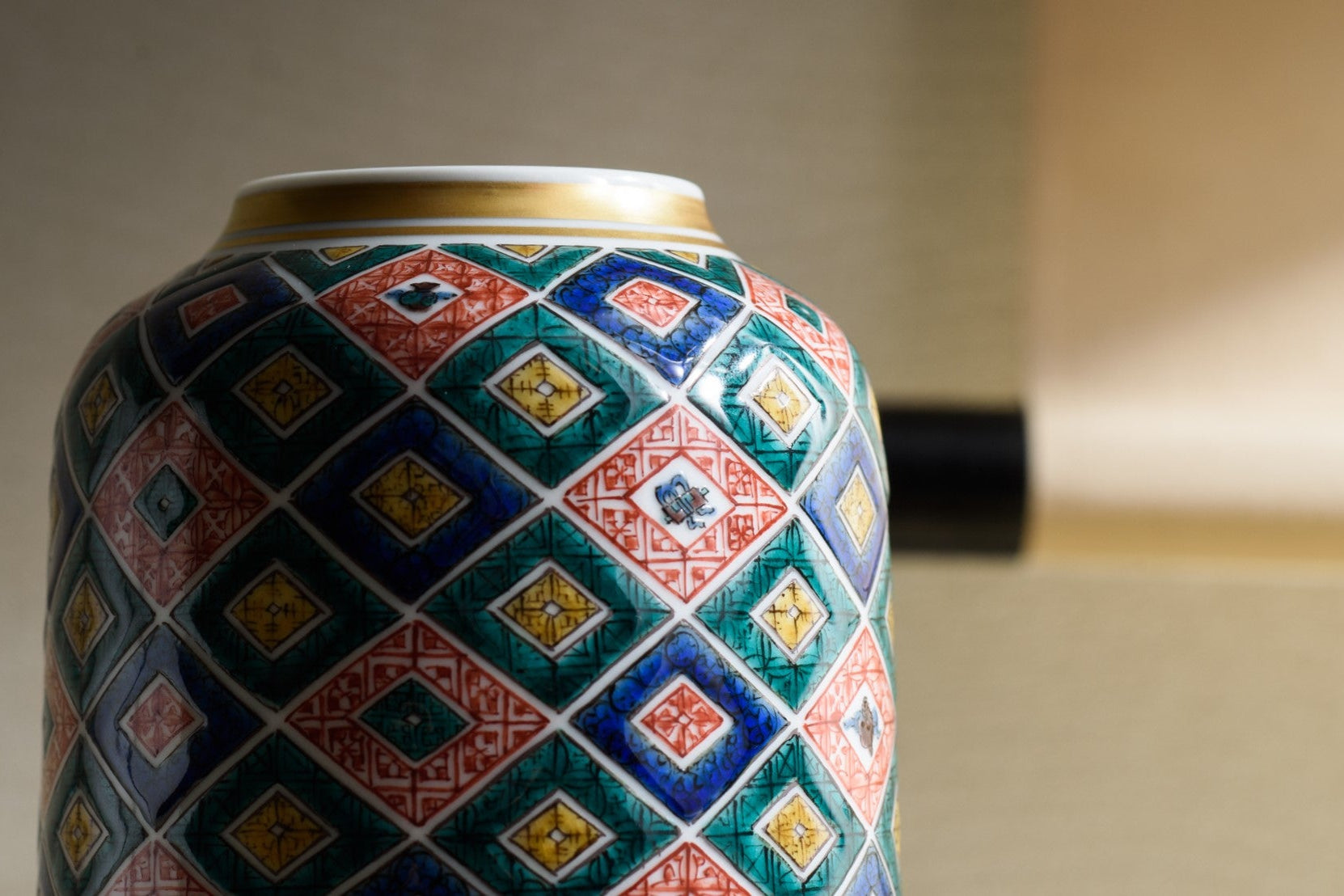
The reasons behind the early closure of the kiln remain uncertain. Several theories have been proposed, including the death of Maeda Toshiharu, economic hardship caused by famine, political conflict within the domain, and possible interference by the Tokugawa shogunate. To this day, the true cause remains a mystery.
Roughly a century later, a revival began as numerous new kilns producing overglaze porcelain were established with support from the Maeda family. This resurgence, known as the Revival of Kutani, introduced new artistic approaches and technical innovations, including both richly colored overglaze porcelain and elegant sometsuke (blue-and-white) porcelain. Over time, the diverse styles developed by individual kilns blended together, laying the groundwork for the modern expression of Kutani ware that flourished after the Meiji era.
For a deeper exploration of Kutani ware’s history, we invite you to read our interview with Nakaya Shinichi, Director of the Kutani Porcelain Art Museum.
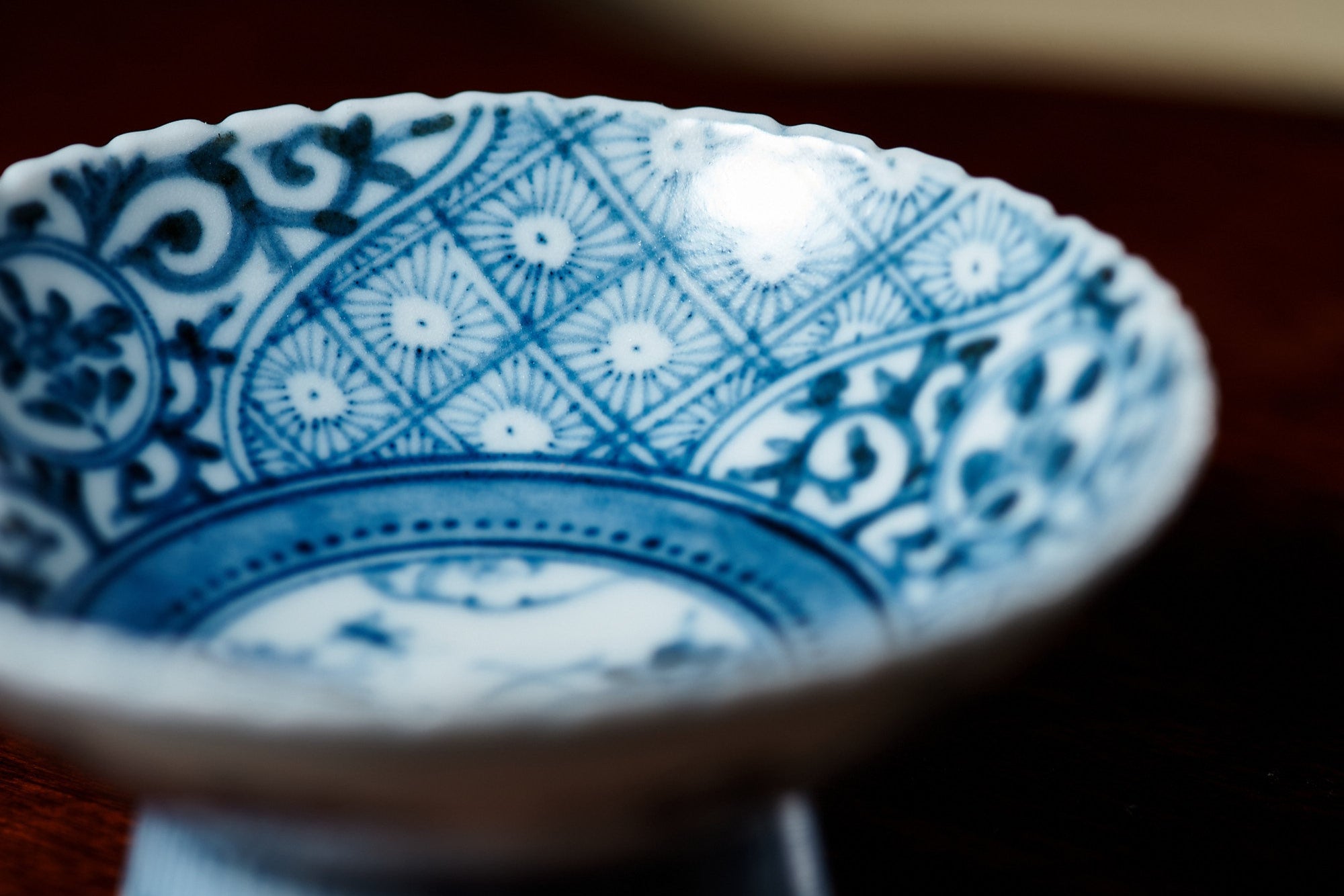
Known for its vivid colors and bold patterns, Kutani ware is crafted through a series of skilled processes: quarrying, clay preparation, molding, firing, and painting. Each step requires precision and dedication, with traditional techniques passed down through generations.

Related posts
Filters




